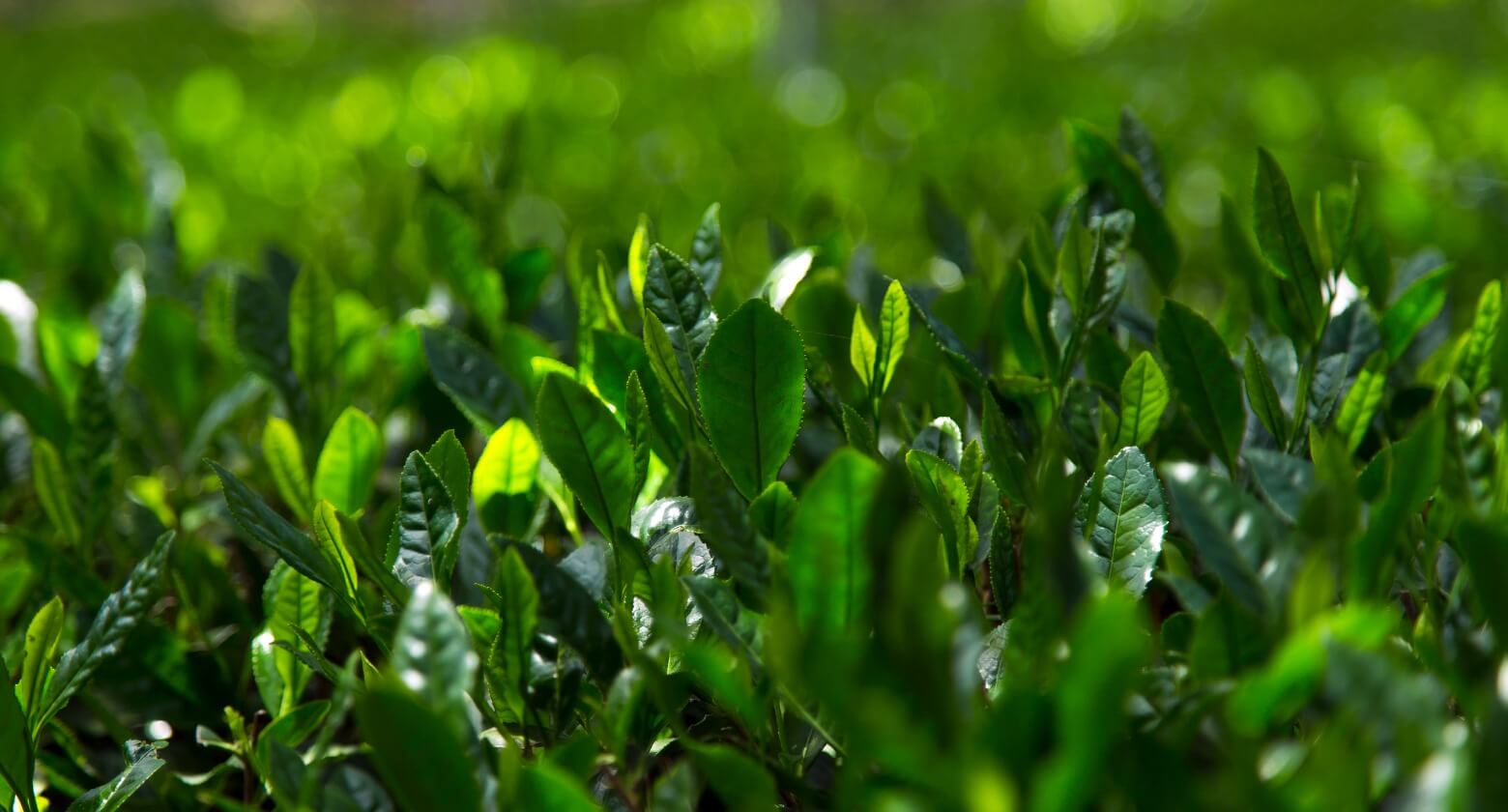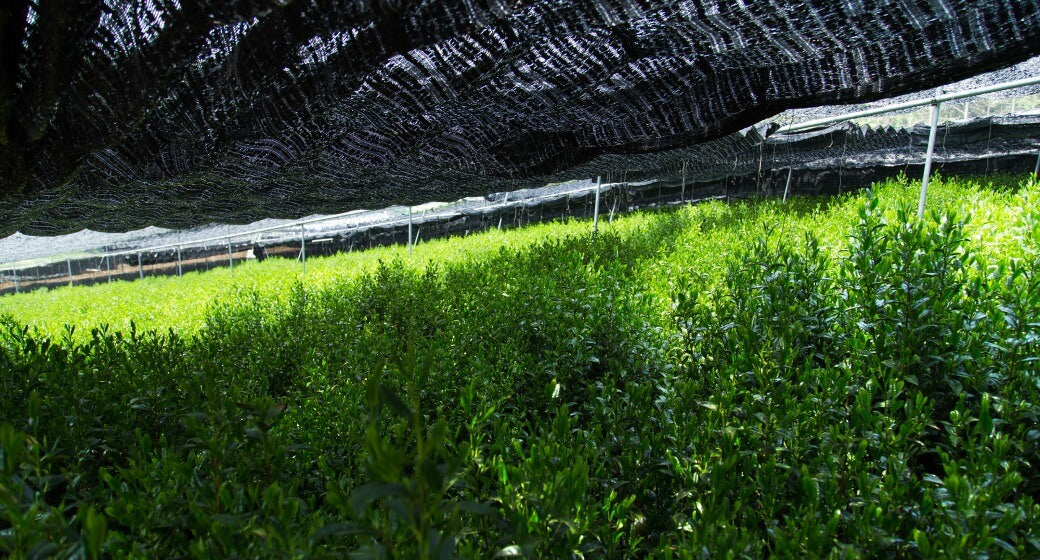All Products List
| Product URL | Product Title | Product Type | Product Price | Product Short Description | Product Description | Product Recipes | Product Tags | Product Stock Status | Product Stock Restock Date |
|---|---|---|---|---|---|---|---|---|---|
| /products/premium-select-matcha | Premium Select Matcha - 20g | Matcha | $53 | This matcha is our exclusive blend from the most prestigious farms in Kyoto. It offers high-class richness, delicate sweetness, and unique tasting notes each year. |
Shelf life:Consume quickly Serving size:Usucha: 2 g (1 tsp.) Koicha: 4 g (2 tsp.) Size:2.1" × 2.1" × 2" Net weight:0.7 oz (20 g) Note: Available while supplies last Every year, Japan's highest-regarded tencha* farmers enter the best of their harvest into tea competitions, hoping to earn prestige and recognition for their efforts. Premium Select Matcha is our exclusive blend, selected from these farmers' competition-level harvests. This blend is available for a short period once per year. Unlike the matcha blends we offer year-round, each release of Premium Select Matcha is one-of-a-kind, never to be tasted again. *Tencha is the name for shade-grown tea leaves ground to make matcha powder. Premium Select Matcha displays the rich, full-bodied character we enjoy in our highest-class matcha. The 2025 release is round, billowy, and easy-to-drink. At first sip, it's soft, approachable, and umami-rich, like well-buttered squash. After swallowing, we're greeted by the slightest hint of elegant bitterness, like the skin of a juicy green grape. Though the finish is long and full, the overall experience feels lightweight. This is an accessible, low-astringency release of Premium Select Matcha, and we recommend it to new matcha drinkers. Seasoned matcha fans will also enjoy the complexity of its taste from beginning to end. We recommend preparing this high-class matcha with just hot or cold water to enjoy its nuances fully. Enjoy it after breakfast to start off the day feeling fresh, or pair it with something light like a piece of dried fruit for an indulgent afternoon break. |
Usucha (Classic Matcha)
The standard matcha whisking method, made to be a normal, liquid consistency.
/blogs/recipes-to-brew-japanese-tea/usucha-thin-matcha
1. Sift matcha
2 g (0.07 oz)
1.5 heaping tea ladles or 1 level teaspoon.
2. Add hot water
60 mL (2 oz)
80°C (176°F)
Pour boiling water into a teacup to cool it to 80°C, then pour into tea bowl.
3. Whisk
15 seconds
Whisk vigorously 15 seconds, making an "M" shape.
Koicha (Thick Matcha)
Matcha made into a rich, thick paste by using less water and more matcha powder per serving.
/blogs/recipes-to-brew-japanese-tea/koicha
1. Sift matcha
4 g (0.14 oz)
3 heaping tea ladles or 2 level teaspoons.
2. Add hot water
30 mL (1 oz)
80°C (176°F)
Cool boiling water to 80°C in teacup, then pour into bowl, just covering matcha powder.
3. Whisk
15 seconds
Mix slowly for 15 seconds moving back and forth.
Cold-Whisked Matcha
Whisking matcha with cold or chilled water brings out a strong sweetness.
/blogs/recipes-to-brew-japanese-tea/cold-whisked-matcha
1. Sift matcha
2 g (0.07 oz)
1.5 heaping tea ladles or 1 level teaspoon.
2. Add cold water
60 mL (2 oz)
5°C (40°F)
Chill water with ice and strain before use.
3. Whisk
15 seconds
Whisk vigorously 15 seconds, making an "M" shape.
|
filterFlavorSuperRich
filterTypeLimited
|
Sold out | This seasonal tea is currently sold out. It will be available again next Spring. |
| /products/nodoka-special-spring-matcha | Nodoka - 20g | Matcha | $18 | Available only in spring, Nodoka has a pleasant balance of umami and subtle sharpness. |
Shelf life:Consume quickly Serving size:Usucha: 2 g (1 tsp.) Latte: 3 g (1.5 tsp.) Koicha: 4 g (2 tsp.) Size:2.1" × 1.7" × 3.7" Net weight:0.7 oz (20 g) Note: While the Nodoka blend and amount is the same as last year, it comes in a newly designed package this year. Nodoka, which is Japanese for “serenity,” was named after the bright, warm feeling we get once the days start getting longer in spring. Nodoka has medium richness and would place above Kan in our regular year-round selection. When you start to whisk it, you’ll notice its fragrance is fresh and dew-like, wafting up from the bowl. Take a sip, and you’ll taste a note of astringency followed soon by layers of sweetness and umami. Pause for a second to experience the aftertaste, which lingers with a balanced, refreshing character. As koicha, this matcha’s nuances are much more prominent, and you can fully appreciate its balance of umami, astringency, and fragrance. In a matcha latte, its mild astringency pairs well with the milk, producing a mellow drink with more umami than our lighter blends. Its package was inspired by the new green growth and pink sakura (cherry tree) blossoms of spring in Kyoto. We hope this design fills you with the spirit of spring during your daily matcha sessions this season. |
Usucha (Classic Matcha)
The standard matcha whisking method, made to be a normal, liquid consistency.
/blogs/recipes-to-brew-japanese-tea/usucha-thin-matcha
1. Sift matcha
2 g (0.07 oz)
1.5 heaping tea ladles or 1 level teaspoon.
2. Add hot water
60 mL (2 oz)
80°C (176°F)
Pour boiling water into a teacup to cool it to 80°C, then pour into tea bowl.
3. Whisk
15 seconds
Whisk vigorously 15 seconds, making an "M" shape.
Matcha Latte
Combine matcha's natural sweetness and crisp green bite with the creamy texture of milk.
/blogs/recipes-to-brew-japanese-tea/matcha-latte-recipe
1. Sift matcha
3 g (0.11 oz)
2 heaping tea ladles or 1.5 level teaspoons.
2. Add hot water
100 mL (3.4 oz)
80°C (176°F)
Pour boiling water into a teacup to cool it to 80°C, then pour into tea bowl.
3. Whisk
15 seconds
Whisk vigorously 15 seconds, making an "M" shape.
4. Add milk
100 mL (3.4 oz)
Pour warm or foamed milk into mug.
Iced Matcha Latte
An iced latte is smooth, refreshing, and easy-to-drink.
/blogs/recipes-to-brew-japanese-tea/iced-matcha-latte
1. Sift matcha
3 g (0.11 oz)
2 heaping tea ladles or 1.5 level teaspoons.
2. Add hot water
100 mL (3.4 oz)
80°C (176°F)
Pour boiling water into a teacup to cool it to 80°C, then pour into tea bowl.
3. Whisk
15 seconds
Whisk vigorously 15 seconds, making an "M" shape.
4. Pour over milk and ice
100 mL (3.4 oz)
Add cold milk and ice to a glass, then pour the matcha mixture on top. Enjoy!
Iced Matcha
Prepare matcha with hot water and cool it rapidly with plenty of ice.
/blogs/recipes-to-brew-japanese-tea/iced-matcha
1. Sift matcha
2 g (0.07 oz)
1.5 heaping tea ladles or 1 level teaspoon.
2. Add hot water
60 mL (2 oz)
80°C (176°F)
Pour boiling water into a teacup to cool it to 80°C, then pour into tea bowl.
3. Whisk
15 seconds
Whisk vigorously 15 seconds, making an "M" shape.
4. Add ice
1-2 ice cubes
Add ice, mix slightly, and it's ready!
|
filterTypeLimited
|
Sold out | This seasonal tea is currently sold out. It will be available again next Spring. |
| /products/tsukikage-special-autumn-matcha | Tsukikage - 20g | Matcha | $18 | Available only in the fall, Tsukikage has a pleasant balance of umami and subtle sharpness. |
Shelf life:Consume quickly Serving size:Usucha: 2 g (1 tsp.) Latte: 3 g (1.5 tsp.) Koicha: 4 g (2 tsp.) Size:2.1" × 1.7" × 3.7" Net weight:0.7 oz (20 g) Note: Available from September to late November, depending on supply. Brisk fall afternoons call for matcha paired with sweets, cookies, and desserts. We blend Tsukikage to be the perfect matcha for daily matcha drinking this season. When you prepare Tsukikage, the first thing you notice is its vibrant color. When you take a sip, you’ll first taste its crisp astringency, followed by layers of sweetness and umami. It’s a not-too-light and not-too-rich blend, popular with matcha drinkers of all levels. Try Tsukikage straight to enjoy its natural sweetness and nuances. Matcha fans will appreciate it as koicha, where it displays a more robust flavor. We also recommend it in a matcha latte, where its mild astringency pairs well with the creaminess of the milk. The moon is at its most beautiful in fall, and for ages Japanese poets have written of the moon as a symbol of this season. Tsukikage – our autumn-exclusive matcha – is named after the light of the moon. We designed Tsukikage’s package after the season. Flowers of the tea plant—which blooms in October in Kyoto—are drawn on a deep brown backdrop. We often suggest this tea for any small gift giving occasions this season. |
Usucha (Classic Matcha)
The standard matcha whisking method, made to be a normal, liquid consistency.
/blogs/recipes-to-brew-japanese-tea/usucha-thin-matcha
1. Sift matcha
2 g (0.07 oz)
1.5 heaping tea ladles or 1 level teaspoon.
2. Add hot water
60 mL (2 oz)
80°C (176°F)
Pour boiling water into a teacup to cool it to 80°C, then pour into tea bowl.
3. Whisk
15 seconds
Whisk vigorously 15 seconds, making an "M" shape.
Matcha Latte
Combine matcha's natural sweetness and crisp green bite with the creamy texture of milk.
/blogs/recipes-to-brew-japanese-tea/matcha-latte-recipe
1. Sift matcha
3 g (0.11 oz)
2 heaping tea ladles or 1.5 level teaspoons.
2. Add hot water
100 mL (3.4 oz)
80°C (176°F)
Pour boiling water into a teacup to cool it to 80°C, then pour into tea bowl.
3. Whisk
15 seconds
Whisk vigorously 15 seconds, making an "M" shape.
4. Add milk
100 mL (3.4 oz)
Pour warm or foamed milk into mug.
Iced Matcha
Prepare matcha with hot water and cool it rapidly with plenty of ice.
/blogs/recipes-to-brew-japanese-tea/iced-matcha
1. Sift matcha
2 g (0.07 oz)
1.5 heaping tea ladles or 1 level teaspoon.
2. Add hot water
60 mL (2 oz)
80°C (176°F)
Pour boiling water into a teacup to cool it to 80°C, then pour into tea bowl.
3. Whisk
15 seconds
Whisk vigorously 15 seconds, making an "M" shape.
4. Add ice
1-2 ice cubes
Add ice, mix slightly, and it's ready!
Iced Matcha Latte
An iced latte is smooth, refreshing, and easy-to-drink.
/blogs/recipes-to-brew-japanese-tea/iced-matcha-latte
1. Sift matcha
3 g (0.11 oz)
2 heaping tea ladles or 1.5 level teaspoons.
2. Add hot water
100 mL (3.4 oz)
80°C (176°F)
Pour boiling water into a teacup to cool it to 80°C, then pour into tea bowl.
3. Whisk
15 seconds
Whisk vigorously 15 seconds, making an "M" shape.
4. Pour over milk and ice
100 mL (3.4 oz)
Add cold milk and ice to a glass, then pour the matcha mixture on top. Enjoy!
|
filterTypeLimited
|
Sold out | This seasonal tea is currently sold out. It will be available again next Fall. |
| /products/new-years-matcha | New Year's Matcha 2025 (Mi-no-mukashi) - 20g | Matcha | $29 | Stride into the new year with this special release matcha. |
Shelf life:Consume quickly Serving size:Usucha: 2 g (1 tsp.) Koicha: 4 g (2 tsp.) Size:2.1" × 2.1" × 2" Net weight:0.7 oz (20 g) Note: Available early December to mid-January, while supplies last. Our New Year’s Matcha release for 2025, Mi-no-mukashi, has lush, round umami and natural sweetness. It has a warm, almost toasty fragrance, and its aftertaste is clear and medium-short, so it’s easy to drink sip after sip. Each year, this release is blended to have a round character that is comforting and invigorating at the holidays and at New Year’s—and this year exhibits those characteristics beautifully as well. We feel confident recommending it even to new matcha drinkers. We recommend preparing this matcha straight with water as koicha or usucha, to experience its deep fragrance, pure umami, and beautiful clarity. For matcha fans, try preparing it with a little less water than you typically use. A more-concentrated recipe will highlight its rich character nicely. Matcha latte fans will find it makes one of the smoothest, easiest-to-drink lattes you’ve ever tried. New Year’s is the most important holiday in Japan, and drinking matcha is a part of the celebrations. Traditionally, this New Year’s Matcha is used in the first tea ceremony of the year (hatsugama). More casually, families will sit down at home with a bowl of matcha during their holiday together, enjoying the warmth of each other’s company. Beyond these traditions, this is an accessible matcha for personal enjoyment, and it makes for a thoughtful gift. In celebration of 2025, the Year of the Snake, this special label depicts a traditional toy snake. We hope this cute design will add to the delight of your New Year’s festivities and matcha moments this winter. The meaning of the name Mi-no-mukashi: Mi means “snake” in Japanese. |
Usucha (Classic Matcha)
The standard matcha whisking method, made to be a normal, liquid consistency.
/blogs/recipes-to-brew-japanese-tea/usucha-thin-matcha
1. Sift matcha
2 g (0.07 oz)
1.5 heaping tea ladles or 1 level teaspoon.
2. Add hot water
60 mL (2 oz)
80°C (176°F)
Pour boiling water into a teacup to cool it to 80°C, then pour into tea bowl.
3. Whisk
15 seconds
Whisk vigorously 15 seconds, making an "M" shape.
Koicha (Thick Matcha)
Matcha made into a rich, thick paste by using less water and more matcha powder per serving.
/blogs/recipes-to-brew-japanese-tea/koicha
1. Sift matcha
4 g (0.14 oz)
3 heaping tea ladles or 2 level teaspoons.
2. Add hot water
30 mL (1 oz)
80°C (176°F)
Cool boiling water to 80°C in teacup, then pour into bowl, just covering matcha powder.
3. Whisk
15 seconds
Mix slowly for 15 seconds moving back and forth.
Cold-Whisked Matcha
Whisking matcha with cold or chilled water brings out a strong sweetness.
/blogs/recipes-to-brew-japanese-tea/cold-whisked-matcha
1. Sift matcha
2 g (0.07 oz)
1.5 heaping tea ladles or 1 level teaspoon.
2. Add cold water
60 mL (2 oz)
5°C (40°F)
Chill water with ice and strain before use.
3. Whisk
15 seconds
Whisk vigorously 15 seconds, making an "M" shape.
|
filterTypeLimited
|
Sold out | This seasonal tea is currently sold out. It will be available again next New Year. |
| /products/new-harvest-matcha | New Harvest Matcha 2025 - 20g | Matcha | $40 | This limited release has a sweet fragrance and a balance of refined umami and fresh astringency. Perfect for enjoying iced in summer. |
Shelf life:Consume quickly Serving size:Usucha: 2 g (1 tsp.) Koicha: 4 g (2 tsp.) Size:2.1" × 2.1" × 2" Net weight:0.7 oz (20 g) New Harvest Matcha 2025 is fresh, crisp, and lively: a pure expression of the energy of just-picked tea leaves. On the palate, this year’s zesty green bite tastes refreshing, while in the undertones its refined umami and natural sweetness are mellow and refined. Its aroma is green, sweet, and a bit tropical - like tomatoes and cantaloupe - while its color is the most radiant in our offering. This is a matcha on par with Ummon or (currently unavailable) Kuon, and of the same quality as last year’s release. However, the verdant energy and bright astringency unique to this year’s release really set it apart from other similar ranking blends. Typically, matcha is made from leaves that have been rested for a period of many months. The resting process develops and matures the leaves, producing a complex and well-developed character. Our New Harvest Matcha, on the other hand, is a unique release. It was made by grinding a selection of new tea leaves harvested this year, 2025, right after they were picked. As a result, this matcha has a fresh and fragrant character that stands out in our selection.
Each year we look forward to tasting this limited tea’s unique character, as its fragrance and tasting notes vary depending on the weather and growing conditions. While the nuances may change, it compares to rich category blends from our year-round offering.
Try this year’s New Harvest Matcha first as iced matcha served in a glass, for cool revitalization on a hot summer afternoon. Matcha fans will enjoy it as koicha, where it is punchy and eye-opening. As regular usucha, it has a bright, almost fruity aroma. In a latte, its vivid color is stunning, and the fresh astringency pairs well with the milk. Though, purists may prefer to drink it mixed just with water to experience its full complexities. |
Usucha (Classic Matcha)
The standard matcha whisking method, made to be a normal, liquid consistency.
/blogs/recipes-to-brew-japanese-tea/usucha-thin-matcha
1. Sift matcha
2 g (0.07 oz)
1.5 heaping tea ladles or 1 level teaspoon.
2. Add hot water
60 mL (2 oz)
80°C (176°F)
Pour boiling water into a teacup to cool it to 80°C, then pour into tea bowl.
3. Whisk
15 seconds
Whisk vigorously 15 seconds, making an "M" shape.
Iced Matcha
Prepare matcha with hot water and cool it rapidly with plenty of ice.
/blogs/recipes-to-brew-japanese-tea/iced-matcha
1. Sift matcha
2 g (0.07 oz)
1.5 heaping tea ladles or 1 level teaspoon.
2. Add hot water
60 mL (2 oz)
80°C (176°F)
Pour boiling water into a teacup to cool it to 80°C, then pour into tea bowl.
3. Whisk
15 seconds
Whisk vigorously 15 seconds, making an "M" shape.
4. Add ice
1-2 ice cubes
Add ice, mix slightly, and it's ready!
Iced Matcha Latte
An iced latte is smooth, refreshing, and easy-to-drink.
/blogs/recipes-to-brew-japanese-tea/iced-matcha-latte
1. Sift matcha
3 g (0.11 oz)
2 heaping tea ladles or 1.5 level teaspoons.
2. Add hot water
100 mL (3.4 oz)
80°C (176°F)
Pour boiling water into a teacup to cool it to 80°C, then pour into tea bowl.
3. Whisk
15 seconds
Whisk vigorously 15 seconds, making an "M" shape.
4. Pour over milk and ice
100 mL (3.4 oz)
Add cold milk and ice to a glass, then pour the matcha mixture on top. Enjoy!
|
filterTypeLimited
|
Sold out | This seasonal tea is currently sold out. It will be available again next Spring. |
| /products/kanza | Kanza - 20g | Matcha | $72 | Kanza is the highest-ranking matcha in our lineup. Its beautifully strong fragrance, unwavering umami, clean aftertaste, and silky character are unparalleled in our collection. |
Shelf life:Consume quickly Serving size:Usucha: 2 g (1 tsp.) Koicha: 4 g (2 tsp.) Size:2.1" × 2.1" × 2" Net weight:0.7 oz (20 g) Mirume - a word used by tea professionals in Japan to describe the ultra-young, tender, and delicate character of certain high-class teas. Kanza is the newest addition to our matcha offering. After receiving feedback from fans of our full-bodied matcha blends, our master blenders prepared this blend to be the most luscious matcha in our lineup. They have shared their personal tasting comments on this tea below. “In Kanza you can enjoy a strong and rich umami, with an aftertaste that has remarkable
depth. It reminds me of an excellent full-bodied red wine. I will reach for Kanza when I want to have a silent
moment alone with my thoughts. Its lush character deserves quiet attention and focus.” “Both Kanza’s fragrance and flavor are unequivocally powerful. From the first moment you take
a sip to the end of the finish, it has a strong, unwavering umami, and no astringency. But make no mistake; it
is not at all light-bodied.” “Typical of a top class matcha, Kanza has a tender, mirume character, which is balanced
by its bright fragrance. I can tell it has been painstakingly, carefully shaded, from its umami, which is
neither fluffy nor sharp-edged, and from its fragrance, which is in a class of its own.” “Its color is deep blue and vivid. Its fragrance has a distinct sweet note, and I felt it represents the classic Ippodo character overall. Its sweetness and umami are strong, and it has a clean aftertaste, with the mirume character of a matcha of this caliber. Kanza is a matcha I want to relax and take my time with. Prepare it by using a just-warm temperature water, to
bring out its top class sweetness and umami. Or, choose to use a hotter temperature water to emphasize its
remarkable fragrance. This will produce a cleaner, crisper taste that I can recommend just as well.” |
Usucha (Classic Matcha)
The standard matcha whisking method, made to be a normal, liquid consistency.
/blogs/recipes-to-brew-japanese-tea/usucha-thin-matcha
1. Sift matcha
2 g (0.07 oz)
1.5 heaping tea ladles or 1 level teaspoon.
2. Add hot water
60 mL (2 oz)
80°C (176°F)
Pour boiling water into a teacup to cool it to 80°C, then pour into tea bowl.
3. Whisk
15 seconds
Whisk vigorously 15 seconds, making an "M" shape.
Koicha (Thick Matcha)
Matcha made into a rich, thick paste by using less water and more matcha powder per serving.
/blogs/recipes-to-brew-japanese-tea/koicha
1. Sift matcha
4 g (0.14 oz)
3 heaping tea ladles or 2 level teaspoons.
2. Add hot water
30 mL (1 oz)
80°C (176°F)
Cool boiling water to 80°C in teacup, then pour into bowl, just covering matcha powder.
3. Whisk
15 seconds
Mix slowly for 15 seconds moving back and forth.
Cold-Whisked Matcha
Whisking matcha with cold or chilled water brings out a strong sweetness.
/blogs/recipes-to-brew-japanese-tea/cold-whisked-matcha
1. Sift matcha
2 g (0.07 oz)
1.5 heaping tea ladles or 1 level teaspoon.
2. Add cold water
60 mL (2 oz)
5°C (40°F)
Chill water with ice and strain before use.
3. Whisk
15 seconds
Whisk vigorously 15 seconds, making an "M" shape.
|
filterFlavorSuperRich
|
Unavailable | We don't have an expected restocking date. Please read The Current State of Matcha for more information. |
| /products/kuon-eternity | Kuon (Eternity) - 20g | Matcha | $49 | Kuon has a vivid green color, a long aftertaste, and rich umami - hallmarks of a high-class matcha. It stands out for its wonderfully bright fragrance. |
Shelf life:Consume quickly Serving size:Usucha: 2 g (1 tsp.) Koicha: 4 g (2 tsp.) Size:2.1" × 2.1" × 2" Net weight:0.7 oz (20 g) Mirume - a word used by tea professionals in Japan to describe the ultra-young, tender, and delicate character of certain high-class teas. Kuon is a rich, elegant matcha blend that was originally exclusive to the Ippodo Tea New York Store. After seeing its popularity among matcha fans in New York, we added it to our online lineup. Our blending and tasting team members have shared their personal tasting comments on this tea below. “Kuon feels clean and refreshing, in both the umami at the start and in the aftertaste. Comparing it side-by-side with Kanza, its crisp aftertaste reminds me of the feeling I get when drinking white wine. I enjoy drinking Kuon in the morning while I’m still waking up. Taking a sip of its refreshing, crisp taste is like pressing a start button for my body and my spirits. I would also suggest pairing it with something a little sweet, for a palate-cleansing experience.” “Kuon has a strong fragrance and a deep flavor, and a while after the first impression, I begin to very slightly sense a touch of crisp astringency.” “Kuon's strongest characteristic is its fragrance, which is striking from the moment you start to whisk it. Underneath the bright fragrance, I notice its tender, mirume* character, a sign of a top class matcha. This balance of tenderness and fragrance defines this unique tea. Its umami is indeed rich, and I can feel a little youthful energy in it. The aftertaste is just right, and fades with a light, clean finish. After trying it as regular usucha and koicha, I suggest preparing it whisked with cold water, to emphasize the beautiful aspects of its fragrance. I think it also pairs well with sweets.” “Kuon’s color is deep blue and vivid, and its fragrance has a strong presence. Given the quality of its fragrance, it is undeniably a classic Ippodo matcha. Its taste is dominated by sweetness and umami, and its flavor feels round. Given its round sweetness and umami, I would recommend whisking it at a somewhat low temperature warm water, or even with cold water, for a deep experience. Try pairing it with different sweets, or drink it on its own, straight; I can imagine enjoying it in a lot of different scenarios.” |
Usucha (Classic Matcha)
The standard matcha whisking method, made to be a normal, liquid consistency.
/blogs/recipes-to-brew-japanese-tea/usucha-thin-matcha
1. Sift matcha
2 g (0.07 oz)
1.5 heaping tea ladles or 1 level teaspoon.
2. Add hot water
60 mL (2 oz)
80°C (176°F)
Pour boiling water into a teacup to cool it to 80°C, then pour into tea bowl.
3. Whisk
15 seconds
Whisk vigorously 15 seconds, making an "M" shape.
Koicha (Thick Matcha)
Matcha made into a rich, thick paste by using less water and more matcha powder per serving.
/blogs/recipes-to-brew-japanese-tea/koicha
1. Sift matcha
4 g (0.14 oz)
3 heaping tea ladles or 2 level teaspoons.
2. Add hot water
30 mL (1 oz)
80°C (176°F)
Cool boiling water to 80°C in teacup, then pour into bowl, just covering matcha powder.
3. Whisk
15 seconds
Mix slowly for 15 seconds moving back and forth.
Cold-Whisked Matcha
Whisking matcha with cold or chilled water brings out a strong sweetness.
/blogs/recipes-to-brew-japanese-tea/cold-whisked-matcha
1. Sift matcha
2 g (0.07 oz)
1.5 heaping tea ladles or 1 level teaspoon.
2. Add cold water
60 mL (2 oz)
5°C (40°F)
Chill water with ice and strain before use.
3. Whisk
15 seconds
Whisk vigorously 15 seconds, making an "M" shape.
|
filterFlavorSuperRich
|
Unavailable | We don't have an expected restocking date. Please read The Current State of Matcha for more information. |
| /products/ummon-no-mukashi-40g | Ummon (40g Can) | Matcha | $58 | Ummon has a powerful umami, deep emerald green color, and sweet aroma. This matcha is a treat to be savored. |
Shelf life:Consume quickly Serving size:Usucha: 2 g (1 tsp.) Koicha: 4 g (2 tsp.) Size:2.1" × 2.1" × 2.6" Net weight:1.4 oz (40 g) For decades Ummon has been one of the richest, most full-forced matcha blends in our selection. Our blending and tasting team members have shared their personal tasting comments on this tea below. “Overall, Ummon is a friendly, accessible matcha. It has a pleasant taste that envelops your palate, from the sweetness and umami at first sip, to the moment you arrive at the aftertaste.
Since Ummon is so universally well-liked, I will prepare it for family, friends, and just
about anyone else. Whatever the situation, I recommend preparing it a little on the strong
side so that you can feel its full impact.”
“Ummon has an abundant, rich fragrance at its core, and its bright umami feels strong. This
is not a reserved nor a light tasting matcha. Its umami is balanced by a not-unpleasant
astringency that you feel as it goes down.” “The quality that defines Ummon best is the richness of its flavor. Among our matcha, it is the top representative of the richness and bright fragrance that make the classic Ippodo character. The rich sensation comes through in its umami taste, not in astringency nor bitterness.
This is a matcha I feel comfortable preparing for and drinking with tea connoisseurs.” “Ummon’s color has a strong blue tinge. Its fragrance has just the right level of strength, and it has the classic Ippodo character. Its sweetness and umami are full, and it leaves a powerful impression that continues through the aftertaste.
Since it has such a strong presence, you can enjoy it as either koicha (thick matcha),
usucha (thin matcha), or both. Given its full sweetness and umami and its long finish, I
like to enjoy it in a lot of different scenarios. However, if I had to choose, my favorite
is to enjoy it at teatime paired with sweets.” |
Usucha (Classic Matcha)
The standard matcha whisking method, made to be a normal, liquid consistency.
/blogs/recipes-to-brew-japanese-tea/usucha-thin-matcha
1. Sift matcha
2 g (0.07 oz)
1.5 heaping tea ladles or 1 level teaspoon.
2. Add hot water
60 mL (2 oz)
80°C (176°F)
Pour boiling water into a teacup to cool it to 80°C, then pour into tea bowl.
3. Whisk
15 seconds
Whisk vigorously 15 seconds, making an "M" shape.
Koicha (Thick Matcha)
Matcha made into a rich, thick paste by using less water and more matcha powder per serving.
/blogs/recipes-to-brew-japanese-tea/koicha
1. Sift matcha
4 g (0.14 oz)
3 heaping tea ladles or 2 level teaspoons.
2. Add hot water
30 mL (1 oz)
80°C (176°F)
Cool boiling water to 80°C in teacup, then pour into bowl, just covering matcha powder.
3. Whisk
15 seconds
Mix slowly for 15 seconds moving back and forth.
Iced Matcha
Prepare matcha with hot water and cool it rapidly with plenty of ice.
/blogs/recipes-to-brew-japanese-tea/iced-matcha
1. Sift matcha
2 g (0.07 oz)
1.5 heaping tea ladles or 1 level teaspoon.
2. Add hot water
60 mL (2 oz)
80°C (176°F)
Pour boiling water into a teacup to cool it to 80°C, then pour into tea bowl.
3. Whisk
15 seconds
Whisk vigorously 15 seconds, making an "M" shape.
4. Add ice
1-2 ice cubes
Add ice, mix slightly, and it's ready!
Cold-Whisked Matcha
Whisking matcha with cold or chilled water brings out a strong sweetness.
/blogs/recipes-to-brew-japanese-tea/cold-whisked-matcha
1. Sift matcha
2 g (0.07 oz)
1.5 heaping tea ladles or 1 level teaspoon.
2. Add cold water
60 mL (2 oz)
5°C (40°F)
Chill water with ice and strain before use.
3. Whisk
15 seconds
Whisk vigorously 15 seconds, making an "M" shape.
|
filterFlavorSuperRich
|
Sold out | Expected in stock by Monday, September 01 |
| /products/ummon-no-mukashi-20g | Ummon - 20g | Matcha | $32 | Ummon has a powerful umami, deep emerald green color, and sweet aroma. This matcha is a treat to be savored. |
Shelf life:Consume quickly Serving size:Usucha: 2 g (1 tsp.) Koicha: 4 g (2 tsp.) Size:2.1" × 2.1" × 2" Net weight:0.7 oz (20 g) For decades Ummon has been one of the richest, most full-forced matcha blends in our selection. Our blending and tasting team members have shared their personal tasting comments on this tea below. “Overall, Ummon is a friendly, accessible matcha. It has a pleasant taste that envelops your palate, from the sweetness and umami at first sip, to the moment you arrive at the aftertaste.
Since Ummon is so universally well-liked, I will prepare it for family, friends, and just
about anyone else. Whatever the situation, I recommend preparing it a little on the strong
side so that you can feel its full impact.”
“Ummon has an abundant, rich fragrance at its core, and its bright umami feels strong. This
is not a reserved nor a light tasting matcha. Its umami is balanced by a not-unpleasant
astringency that you feel as it goes down.” “The quality that defines Ummon best is the richness of its flavor. Among our matcha, it is the top representative of the richness and bright fragrance that make the classic Ippodo character. The rich sensation comes through in its umami taste, not in astringency nor bitterness.
This is a matcha I feel comfortable preparing for and drinking with tea connoisseurs.” “Ummon’s color has a strong blue tinge. Its fragrance has just the right level of strength, and it has the classic Ippodo character. Its sweetness and umami are full, and it leaves a powerful impression that continues through the aftertaste.
Since it has such a strong presence, you can enjoy it as either koicha (thick matcha),
usucha (thin matcha), or both. Given its full sweetness and umami and its long finish, I
like to enjoy it in a lot of different scenarios. However, if I had to choose, my favorite
is to enjoy it at teatime paired with sweets.” |
Usucha (Classic Matcha)
The standard matcha whisking method, made to be a normal, liquid consistency.
/blogs/recipes-to-brew-japanese-tea/usucha-thin-matcha
1. Sift matcha
2 g (0.07 oz)
1.5 heaping tea ladles or 1 level teaspoon.
2. Add hot water
60 mL (2 oz)
80°C (176°F)
Pour boiling water into a teacup to cool it to 80°C, then pour into tea bowl.
3. Whisk
15 seconds
Whisk vigorously 15 seconds, making an "M" shape.
Koicha (Thick Matcha)
Matcha made into a rich, thick paste by using less water and more matcha powder per serving.
/blogs/recipes-to-brew-japanese-tea/koicha
1. Sift matcha
4 g (0.14 oz)
3 heaping tea ladles or 2 level teaspoons.
2. Add hot water
30 mL (1 oz)
80°C (176°F)
Cool boiling water to 80°C in teacup, then pour into bowl, just covering matcha powder.
3. Whisk
15 seconds
Mix slowly for 15 seconds moving back and forth.
Iced Matcha
Prepare matcha with hot water and cool it rapidly with plenty of ice.
/blogs/recipes-to-brew-japanese-tea/iced-matcha
1. Sift matcha
2 g (0.07 oz)
1.5 heaping tea ladles or 1 level teaspoon.
2. Add hot water
60 mL (2 oz)
80°C (176°F)
Pour boiling water into a teacup to cool it to 80°C, then pour into tea bowl.
3. Whisk
15 seconds
Whisk vigorously 15 seconds, making an "M" shape.
4. Add ice
1-2 ice cubes
Add ice, mix slightly, and it's ready!
Cold-Whisked Matcha
Whisking matcha with cold or chilled water brings out a strong sweetness.
/blogs/recipes-to-brew-japanese-tea/cold-whisked-matcha
1. Sift matcha
2 g (0.07 oz)
1.5 heaping tea ladles or 1 level teaspoon.
2. Add cold water
60 mL (2 oz)
5°C (40°F)
Chill water with ice and strain before use.
3. Whisk
15 seconds
Whisk vigorously 15 seconds, making an "M" shape.
|
|
Sold out | We don't have an expected restocking date. Please read The Current State of Matcha for more information. |
| /products/seiun | Seiun - 40g | Matcha | $48 | Seiun places firmly in our rich category. Its lingering finish and full umami character make it a wise choice for fans of a reflective, satisfying matcha teatime. Note: Seiun (named by the head of the Urasenke school) is the same matcha as Shoin (named by the head of Omotesenke school of tea ceremony). The only difference is the size of the package. |
About matcha names
Shelf life:Consume quickly Serving size:Usucha: 2 g (1 tsp.) Koicha: 4 g (2 tsp.) Size:2.1" × 2.1" × 2.6" Net weight:1.4 oz (40 g) We recommend Seiun for the matcha fan looking for a tea with a full (but not overwhelming) character. With a hearty umami and sweet taste, its aftertaste is long and elegant. We recommended trying this matcha as koicha to experience the full depth and nuances of its character. As usucha, Seiun is deeply satisfying, a standby at teatime. For matcha lattes, we usually recommend a medium-to-light category matcha with more astringency, but some will choose Seiun for its bright color and its umami-rich profile. |
Usucha (Classic Matcha)
The standard matcha whisking method, made to be a normal, liquid consistency.
/blogs/recipes-to-brew-japanese-tea/usucha-thin-matcha
1. Sift matcha
2 g (0.07 oz)
1.5 heaping tea ladles or 1 level teaspoon.
2. Add hot water
60 mL (2 oz)
80°C (176°F)
Pour boiling water into a teacup to cool it to 80°C, then pour into tea bowl.
3. Whisk
15 seconds
Whisk vigorously 15 seconds, making an "M" shape.
Koicha (Thick Matcha)
Matcha made into a rich, thick paste by using less water and more matcha powder per serving.
/blogs/recipes-to-brew-japanese-tea/koicha
1. Sift matcha
4 g (0.14 oz)
3 heaping tea ladles or 2 level teaspoons.
2. Add hot water
30 mL (1 oz)
80°C (176°F)
Cool boiling water to 80°C in teacup, then pour into bowl, just covering matcha powder.
3. Whisk
15 seconds
Mix slowly for 15 seconds moving back and forth.
Cold-Whisked Matcha
Whisking matcha with cold or chilled water brings out a strong sweetness.
/blogs/recipes-to-brew-japanese-tea/cold-whisked-matcha
1. Sift matcha
2 g (0.07 oz)
1.5 heaping tea ladles or 1 level teaspoon.
2. Add cold water
60 mL (2 oz)
5°C (40°F)
Chill water with ice and strain before use.
3. Whisk
15 seconds
Whisk vigorously 15 seconds, making an "M" shape.
Matcha Latte
Combine matcha's natural sweetness and crisp green bite with the creamy texture of milk.
/blogs/recipes-to-brew-japanese-tea/matcha-latte-recipe
1. Sift matcha
3 g (0.11 oz)
2 heaping tea ladles or 1.5 level teaspoons.
2. Add hot water
100 mL (3.4 oz)
80°C (176°F)
Pour boiling water into a teacup to cool it to 80°C, then pour into tea bowl.
3. Whisk
15 seconds
Whisk vigorously 15 seconds, making an "M" shape.
4. Add milk
100 mL (3.4 oz)
Pour warm or foamed milk into mug.
Iced Matcha
Prepare matcha with hot water and cool it rapidly with plenty of ice.
/blogs/recipes-to-brew-japanese-tea/iced-matcha
1. Sift matcha
2 g (0.07 oz)
1.5 heaping tea ladles or 1 level teaspoon.
2. Add hot water
60 mL (2 oz)
80°C (176°F)
Pour boiling water into a teacup to cool it to 80°C, then pour into tea bowl.
3. Whisk
15 seconds
Whisk vigorously 15 seconds, making an "M" shape.
4. Add ice
1-2 ice cubes
Add ice, mix slightly, and it's ready!
Iced Matcha Latte
An iced latte is smooth, refreshing, and easy-to-drink.
/blogs/recipes-to-brew-japanese-tea/iced-matcha-latte
1. Sift matcha
3 g (0.11 oz)
2 heaping tea ladles or 1.5 level teaspoons.
2. Add hot water
100 mL (3.4 oz)
80°C (176°F)
Pour boiling water into a teacup to cool it to 80°C, then pour into tea bowl.
3. Whisk
15 seconds
Whisk vigorously 15 seconds, making an "M" shape.
4. Pour over milk and ice
100 mL (3.4 oz)
Add cold milk and ice to a glass, then pour the matcha mixture on top. Enjoy!
|
|
Unavailable | We don't have an expected restocking date. Please read The Current State of Matcha for more information. |
| /products/sayaka-100g | Sayaka (100g Bag) | Matcha | $81 | Our recommendation for people new to our matcha, Sayaka is a more light-hearted, smooth tea in the rich category. Its sweetness and umami are accompanied by a hint of bitterness. |
Shelf life:Consume quickly Serving size:Usucha: 2 g (1 tsp.) Latte: 3 g (1.5 tsp.) Koicha: 4 g (2 tsp.) Size:6.7" × 4.7" × 1.4" Net weight:3.52 oz (100 g) We recommend Sayaka for your first taste of Ippodo matcha, as it is a smooth blend with umami and just a hint of astringency. Try this matcha as koicha to experience the full depth and nuances of its character. As usucha, Sayaka is an accessible tea to serve to beginners and connoisseurs alike at teatime. For matcha lattes, we usually recommend a medium-to-light category matcha with more astringency, but some will choose Sayaka for its bright color, umami, and soft astringency. |
Usucha (Classic Matcha)
The standard matcha whisking method, made to be a normal, liquid consistency.
/blogs/recipes-to-brew-japanese-tea/usucha-thin-matcha
1. Sift matcha
2 g (0.07 oz)
1.5 heaping tea ladles or 1 level teaspoon.
2. Add hot water
60 mL (2 oz)
80°C (176°F)
Pour boiling water into a teacup to cool it to 80°C, then pour into tea bowl.
3. Whisk
15 seconds
Whisk vigorously 15 seconds, making an "M" shape.
Koicha (Thick Matcha)
Matcha made into a rich, thick paste by using less water and more matcha powder per serving.
/blogs/recipes-to-brew-japanese-tea/koicha
1. Sift matcha
4 g (0.14 oz)
3 heaping tea ladles or 2 level teaspoons.
2. Add hot water
30 mL (1 oz)
80°C (176°F)
Cool boiling water to 80°C in teacup, then pour into bowl, just covering matcha powder.
3. Whisk
15 seconds
Mix slowly for 15 seconds moving back and forth.
Matcha Latte
Combine matcha's natural sweetness and crisp green bite with the creamy texture of milk.
/blogs/recipes-to-brew-japanese-tea/matcha-latte-recipe
1. Sift matcha
3 g (0.11 oz)
2 heaping tea ladles or 1.5 level teaspoons.
2. Add hot water
100 mL (3.4 oz)
80°C (176°F)
Pour boiling water into a teacup to cool it to 80°C, then pour into tea bowl.
3. Whisk
15 seconds
Whisk vigorously 15 seconds, making an "M" shape.
4. Add milk
100 mL (3.4 oz)
Pour warm or foamed milk into mug.
Iced Matcha
Prepare matcha with hot water and cool it rapidly with plenty of ice.
/blogs/recipes-to-brew-japanese-tea/iced-matcha
1. Sift matcha
2 g (0.07 oz)
1.5 heaping tea ladles or 1 level teaspoon.
2. Add hot water
60 mL (2 oz)
80°C (176°F)
Pour boiling water into a teacup to cool it to 80°C, then pour into tea bowl.
3. Whisk
15 seconds
Whisk vigorously 15 seconds, making an "M" shape.
4. Add ice
1-2 ice cubes
Add ice, mix slightly, and it's ready!
Iced Matcha Latte
An iced latte is smooth, refreshing, and easy-to-drink.
/blogs/recipes-to-brew-japanese-tea/iced-matcha-latte
1. Sift matcha
3 g (0.11 oz)
2 heaping tea ladles or 1.5 level teaspoons.
2. Add hot water
100 mL (3.4 oz)
80°C (176°F)
Pour boiling water into a teacup to cool it to 80°C, then pour into tea bowl.
3. Whisk
15 seconds
Whisk vigorously 15 seconds, making an "M" shape.
4. Pour over milk and ice
100 mL (3.4 oz)
Add cold milk and ice to a glass, then pour the matcha mixture on top. Enjoy!
Cold-Whisked Matcha
Whisking matcha with cold or chilled water brings out a strong sweetness.
/blogs/recipes-to-brew-japanese-tea/cold-whisked-matcha
1. Sift matcha
2 g (0.07 oz)
1.5 heaping tea ladles or 1 level teaspoon.
2. Add cold water
60 mL (2 oz)
5°C (40°F)
Chill water with ice and strain before use.
3. Whisk
15 seconds
Whisk vigorously 15 seconds, making an "M" shape.
|
|
Sold out | We don't have an expected restocking date. Please read The Current State of Matcha for more information. |
| /products/sayaka-no-mukashi | Sayaka (40g Can) | Matcha | $37 | Our recommendation for people new to our matcha, Sayaka is a more light-hearted, smooth tea in the rich category. Its sweetness and umami are accompanied by a hint of bitterness. |
Shelf life:Consume quickly Serving size:Usucha: 2 g (1 tsp.) Latte: 3 g (1.5 tsp.) Koicha: 4 g (2 tsp.) Size:2.1" × 2.1" × 2.6" Net weight:1.4 oz (40 g) We recommend Sayaka for your first taste of Ippodo matcha, as it is a smooth blend with umami and just a hint of astringency. Try this matcha as koicha to experience the full depth and nuances of its character. As usucha, Sayaka is an accessible tea to serve to beginners and connoisseurs alike at teatime. For matcha lattes, we usually recommend a medium-to-light category matcha with more astringency, but some will choose Sayaka for its bright color, umami, and soft astringency. |
Usucha (Classic Matcha)
The standard matcha whisking method, made to be a normal, liquid consistency.
/blogs/recipes-to-brew-japanese-tea/usucha-thin-matcha
1. Sift matcha
2 g (0.07 oz)
1.5 heaping tea ladles or 1 level teaspoon.
2. Add hot water
60 mL (2 oz)
80°C (176°F)
Pour boiling water into a teacup to cool it to 80°C, then pour into tea bowl.
3. Whisk
15 seconds
Whisk vigorously 15 seconds, making an "M" shape.
Koicha (Thick Matcha)
Matcha made into a rich, thick paste by using less water and more matcha powder per serving.
/blogs/recipes-to-brew-japanese-tea/koicha
1. Sift matcha
4 g (0.14 oz)
3 heaping tea ladles or 2 level teaspoons.
2. Add hot water
30 mL (1 oz)
80°C (176°F)
Cool boiling water to 80°C in teacup, then pour into bowl, just covering matcha powder.
3. Whisk
15 seconds
Mix slowly for 15 seconds moving back and forth.
Matcha Latte
Combine matcha's natural sweetness and crisp green bite with the creamy texture of milk.
/blogs/recipes-to-brew-japanese-tea/matcha-latte-recipe
1. Sift matcha
3 g (0.11 oz)
2 heaping tea ladles or 1.5 level teaspoons.
2. Add hot water
100 mL (3.4 oz)
80°C (176°F)
Pour boiling water into a teacup to cool it to 80°C, then pour into tea bowl.
3. Whisk
15 seconds
Whisk vigorously 15 seconds, making an "M" shape.
4. Add milk
100 mL (3.4 oz)
Pour warm or foamed milk into mug.
Iced Matcha
Prepare matcha with hot water and cool it rapidly with plenty of ice.
/blogs/recipes-to-brew-japanese-tea/iced-matcha
1. Sift matcha
2 g (0.07 oz)
1.5 heaping tea ladles or 1 level teaspoon.
2. Add hot water
60 mL (2 oz)
80°C (176°F)
Pour boiling water into a teacup to cool it to 80°C, then pour into tea bowl.
3. Whisk
15 seconds
Whisk vigorously 15 seconds, making an "M" shape.
4. Add ice
1-2 ice cubes
Add ice, mix slightly, and it's ready!
Iced Matcha Latte
An iced latte is smooth, refreshing, and easy-to-drink.
/blogs/recipes-to-brew-japanese-tea/iced-matcha-latte
1. Sift matcha
3 g (0.11 oz)
2 heaping tea ladles or 1.5 level teaspoons.
2. Add hot water
100 mL (3.4 oz)
80°C (176°F)
Pour boiling water into a teacup to cool it to 80°C, then pour into tea bowl.
3. Whisk
15 seconds
Whisk vigorously 15 seconds, making an "M" shape.
4. Pour over milk and ice
100 mL (3.4 oz)
Add cold milk and ice to a glass, then pour the matcha mixture on top. Enjoy!
Cold-Whisked Matcha
Whisking matcha with cold or chilled water brings out a strong sweetness.
/blogs/recipes-to-brew-japanese-tea/cold-whisked-matcha
1. Sift matcha
2 g (0.07 oz)
1.5 heaping tea ladles or 1 level teaspoon.
2. Add cold water
60 mL (2 oz)
5°C (40°F)
Chill water with ice and strain before use.
3. Whisk
15 seconds
Whisk vigorously 15 seconds, making an "M" shape.
|
|
Sold out | Expected in stock by Monday, September 01 |
| /products/horai-no-mukashi | Horai - 20g | Matcha | $20 | Our recommendation for people new to our matcha, Horai is a more light-hearted, smooth tea in the rich category. Its sweetness and umami are accompanied by a hint of bitterness. Note: Horai (named by the head of Omotesenke school of tea ceremony) is the same matcha as Sayaka (named by the head of the Urasenke school). The only difference is the size of the package. |
About matcha names
Shelf life:Consume quickly Serving size:Usucha: 2 g (1 tsp.) Latte: 3 g (1.5 tsp.) Koicha: 4 g (2 tsp.) Size:2.1" × 2.1" × 2" Net weight:0.7 oz (20 g) We recommend Horai for your first taste of Ippodo matcha, as it is a smooth blend with umami and just a hint of astringency. Try this matcha as koicha to experience the full depth and nuances of its character. As usucha, Horai is an accessible tea to serve to beginners and connoisseurs alike at teatime. For matcha lattes, we usually recommend a medium-to-light category matcha with more astringency, but some will choose Horai, for its bright color, umami, and soft astringency. |
Usucha (Classic Matcha)
The standard matcha whisking method, made to be a normal, liquid consistency.
/blogs/recipes-to-brew-japanese-tea/usucha-thin-matcha
1. Sift matcha
2 g (0.07 oz)
1.5 heaping tea ladles or 1 level teaspoon.
2. Add hot water
60 mL (2 oz)
80°C (176°F)
Pour boiling water into a teacup to cool it to 80°C, then pour into tea bowl.
3. Whisk
15 seconds
Whisk vigorously 15 seconds, making an "M" shape.
Koicha (Thick Matcha)
Matcha made into a rich, thick paste by using less water and more matcha powder per serving.
/blogs/recipes-to-brew-japanese-tea/koicha
1. Sift matcha
4 g (0.14 oz)
3 heaping tea ladles or 2 level teaspoons.
2. Add hot water
30 mL (1 oz)
80°C (176°F)
Cool boiling water to 80°C in teacup, then pour into bowl, just covering matcha powder.
3. Whisk
15 seconds
Mix slowly for 15 seconds moving back and forth.
Matcha Latte
Combine matcha's natural sweetness and crisp green bite with the creamy texture of milk.
/blogs/recipes-to-brew-japanese-tea/matcha-latte-recipe
1. Sift matcha
3 g (0.11 oz)
2 heaping tea ladles or 1.5 level teaspoons.
2. Add hot water
100 mL (3.4 oz)
80°C (176°F)
Pour boiling water into a teacup to cool it to 80°C, then pour into tea bowl.
3. Whisk
15 seconds
Whisk vigorously 15 seconds, making an "M" shape.
4. Add milk
100 mL (3.4 oz)
Pour warm or foamed milk into mug.
Iced Matcha
Prepare matcha with hot water and cool it rapidly with plenty of ice.
/blogs/recipes-to-brew-japanese-tea/iced-matcha
1. Sift matcha
2 g (0.07 oz)
1.5 heaping tea ladles or 1 level teaspoon.
2. Add hot water
60 mL (2 oz)
80°C (176°F)
Pour boiling water into a teacup to cool it to 80°C, then pour into tea bowl.
3. Whisk
15 seconds
Whisk vigorously 15 seconds, making an "M" shape.
4. Add ice
1-2 ice cubes
Add ice, mix slightly, and it's ready!
Iced Matcha Latte
An iced latte is smooth, refreshing, and easy-to-drink.
/blogs/recipes-to-brew-japanese-tea/iced-matcha-latte
1. Sift matcha
3 g (0.11 oz)
2 heaping tea ladles or 1.5 level teaspoons.
2. Add hot water
100 mL (3.4 oz)
80°C (176°F)
Pour boiling water into a teacup to cool it to 80°C, then pour into tea bowl.
3. Whisk
15 seconds
Whisk vigorously 15 seconds, making an "M" shape.
4. Pour over milk and ice
100 mL (3.4 oz)
Add cold milk and ice to a glass, then pour the matcha mixture on top. Enjoy!
Cold-Whisked Matcha
Whisking matcha with cold or chilled water brings out a strong sweetness.
/blogs/recipes-to-brew-japanese-tea/cold-whisked-matcha
1. Sift matcha
2 g (0.07 oz)
1.5 heaping tea ladles or 1 level teaspoon.
2. Add cold water
60 mL (2 oz)
5°C (40°F)
Chill water with ice and strain before use.
3. Whisk
15 seconds
Whisk vigorously 15 seconds, making an "M" shape.
|
|
Sold out | We don't have an expected restocking date. Please read The Current State of Matcha for more information. |
| /products/kan | Kan (30g Box) | Matcha | $25 | Medium-bodied, Kan has a balanced character. Its plentiful sweetness and umami richness are paralleled by slight refreshing bitterness. |
Shelf life:Consume quickly Serving size:Usucha: 2 g (1 tsp.) Latte: 3 g (1.5 tsp.) Koicha: 4 g (2 tsp.) Size:2" × 2" × 2.6" Net weight:1.05 oz (30 g) Kan is a fine choice for those who enjoy matcha with plentiful umami and sweetness, balanced by a little astringency. It has a medium body, with a round aftertaste and a pleasantly sweet aroma. As koicha, this matcha’s nuances are much more prominent, and you can fully appreciate its balance of umami, astringency, and fragrance. As usucha, Kan is good option for everyday teatime, served straight and with cookies, cakes, or other sweets. In a matcha latte, its mild astringency pairs well with the milk, producing a softer drink with more umami than our lighter blends. |
Matcha Latte
Combine matcha's natural sweetness and crisp green bite with the creamy texture of milk.
/blogs/recipes-to-brew-japanese-tea/matcha-latte-recipe
1. Sift matcha
3 g (0.11 oz)
2 heaping tea ladles or 1.5 level teaspoons.
2. Add hot water
100 mL (3.4 oz)
80°C (176°F)
Pour boiling water into a teacup to cool it to 80°C, then pour into tea bowl.
3. Whisk
15 seconds
Whisk vigorously 15 seconds, making an "M" shape.
4. Add milk
100 mL (3.4 oz)
Pour warm or foamed milk into mug.
Usucha (Classic Matcha)
The standard matcha whisking method, made to be a normal, liquid consistency.
/blogs/recipes-to-brew-japanese-tea/usucha-thin-matcha
1. Sift matcha
2 g (0.07 oz)
1.5 heaping tea ladles or 1 level teaspoon.
2. Add hot water
60 mL (2 oz)
80°C (176°F)
Pour boiling water into a teacup to cool it to 80°C, then pour into tea bowl.
3. Whisk
15 seconds
Whisk vigorously 15 seconds, making an "M" shape.
Koicha (Thick Matcha)
Matcha made into a rich, thick paste by using less water and more matcha powder per serving.
/blogs/recipes-to-brew-japanese-tea/koicha
1. Sift matcha
4 g (0.14 oz)
3 heaping tea ladles or 2 level teaspoons.
2. Add hot water
30 mL (1 oz)
80°C (176°F)
Cool boiling water to 80°C in teacup, then pour into bowl, just covering matcha powder.
3. Whisk
15 seconds
Mix slowly for 15 seconds moving back and forth.
Iced Matcha
Prepare matcha with hot water and cool it rapidly with plenty of ice.
/blogs/recipes-to-brew-japanese-tea/iced-matcha
1. Sift matcha
2 g (0.07 oz)
1.5 heaping tea ladles or 1 level teaspoon.
2. Add hot water
60 mL (2 oz)
80°C (176°F)
Pour boiling water into a teacup to cool it to 80°C, then pour into tea bowl.
3. Whisk
15 seconds
Whisk vigorously 15 seconds, making an "M" shape.
4. Add ice
1-2 ice cubes
Add ice, mix slightly, and it's ready!
Iced Matcha Latte
An iced latte is smooth, refreshing, and easy-to-drink.
/blogs/recipes-to-brew-japanese-tea/iced-matcha-latte
1. Sift matcha
3 g (0.11 oz)
2 heaping tea ladles or 1.5 level teaspoons.
2. Add hot water
100 mL (3.4 oz)
80°C (176°F)
Pour boiling water into a teacup to cool it to 80°C, then pour into tea bowl.
3. Whisk
15 seconds
Whisk vigorously 15 seconds, making an "M" shape.
4. Pour over milk and ice
100 mL (3.4 oz)
Add cold milk and ice to a glass, then pour the matcha mixture on top. Enjoy!
|
|
Sold out | Expected in stock by Monday, September 01 |
| /products/ikuyo-100 | Ikuyo (100g Bag) | Matcha | $55 | Ikuyo is a medium-bodied matcha with a refreshing bitterness that is slightly more noticeable than its sweetness and umami. |
Shelf life:Consume quickly Serving size:Usucha: 2 g (1 tsp.) Latte: 3 g (1.5 tsp.) Size:6.7" × 4.7" × 1.4" Net weight:3.52 oz (100 g) This 100g bag has a sealable closure, a wide opening for easy scooping, and a simple open-and-use design. Choose this size for convenient everyday matcha use, and for preparing a lot of matcha at once for a group. Ikuyo is a balanced matcha with astringency, umami, and sweetness in proportion. Its medium-light body is joined by a gentle, but bright aroma, like sun-dried straw. As usucha, it is a good option for everyday teatime, served straight and with cookies, cakes, or other sweets. One of our top recommendations for a matcha latte, Ikuyo has slight astringency that pairs well with the milk, and its bright green color makes for a photogenic beverage. |
Matcha Latte
Combine matcha's natural sweetness and crisp green bite with the creamy texture of milk.
/blogs/recipes-to-brew-japanese-tea/matcha-latte-recipe
1. Sift matcha
3 g (0.11 oz)
2 heaping tea ladles or 1.5 level teaspoons.
2. Add hot water
100 mL (3.4 oz)
80°C (176°F)
Pour boiling water into a teacup to cool it to 80°C, then pour into tea bowl.
3. Whisk
15 seconds
Whisk vigorously 15 seconds, making an "M" shape.
4. Add milk
100 mL (3.4 oz)
Pour warm or foamed milk into mug.
Iced Matcha Latte
An iced latte is smooth, refreshing, and easy-to-drink.
/blogs/recipes-to-brew-japanese-tea/iced-matcha-latte
1. Sift matcha
3 g (0.11 oz)
2 heaping tea ladles or 1.5 level teaspoons.
2. Add hot water
100 mL (3.4 oz)
80°C (176°F)
Pour boiling water into a teacup to cool it to 80°C, then pour into tea bowl.
3. Whisk
15 seconds
Whisk vigorously 15 seconds, making an "M" shape.
4. Pour over milk and ice
100 mL (3.4 oz)
Add cold milk and ice to a glass, then pour the matcha mixture on top. Enjoy!
Usucha (Classic Matcha)
The standard matcha whisking method, made to be a normal, liquid consistency.
/blogs/recipes-to-brew-japanese-tea/usucha-thin-matcha
1. Sift matcha
2 g (0.07 oz)
1.5 heaping tea ladles or 1 level teaspoon.
2. Add hot water
60 mL (2 oz)
80°C (176°F)
Pour boiling water into a teacup to cool it to 80°C, then pour into tea bowl.
3. Whisk
15 seconds
Whisk vigorously 15 seconds, making an "M" shape.
Iced Matcha
Prepare matcha with hot water and cool it rapidly with plenty of ice.
/blogs/recipes-to-brew-japanese-tea/iced-matcha
1. Sift matcha
2 g (0.07 oz)
1.5 heaping tea ladles or 1 level teaspoon.
2. Add hot water
60 mL (2 oz)
80°C (176°F)
Pour boiling water into a teacup to cool it to 80°C, then pour into tea bowl.
3. Whisk
15 seconds
Whisk vigorously 15 seconds, making an "M" shape.
4. Add ice
1-2 ice cubes
Add ice, mix slightly, and it's ready!
|
|
Sold out | Expected in stock by Monday, September 01 |
| /products/ikuyo | Ikuyo (30g Box) | Matcha | $19 | Ikuyo is a medium-bodied matcha with a refreshing bitterness that is slightly more noticeable than its sweetness and umami. |
Shelf life:Consume quickly Serving size:Usucha: 2 g (1 tsp.) Latte: 3 g (1.5 tsp.) Size:2" × 2" × 2.6" Net weight:1.05 oz (30 g) Ikuyo is a balanced matcha with astringency, umami, and sweetness in proportion. Its medium-light body is joined by a gentle, but bright aroma, like sun-dried straw. As usucha, it is a good option for everyday teatime, served straight and with cookies, cakes, or other sweets. One of our top recommendations for a matcha latte, Ikuyo has slight astringency that pairs well with the milk, and its bright green color makes for a photogenic beverage. |
Matcha Latte
Combine matcha's natural sweetness and crisp green bite with the creamy texture of milk.
/blogs/recipes-to-brew-japanese-tea/matcha-latte-recipe
1. Sift matcha
3 g (0.11 oz)
2 heaping tea ladles or 1.5 level teaspoons.
2. Add hot water
100 mL (3.4 oz)
80°C (176°F)
Pour boiling water into a teacup to cool it to 80°C, then pour into tea bowl.
3. Whisk
15 seconds
Whisk vigorously 15 seconds, making an "M" shape.
4. Add milk
100 mL (3.4 oz)
Pour warm or foamed milk into mug.
Iced Matcha Latte
An iced latte is smooth, refreshing, and easy-to-drink.
/blogs/recipes-to-brew-japanese-tea/iced-matcha-latte
1. Sift matcha
3 g (0.11 oz)
2 heaping tea ladles or 1.5 level teaspoons.
2. Add hot water
100 mL (3.4 oz)
80°C (176°F)
Pour boiling water into a teacup to cool it to 80°C, then pour into tea bowl.
3. Whisk
15 seconds
Whisk vigorously 15 seconds, making an "M" shape.
4. Pour over milk and ice
100 mL (3.4 oz)
Add cold milk and ice to a glass, then pour the matcha mixture on top. Enjoy!
Usucha (Classic Matcha)
The standard matcha whisking method, made to be a normal, liquid consistency.
/blogs/recipes-to-brew-japanese-tea/usucha-thin-matcha
1. Sift matcha
2 g (0.07 oz)
1.5 heaping tea ladles or 1 level teaspoon.
2. Add hot water
60 mL (2 oz)
80°C (176°F)
Pour boiling water into a teacup to cool it to 80°C, then pour into tea bowl.
3. Whisk
15 seconds
Whisk vigorously 15 seconds, making an "M" shape.
Iced Matcha
Prepare matcha with hot water and cool it rapidly with plenty of ice.
/blogs/recipes-to-brew-japanese-tea/iced-matcha
1. Sift matcha
2 g (0.07 oz)
1.5 heaping tea ladles or 1 level teaspoon.
2. Add hot water
60 mL (2 oz)
80°C (176°F)
Pour boiling water into a teacup to cool it to 80°C, then pour into tea bowl.
3. Whisk
15 seconds
Whisk vigorously 15 seconds, making an "M" shape.
4. Add ice
1-2 ice cubes
Add ice, mix slightly, and it's ready!
|
|
Sold out | Expected in stock by Monday, September 01 |
| /products/wakaki-shiro | Wakaki (40g Box) | Matcha | $13 | Wakaki is a matcha with a short finish, pointed astringency, and just a hint of sweetness. This matcha’s character leaves the mouth feeling refreshed. |
Shelf life:Consume quickly Serving size:Usucha: 2 g (1 tsp.) Size:2" × 2" × 2.6" Net weight:1.4 oz (40 g) Wakaki has a refreshing character and ranks among our light blends. Prepared as usucha, this tea a good choice for people who enjoy matcha with a short aftertaste, soft fragrance, noticeable astringency, and a hint of sweetness. Its astringency gives matcha lattes a little bite and a crisp character. It also works well for baked goods given its nice green color. |
Usucha (Classic Matcha)
The standard matcha whisking method, made to be a normal, liquid consistency.
/blogs/recipes-to-brew-japanese-tea/usucha-thin-matcha
1. Sift matcha
2 g (0.07 oz)
1.5 heaping tea ladles or 1 level teaspoon.
2. Add hot water
60 mL (2 oz)
80°C (176°F)
Pour boiling water into a teacup to cool it to 80°C, then pour into tea bowl.
3. Whisk
15 seconds
Whisk vigorously 15 seconds, making an "M" shape.
Matcha Latte
Combine matcha's natural sweetness and crisp green bite with the creamy texture of milk.
/blogs/recipes-to-brew-japanese-tea/matcha-latte-recipe
1. Sift matcha
3 g (0.11 oz)
2 heaping tea ladles or 1.5 level teaspoons.
2. Add hot water
100 mL (3.4 oz)
80°C (176°F)
Pour boiling water into a teacup to cool it to 80°C, then pour into tea bowl.
3. Whisk
15 seconds
Whisk vigorously 15 seconds, making an "M" shape.
4. Add milk
100 mL (3.4 oz)
Pour warm or foamed milk into mug.
Iced Matcha
Prepare matcha with hot water and cool it rapidly with plenty of ice.
/blogs/recipes-to-brew-japanese-tea/iced-matcha
1. Sift matcha
2 g (0.07 oz)
1.5 heaping tea ladles or 1 level teaspoon.
2. Add hot water
60 mL (2 oz)
80°C (176°F)
Pour boiling water into a teacup to cool it to 80°C, then pour into tea bowl.
3. Whisk
15 seconds
Whisk vigorously 15 seconds, making an "M" shape.
4. Add ice
1-2 ice cubes
Add ice, mix slightly, and it's ready!
Iced Matcha Latte
An iced latte is smooth, refreshing, and easy-to-drink.
/blogs/recipes-to-brew-japanese-tea/iced-matcha-latte
1. Sift matcha
3 g (0.11 oz)
2 heaping tea ladles or 1.5 level teaspoons.
2. Add hot water
100 mL (3.4 oz)
80°C (176°F)
Pour boiling water into a teacup to cool it to 80°C, then pour into tea bowl.
3. Whisk
15 seconds
Whisk vigorously 15 seconds, making an "M" shape.
4. Pour over milk and ice
100 mL (3.4 oz)
Add cold milk and ice to a glass, then pour the matcha mixture on top. Enjoy!
|
|
Sold out | Expected in stock by Monday, September 01 |
| /products/hatsu-mukashi | Hatsu (40g Box) | Matcha | $10 | With its fresh astringency and light presence, Hatsu is a good choice for simple everyday drinking, baking, lattes, and other uses. |
Shelf life:Consume quickly Serving size:Usucha: 2 g (1 tsp.) Latte: 3 g (1.5 tsp.) Size:2" × 2" × 2.6" Net weight:1.4 oz (40 g) Hatsu is the lightest character blend in our regular matcha lineup. Its taste is highlighted by astringency and a short aftertaste, and it has a refreshingly sharp personality when prepared straight as usucha. With a soft green color, it can also be a smart choice for people who enjoy using matcha in baking or in making lattes. |
Usucha (Classic Matcha)
The standard matcha whisking method, made to be a normal, liquid consistency.
/blogs/recipes-to-brew-japanese-tea/usucha-thin-matcha
1. Sift matcha
2 g (0.07 oz)
1.5 heaping tea ladles or 1 level teaspoon.
2. Add hot water
60 mL (2 oz)
80°C (176°F)
Pour boiling water into a teacup to cool it to 80°C, then pour into tea bowl.
3. Whisk
15 seconds
Whisk vigorously 15 seconds, making an "M" shape.
Matcha Latte
Combine matcha's natural sweetness and crisp green bite with the creamy texture of milk.
/blogs/recipes-to-brew-japanese-tea/matcha-latte-recipe
1. Sift matcha
3 g (0.11 oz)
2 heaping tea ladles or 1.5 level teaspoons.
2. Add hot water
100 mL (3.4 oz)
80°C (176°F)
Pour boiling water into a teacup to cool it to 80°C, then pour into tea bowl.
3. Whisk
15 seconds
Whisk vigorously 15 seconds, making an "M" shape.
4. Add milk
100 mL (3.4 oz)
Pour warm or foamed milk into mug.
Iced Matcha
Prepare matcha with hot water and cool it rapidly with plenty of ice.
/blogs/recipes-to-brew-japanese-tea/iced-matcha
1. Sift matcha
2 g (0.07 oz)
1.5 heaping tea ladles or 1 level teaspoon.
2. Add hot water
60 mL (2 oz)
80°C (176°F)
Pour boiling water into a teacup to cool it to 80°C, then pour into tea bowl.
3. Whisk
15 seconds
Whisk vigorously 15 seconds, making an "M" shape.
4. Add ice
1-2 ice cubes
Add ice, mix slightly, and it's ready!
Iced Matcha Latte
An iced latte is smooth, refreshing, and easy-to-drink.
/blogs/recipes-to-brew-japanese-tea/iced-matcha-latte
1. Sift matcha
3 g (0.11 oz)
2 heaping tea ladles or 1.5 level teaspoons.
2. Add hot water
100 mL (3.4 oz)
80°C (176°F)
Pour boiling water into a teacup to cool it to 80°C, then pour into tea bowl.
3. Whisk
15 seconds
Whisk vigorously 15 seconds, making an "M" shape.
4. Pour over milk and ice
100 mL (3.4 oz)
Add cold milk and ice to a glass, then pour the matcha mixture on top. Enjoy!
|
|
Unavailable | We don't have an expected restocking date. Please read The Current State of Matcha for more information. |
| /products/premium-organic-matcha | Premium Organic Matcha - 20g | Matcha | $40 | Our higher-grade organic matcha blend with a balance of sweet undertones and astringency. |
Shelf life:Consume quickly Serving size:Usucha: 2 g (1 tsp.) Latte: 3 g (1.5 tsp.) Koicha: 4 g (2 tsp.) Size:2.1" × 2.1" × 2" Net weight:0.7 oz (20 g) This premium organic matcha blend has pleasant bitterness and astringency offset by undertones of sweetness and umami. It has a balanced profile remarkable for an organic matcha release. Its presence is satisfying and medium-rich, and its aftertaste lingers for just the right amount of time. It has a vegetal and sweet fragrance and a vivid, eye-catching green color. We recommend trying Premium Organic Matcha in your favorite matcha drinks, from regular usucha, to matcha lattes, to thick matcha (koicha). As koicha, this matcha’s nuances are much more prominent, and it has a powerful impact. Ranking outside of our regular lineup, this limited tea changes character with every release. It is shipped in small quantities, and may sell out frequently. Our organic teas are produced in the Kyoto tea production region and are certified organic by the JAS. (The USDA recognizes JAS organic certification as an equivalent standard to USDA organic certification.) We have selected each organic variety to meet Ippodo standards for authentic Japanese green tea flavor, aroma, and color. Additionally, compared to our other tea blends, the weather and other growing factors lead to greater differences in the character of our organic teas every year. Discovering this year's unique characteristics is one of the delights of these teas. |
Usucha (Classic Matcha)
The standard matcha whisking method, made to be a normal, liquid consistency.
/blogs/recipes-to-brew-japanese-tea/usucha-thin-matcha
1. Sift matcha
2 g (0.07 oz)
1.5 heaping tea ladles or 1 level teaspoon.
2. Add hot water
60 mL (2 oz)
80°C (176°F)
Pour boiling water into a teacup to cool it to 80°C, then pour into tea bowl.
3. Whisk
15 seconds
Whisk vigorously 15 seconds, making an "M" shape.
Koicha (Thick Matcha)
Matcha made into a rich, thick paste by using less water and more matcha powder per serving.
/blogs/recipes-to-brew-japanese-tea/koicha
1. Sift matcha
4 g (0.14 oz)
3 heaping tea ladles or 2 level teaspoons.
2. Add hot water
30 mL (1 oz)
80°C (176°F)
Cool boiling water to 80°C in teacup, then pour into bowl, just covering matcha powder.
3. Whisk
15 seconds
Mix slowly for 15 seconds moving back and forth.
Iced Matcha
Prepare matcha with hot water and cool it rapidly with plenty of ice.
/blogs/recipes-to-brew-japanese-tea/iced-matcha
1. Sift matcha
2 g (0.07 oz)
1.5 heaping tea ladles or 1 level teaspoon.
2. Add hot water
60 mL (2 oz)
80°C (176°F)
Pour boiling water into a teacup to cool it to 80°C, then pour into tea bowl.
3. Whisk
15 seconds
Whisk vigorously 15 seconds, making an "M" shape.
4. Add ice
1-2 ice cubes
Add ice, mix slightly, and it's ready!
Cold-Whisked Matcha
Whisking matcha with cold or chilled water brings out a strong sweetness.
/blogs/recipes-to-brew-japanese-tea/cold-whisked-matcha
1. Sift matcha
2 g (0.07 oz)
1.5 heaping tea ladles or 1 level teaspoon.
2. Add cold water
60 mL (2 oz)
5°C (40°F)
Chill water with ice and strain before use.
3. Whisk
15 seconds
Whisk vigorously 15 seconds, making an "M" shape.
|
filterFlavorSuperRich
filterTypeOrganic
|
Sold out | We don't have an expected restocking date. Please read The Current State of Matcha for more information. |
| /products/organic-matcha | Organic Matcha - 20g | Matcha | $20 | Our organic matcha has a green, snappy character with more astringency than sweetness. |
Shelf life:Consume quickly Serving size:Usucha: 2 g (1 tsp.) Latte: 3 g (1.5 tsp.) Size:2.1" × 2.1" × 2" Net weight:0.7 oz (20 g) This organic matcha has a crisp, astringent character with an aroma like a breeze through a field. As usucha, pair this brisk matcha with sweets at teatime. Or, add milk and use it for your daily matcha latte. This tea is great for everyday, light-hearted matcha use. Ranking outside of our regular lineup, this limited tea changes character with every release. Our organic teas are produced in the Kyoto tea production region and are certified organic by the JAS. (The USDA recognizes JAS organic certification as an equivalent standard to USDA organic certification.) We have selected each organic variety to meet Ippodo standards for authentic Japanese green tea flavor, aroma, and color. Additionally, compared to our other tea blends, the weather and other growing factors lead to greater differences in the character of our organic teas every year. Discovering this year's unique characteristics is one of the delights of these teas. |
Usucha (Classic Matcha)
The standard matcha whisking method, made to be a normal, liquid consistency.
/blogs/recipes-to-brew-japanese-tea/usucha-thin-matcha
1. Sift matcha
2 g (0.07 oz)
1.5 heaping tea ladles or 1 level teaspoon.
2. Add hot water
60 mL (2 oz)
80°C (176°F)
Pour boiling water into a teacup to cool it to 80°C, then pour into tea bowl.
3. Whisk
15 seconds
Whisk vigorously 15 seconds, making an "M" shape.
Matcha Latte
Combine matcha's natural sweetness and crisp green bite with the creamy texture of milk.
/blogs/recipes-to-brew-japanese-tea/matcha-latte-recipe
1. Sift matcha
3 g (0.11 oz)
2 heaping tea ladles or 1.5 level teaspoons.
2. Add hot water
100 mL (3.4 oz)
80°C (176°F)
Pour boiling water into a teacup to cool it to 80°C, then pour into tea bowl.
3. Whisk
15 seconds
Whisk vigorously 15 seconds, making an "M" shape.
4. Add milk
100 mL (3.4 oz)
Pour warm or foamed milk into mug.
Iced Matcha Latte
An iced latte is smooth, refreshing, and easy-to-drink.
/blogs/recipes-to-brew-japanese-tea/iced-matcha-latte
1. Sift matcha
3 g (0.11 oz)
2 heaping tea ladles or 1.5 level teaspoons.
2. Add hot water
100 mL (3.4 oz)
80°C (176°F)
Pour boiling water into a teacup to cool it to 80°C, then pour into tea bowl.
3. Whisk
15 seconds
Whisk vigorously 15 seconds, making an "M" shape.
4. Pour over milk and ice
100 mL (3.4 oz)
Add cold milk and ice to a glass, then pour the matcha mixture on top. Enjoy!
Iced Matcha
Prepare matcha with hot water and cool it rapidly with plenty of ice.
/blogs/recipes-to-brew-japanese-tea/iced-matcha
1. Sift matcha
2 g (0.07 oz)
1.5 heaping tea ladles or 1 level teaspoon.
2. Add hot water
60 mL (2 oz)
80°C (176°F)
Pour boiling water into a teacup to cool it to 80°C, then pour into tea bowl.
3. Whisk
15 seconds
Whisk vigorously 15 seconds, making an "M" shape.
4. Add ice
1-2 ice cubes
Add ice, mix slightly, and it's ready!
|
filterTypeOrganic
|
Sold out | We don't have an expected restocking date. Please read The Current State of Matcha for more information. |
| /products/matcha-to-go-packets | Matcha To-Go Packets (10 × 2g) | Matcha | $20 | Filled with pure, authentic matcha, these packets make preparing matcha simple, wherever and whenever. |
Shelf life:Consume quickly Serving size:2 g (1 packet) Size:3.9" × 6.1" × 0.6" Net weight:0.7 oz (0.07 oz per packet) Quantity:10 packets These convenient single serving matcha packets are an easy way to enjoy delicious, authentic Ippodo matcha on-the-go. We selected a matcha for these packets that has a medium-rich character, balanced umami and astringency, and a bright aroma. Enjoy this versatile matcha shaken with ice water, or whisked in a bowl or mug. In a matcha latte, this matcha’s balance of sweetness and light astringency parallels our popular medium blends.
|
|
Available | In stock | |
| /products/uji-shimizu | Uji-Shimizu (400g Bag) | Matcha | $24 | Uji-shimizu is our original instant blend of matcha and sugar. It’s tasty whether made cold with ice, hot in a mug, or mixed with yogurt and granola at breakfast. |
Shelf life:Consume quickly Size:5.9" × 5.9" × 10.2" Net weight:14.1 oz (400 g)
Allergen information An original Ippodo creation developed in 1935, Uji-Shimizu is a matcha-based instant powder. It’s a blend of matcha and sugar that’s easy-to-prepare, easy-to-drink, and delicious either hot or cold. We recommend it especially for those who prefer their matcha sweet. Add about 1.5 tbsp. of Uji-Shimizu in a cup or mug. Add hot or cold water, or milk, and mix until dissolved. For a stronger or lighter taste, adjust the amount of water or milk used. You can also stir Uji-Shimizu in with yogurt and use it as a matcha-flavored sweetener for other recipes. |
Uji-Shimizu: Sweetened Matcha
A quick and easy recipe for our sweetened matcha blend to enjoy at any time, in any place.
/blogs/recipes-to-brew-japanese-tea/uji-shimizu-sweetened-matcha
1. Measure
15 g / 0.53 oz
1.5 level tablespoon or an individual stick.
2. Add to water or milk
150 mL (5.3 oz)
Hot or cold
Adjust amount for preference.
3. Stir
15 seconds
Stir until well mixed. Enjoy!
|
|
Available | In stock |
| /products/uji-shimizu-sticks | Uji-Shimizu (12 Sticks) | Matcha | $18 | Uji-shimizu is our original instant blend of matcha and sugar. It’s tasty whether made cold with ice, hot in a mug, or mixed with yogurt and granola at breakfast. |
Shelf life:Consume quickly Size:3.7" × 2.4" × 7.5" Net weight:6.3 oz (0.53 oz per stick) Quantity:12 sticks
Allergen information An original Ippodo creation developed in 1935, Uji-Shimizu is a matcha-based instant powder. It’s a blend of matcha and sugar that’s easy-to-prepare, easy-to-drink, and delicious either hot or cold. We recommend it especially for those who prefer their matcha sweet. Each Uji-Shimizu stick holds one serving's worth, 15 grams. These portable packets allow you to enjoy Uji-Shimizu wherever and whenever you want. Put them in your bag, and take them with you to enjoy at work. Hand them out during tea time with friends. Use them at home on mornings when you just want a quick cup without measuring. One stick contains 15 grams of Uji-Shimizu matcha, which can be enjoyed simply by mixing it with about 150 ml of hot or cold milk or water. When mixed with milk, the matcha mellows milk's distinctive aroma, creating a mild beverage that is very easy to drink. Prepared with hot milk, it imparts the relaxing feeling you get when drinking tea with milk and sugar. Add 1 stick to a cup or mug. Add hot or cold water, or milk, and mix until dissolved. For a stronger or lighter taste, adjust the amount of water or milk used. You can also stir Uji-Shimizu in with yogurt and use it as a matcha-flavored sweetener for other recipes. |
Uji-Shimizu: Sweetened Matcha
A quick and easy recipe for our sweetened matcha blend to enjoy at any time, in any place.
/blogs/recipes-to-brew-japanese-tea/uji-shimizu-sweetened-matcha
1. Measure
15 g / 0.53 oz
1.5 level tablespoon or an individual stick.
2. Add to water or milk
150 mL (5.3 oz)
Hot or cold
Adjust amount for preference.
3. Stir
15 seconds
Stir until well mixed. Enjoy!
|
|
Available | In stock |
| /products/shincha | Uji Shincha - New Harvest Sencha 2025 - 100g Bag | Sencha | $35 | This limited sencha green tea is released right after its harvest. A tall glass of iced Shincha is fragrant, energizing, and replenishing. |
Shelf life:Consume quickly Serving size:10 g / 0.35 oz (~2 Tbsp.) Size:5.5" × 2.8" × 6.8" Net weight:3.5 oz (100 g) Note: Limited quantity available. Each spring, as the weather starts to warm, the tea fields in the mountains south of Kyoto begin to awaken. The tea plants that huddled up, storing their energy and nutrients over the cold, long winter, begin to put out tiny green buds. Over the course of a month, these buds start to grow, reaching up and up for the wide blue sky. When the time is right, tea farmers get busy harvesting the spry new leaves.
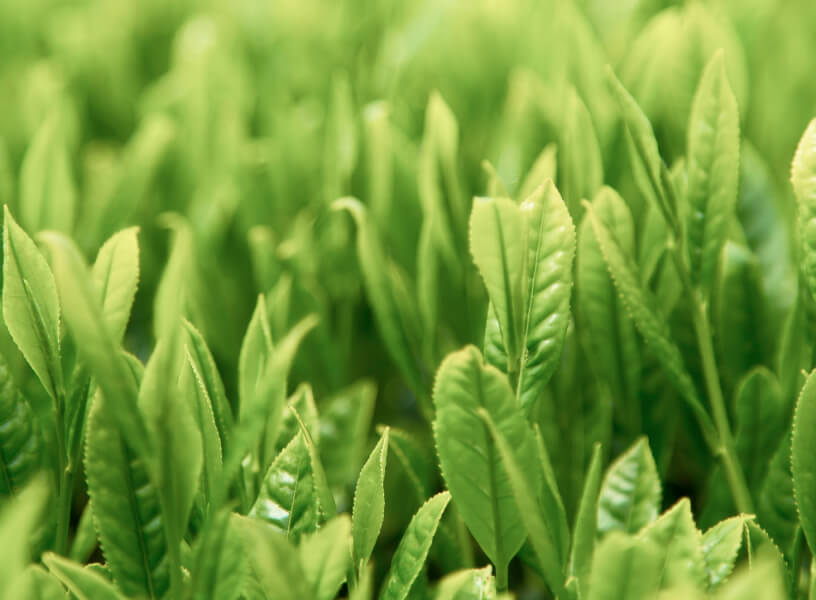  At Ippodo, we blend selected fresh new sencha harvests to produce our Shincha tea each year. This limited release is only available for a short time in early summer. In the mountainous environment where the trees grow, small changes in the weather day-to-day affect the nuances that develop in the tea. As a result, the distinctive character of this year’s Shincha will never be repeated. Shincha 2025’s highlight is its brilliant, soaring fragrance. It’s classic Shincha: sunny, fresh, and vivid green. In the cup, its umami is robust, concentrated, and satisfying. The savory notes linger long after you swallow, while the dry, astringent notes are relatively light, making this an accessible year for beginners. Its aroma reminds us of snap peas, tomato vine, and fresh-cut grass. Visually, its beautiful vibrant leaves and golden brew color make this year’s Shincha a treat for the eyes as well. For first-timers, this year is a classic introduction to Shincha, full of energy and green freshness. Longtime fans will enjoy its vivid fragrance, balanced taste, and complexity over many brews. Compared to our normal selection of sencha, Shincha has a powerful flavor, aroma, and aftertaste. Its youthful strength is refreshing, like a splash of ice-cold water on the face in the morning. Like Shincha, our regular sencha lineup is also harvested once per year in late spring. We allow the regular senchas to rest until they develop a relaxed, mature flavor. We then blend them with previous harvests to produce a consistent product sold throughout the year. We love our regular sencha selection for its calm and mature character. We love Shincha for its fleeting, energetic character that invigorates us at the start of summer. |
Standard Shincha Brew
Our standard recipe for brewing loose-leaf Shincha. Discover the vibrant and energetic quality of these freshly harvested tea leaves.
/blogs/recipes-to-brew-japanese-tea/standard-shincha-brew
1. Measure the leaves
2 tbsp. (10 g / 0.35 oz)
Add tea leaves to a kyusu or teapot.
2. Add hot water
210 mL (7 oz)
80°C (176°F)
Cool boiling water to 80°C by transferring once.
3. Brew
40 seconds
Brew without stirring or disturbing the tea leaves.
4. Serve
Pour out every last drop.
Enjoy in your favorite teacup or mug.
Iced Shincha
Fresh Shincha, served the most refreshing way possible: in a tall glass of ice.
/blogs/recipes-to-brew-japanese-tea/iced-shincha
1. Measure the leaves
2 tbsp. (10 g / 0.35 oz)
Add tea leaves to a kyusu or teapot.
2. Add hot water
210 mL (7 oz)
90°C (200°F)
Pour hot water to cover tea leaves.
3. Brew
50 seconds
Brew without stirring or disturbing the tea leaves.
4. Serve over plenty of ice
Pour out every last drop.
Enjoy in your favorite glass, teacup or mug.
Cold Brew Sencha
Cold brew with just ice and clean water to bring out sencha's full lushness, natural sweetness, and umami.
/blogs/recipes-to-brew-japanese-tea/cold-brew-sencha
1. Measure the leaves
2 tbsp. (10 g / 0.35 oz)
Add tea leaves to a kyusu or teapot.
2. Add ice water
210 mL (7 oz)
Chilled water
Pour chilled water to cover tea leaves.
3. Brew
15 minutes
Brew without stirring or disturbing the tea leaves.
4. Serve
Pour out every last drop
Enjoy in your favorite glass, teacup, or mug.
|
filterTypeLimited
|
Sold out | This seasonal tea is currently sold out. It will be available again next Spring. |
| /products/shincha-8-one-pot-teabag | Uji Shincha Teabags (Teapot Size) - 8 Bags | Sencha | $27 | These large teabags allow you to easily brew a full teapot or large mug of Shincha, the fresh new harvest of sencha green tea. |
Shelf life:Consume quickly Serving size:1 teabag per pot (10 fl oz.) Size:5.9" × 1.6" × 9.6" Net weight:2 oz (0.25 oz per bag) Quantity:8 teabags Note: Limited quantity available. Each spring, as the weather starts to warm, the tea fields in the mountains south of Kyoto begin to awaken. The tea plants that huddled up, storing their energy and nutrients over the cold, long winter, begin to put out tiny green buds. Over the course of a month, these buds start to grow, reaching up and up for the wide blue sky. When the time is right, tea farmers get busy harvesting the spry new leaves.
  At Ippodo, we blend selected fresh new sencha harvests to produce our Shincha tea each year. This limited release is only available for a short time in early summer. In the mountainous environment where the trees grow, small changes in the weather day-to-day affect the nuances that develop in the tea. As a result, the distinctive character of this year’s Shincha will never be repeated. Shincha 2025’s highlight is its brilliant, soaring fragrance. It’s classic Shincha: sunny, fresh, and vivid green. In the cup, its umami is robust, concentrated, and satisfying. The savory notes linger long after you swallow, while the dry, astringent notes are relatively light, making this an accessible year for beginners. Its aroma reminds us of snap peas, tomato vine, and fresh-cut grass. Visually, its beautiful vibrant leaves and golden brew color make this year’s Shincha a treat for the eyes as well. For first-timers, this year is a classic introduction to Shincha, full of energy and green freshness. Longtime fans will enjoy its vivid fragrance, balanced taste, and complexity over many brews. For an easy batch of fragrant Shincha, try these large teabags. Each is filled with the same Shincha teabags as the loose leaf version. The teabags are a spacious, pyramid shape, allowing the leaves to expand freely while they brew. They're large enough to be used in a teapot or a pitcher, and you can also use them with a large mug when brewing for one. |
Shincha Teabags - Hot Brew
Our standard recipe for brewing Shincha teapot teabags.
/blogs/recipes-to-brew-japanese-tea/shincha-teabags-hot-brew
1. Put 1 teabag into a pot or other large container and add 10 oz (300 mL) of 194°F water
1 teabag
2. Wait about 2 minutes before drinking
300 mL (10 oz)
90°C (194°F)
Shincha Teabags - Cold Brew
Our cold brew recipe for brewing Shincha teapot teabags.
/blogs/recipes-to-brew-japanese-tea/shincha-teabags-cold-brew
1. Put 1 teabag into a pot or other large container and add 10 oz (300 mL) of chilled water
1 teabag
2. Wait about 30 minutes before drinking
300 mL (10 oz)
Chilled
|
filterTypeLimited
|
Sold out | This seasonal tea is currently sold out. It will be available again next Spring. |
| /products/shincha-6-drip-teabag | Uji Shincha Drip Teabags (Cup Size) - 6 Bags | Sencha | $30 | A pour-over style tea bag filled with Shincha, the fresh new harvest of sencha green tea. Use for an easy cup of fragrant tea at the office. |
Shelf life:Consume quickly Serving size:1 teabag per cup (5 fl oz.) Size:5.9" × 1.6" × 9.6" Quantity:6 teabags Note: Limited quantity available. Each spring, as the weather starts to warm, the tea fields in the mountains south of Kyoto begin to awaken. The tea plants that huddled up, storing their energy and nutrients over the cold, long winter, begin to put out tiny green buds. Over the course of a month, these buds start to grow, reaching up and up for the wide blue sky. When the time is right, tea farmers get busy harvesting the spry new leaves.
  At Ippodo, we blend selected fresh new sencha harvests to produce our Shincha tea each year. This limited release is only available for a short time in early summer. In the mountainous environment where the trees grow, small changes in the weather day-to-day affect the nuances that develop in the tea. As a result, the distinctive character of this year’s Shincha will never be repeated. Shincha 2025’s highlight is its brilliant, soaring fragrance. It’s classic Shincha: sunny, fresh, and vivid green. In the cup, its umami is robust, concentrated, and satisfying. The savory notes linger long after you swallow, while the dry, astringent notes are relatively light, making this an accessible year for beginners. Its aroma reminds us of snap peas, tomato vine, and fresh-cut grass. Visually, its beautiful vibrant leaves and golden brew color make this year’s Shincha a treat for the eyes as well. For first-timers, this year is a classic introduction to Shincha, full of energy and green freshness. Longtime fans will enjoy its vivid fragrance, balanced taste, and complexity over many brews. These pour-over style teabags are a unique innovation, combining the amazing fragrance of brewing loose-leaf Shincha with the convenience of a teabag. Use them for a quick cup of fragrant Shincha at the office. To brew, first tear open the top of the bag, and place the hooks over the side of your mug. Then, slowly pour hot water over the leaves, and enjoy how Shincha's vibrant, green fragrance blossoms up from the mug. After a minute, take the teabag out, and enjoy. |
Shincha Drip Teabags
Easily enjoy the fresh fragrance of Shincha with these unique pour-over style teabags.
/blogs/recipes-to-brew-japanese-tea/shincha-drip-teabags
1. Prepare the teabag
Use 1 teabag
Open the bag along the perforated line.
2. Place on mug & add water
150 mL (5 oz)
100°C (212°F)
Place the hooks over the sides of a mug and pour water on leaves.
3. Brew
60 seconds
Brew without stirring or disturbing the tea leaves.
4. Serve
Remove teabag
Enjoy in the mug you brewed in!
|
filterTypeLimited
|
Sold out | This seasonal tea is currently sold out. It will be available again next Spring. |
| /products/shincha-2025-kumpu-sencha-set | Shincha 2025 & Kumpu Set | Sencha | $66 | This comparison set includes vibrant Shincha and the elegant regular sencha Kumpu. |
Shelf life:Consume quickly Serving size:10 g / 0.35 oz (~2 Tbsp.) Size:5.5" × 2.8" × 6.8" Net weight:6.3 oz (180 g) Note: Limited quantity available. Each spring, as the weather starts to warm, the tea fields in the mountains south of Kyoto begin to awaken. The tea plants that huddled up, storing their energy and nutrients over the cold, long winter, begin to put out tiny green buds. Over the course of a month, these buds start to grow, reaching up and up for the wide blue sky. When the time is right, tea farmers get busy harvesting the spry new leaves.
  At Ippodo, we blend selected fresh new sencha harvests to produce our Shincha tea each year. This limited release is only available for a short time in early summer. In the mountainous environment where the trees grow, small changes in the weather day-to-day affect the nuances that develop in the tea. As a result, the distinctive character of this year’s Shincha will never be repeated. Shincha 2025’s highlight is its brilliant, soaring fragrance. It’s classic Shincha: sunny, fresh, and vivid green. In the cup, its umami is robust, concentrated, and satisfying. The savory notes linger long after you swallow, while the dry, astringent notes are relatively light, making this an accessible year for beginners. Its aroma reminds us of snap peas, tomato vine, and fresh-cut grass. Visually, its beautiful vibrant leaves and golden brew color make this year’s Shincha a treat for the eyes as well. For first-timers, this year is a classic introduction to Shincha, full of energy and green freshness. Longtime fans will enjoy its vivid fragrance, balanced taste, and complexity over many brews. Deepen your appreciation of Shincha’s vibrancy and Ippodo regular sencha’s mellow depths with this comparison set. For the set, we selected Kumpu, which is a different blend from Shincha, but serves as a good benchmark for Shincha’s unique character each year. In contrast to Shincha’s robust energy, the Kumpu blend is elegant, with light astringency and pleasant umami that lingers after swallowing. Like Shincha, Kumpu is also harvested once per year in late spring. We first allow it to rest until it develops a relaxed, mature flavor. We then blend it with previous harvests, to produce a consistent, delicious tea available throughout the year. We love Kumpu for its calm maturity, while we love Shincha for its invigorating energy that only comes this time of year. This bundle set includes both items shipped together as in a regular order. |
Standard Shincha Brew
Our standard recipe for brewing loose-leaf Shincha. Discover the vibrant and energetic quality of these freshly harvested tea leaves.
/blogs/recipes-to-brew-japanese-tea/standard-shincha-brew
1. Measure the leaves
2 tbsp. (10 g / 0.35 oz)
Add tea leaves to a kyusu or teapot.
2. Add hot water
210 mL (7 oz)
80°C (176°F)
Cool boiling water to 80°C by transferring once.
3. Brew
40 seconds
Brew without stirring or disturbing the tea leaves.
4. Serve
Pour out every last drop.
Enjoy in your favorite teacup or mug.
Iced Shincha
Fresh Shincha, served the most refreshing way possible: in a tall glass of ice.
/blogs/recipes-to-brew-japanese-tea/iced-shincha
1. Measure the leaves
2 tbsp. (10 g / 0.35 oz)
Add tea leaves to a kyusu or teapot.
2. Add hot water
210 mL (7 oz)
90°C (200°F)
Pour hot water to cover tea leaves.
3. Brew
50 seconds
Brew without stirring or disturbing the tea leaves.
4. Serve over plenty of ice
Pour out every last drop.
Enjoy in your favorite glass, teacup or mug.
Cold Brew Sencha
Cold brew with just ice and clean water to bring out sencha's full lushness, natural sweetness, and umami.
/blogs/recipes-to-brew-japanese-tea/cold-brew-sencha
1. Measure the leaves
2 tbsp. (10 g / 0.35 oz)
Add tea leaves to a kyusu or teapot.
2. Add ice water
210 mL (7 oz)
Chilled water
Pour chilled water to cover tea leaves.
3. Brew
15 minutes
Brew without stirring or disturbing the tea leaves.
4. Serve
Pour out every last drop
Enjoy in your favorite glass, teacup, or mug.
|
filterTypeLimited
|
Sold out | This seasonal tea is currently sold out. It will be available again next Spring. |
| /products/shincha-2025-rimpo-set | Shincha 2025 & Rimpo Gyokuro Set | Sencha | $60 | This beginner set includes vibrant limited release Shincha and gyokuro: a smooth green tea with many parallels to matcha. |
Shelf life:Consume quickly Serving size:10 g / 0.35 oz (~2 Tbsp.) Size:5.5" × 2.8" × 6.8" Net weight:5.3 oz (150 g) Note: Limited quantity available. Each spring, as the weather starts to warm, the tea fields in the mountains south of Kyoto begin to awaken. The tea plants that huddled up, storing their energy and nutrients over the cold, long winter, begin to put out tiny green buds. Over the course of a month, these buds start to grow, reaching up and up for the wide blue sky. When the time is right, tea farmers get busy harvesting the spry new leaves.
  At Ippodo, we blend selected fresh new sencha harvests to produce our Shincha tea each year. This limited release is only available for a short time in early summer. In the mountainous environment where the trees grow, small changes in the weather day-to-day affect the nuances that develop in the tea. As a result, the distinctive character of this year’s Shincha will never be repeated. Shincha 2025’s highlight is its brilliant, soaring fragrance. It’s classic Shincha: sunny, fresh, and vivid green. In the cup, its umami is robust, concentrated, and satisfying. The savory notes linger long after you swallow, while the dry, astringent notes are relatively light, making this an accessible year for beginners. Its aroma reminds us of snap peas, tomato vine, and fresh-cut grass. Visually, its beautiful vibrant leaves and golden brew color make this year’s Shincha a treat for the eyes as well. For first-timers, this year is a classic introduction to Shincha, full of energy and green freshness. Longtime fans will enjoy its vivid fragrance, balanced taste, and complexity over many brews. For beginners to loose leaf Japanese green teas, this set is a chance to experience both Shincha and gyokuro, a green tea with a smooth taste and a lot of parallels to matcha. Gyokuro is essentially the loose leaf tea version of matcha. They both start off as tea leaves grown in the same shaded tea fields. After harvesting, some leaves are ground up to make matcha, and some leaves are made into loose leaf green tea, gyokuro. In the cup, gyokuro’s smooth, naturally sweet taste reminds us of a premium matcha’s misty, moss-green, and even briny elements. Like matcha (and Shincha), gyokuro also has a balance of caffeine and theanine, giving us an energizing yet calming feeling when we drink it. We selected the Rimpo gyokuro blend for this set. It’s a great introduction to the category, with a medium-rich body, smooth mouthfeel, and pleasant umami. A big contrast to Shincha’s brisk green energy. This bundle set includes both items shipped together as in a regular order. |
Standard Shincha Brew
Our standard recipe for brewing loose-leaf Shincha. Discover the vibrant and energetic quality of these freshly harvested tea leaves.
/blogs/recipes-to-brew-japanese-tea/standard-shincha-brew
1. Measure the leaves
2 tbsp. (10 g / 0.35 oz)
Add tea leaves to a kyusu or teapot.
2. Add hot water
210 mL (7 oz)
80°C (176°F)
Cool boiling water to 80°C by transferring once.
3. Brew
40 seconds
Brew without stirring or disturbing the tea leaves.
4. Serve
Pour out every last drop.
Enjoy in your favorite teacup or mug.
Iced Gyokuro
For a fast, fragrant pitcher of iced tea, brew a strong batch of gyokuro using boiling hot water, and then pour over ice, diluting its strength and balancing its flavor.
/blogs/recipes-to-brew-japanese-tea/iced-gyokuro
1. Measure the leaves
2 tbsp. (10 g / 0.35 oz)
Add tea leaves to a kyusu or teapot.
2. Add boiling water
210 mL (7 oz)
100°C (212°F)
Pour boiling water to cover tea leaves.
3. Brew
60 seconds
Brew without stirring or disturbing the tea leaves.
4. Serve over plenty of ice
Pour out every last drop.
Enjoy in your favorite glass, teacup or mug.
Iced Shincha
Fresh Shincha, served the most refreshing way possible: in a tall glass of ice.
/blogs/recipes-to-brew-japanese-tea/iced-shincha
1. Measure the leaves
2 tbsp. (10 g / 0.35 oz)
Add tea leaves to a kyusu or teapot.
2. Add hot water
210 mL (7 oz)
90°C (200°F)
Pour hot water to cover tea leaves.
3. Brew
50 seconds
Brew without stirring or disturbing the tea leaves.
4. Serve over plenty of ice
Pour out every last drop.
Enjoy in your favorite glass, teacup or mug.
|
filterTypeLimited
|
Sold out | This seasonal tea is currently sold out. It will be available again next Spring. |
| /products/premium-select-gyokuro | Premium Select Gyokuro - 30g | Gyokuro | $55 | Our rarest and most delectable gyokuro has returned for a short time this summer. |
Shelf life:Consume quickly Serving size:10 g / 0.35 oz (~2 Tbsp.) Size:4" × 7.9" × 1.2" Net weight:1.1 oz (30 g) This year, we saved a part of our production of Premium Select Gyokuro aside so that we could enjoy it in the summer. (This release is the same blend as was available this spring 2025, kept fresh in storage until now.) For us, there’s nothing more soothing and indulgent than this tea, the pinnacle of Japanese green tea, cold brewed on a hot afternoon. We like to serve it in a small glass, almost like a cold daiginjo sake at happy hour. Every year, the top tea farmers in Japan enter the best of their harvest into tea competitions, hoping to earn prestige and recognition for their efforts. Our Premium Select series features our exclusive blend of these farmers’ competition-level teas. Hand-selected by our president from farms only in the Kyoto region. The highest quality gyokuro fields receive constant hands-on care and attention. Farmers precisely monitor and fertilize the soil to keep it lofty and nutritious. They adjust the shades that cover the field so that the new leaves sprout in almost complete darkness. With a team headed by our president and master blender, we blend precious harvests from these farmers to achieve an unparalleled gyokuro with harmony and depth.
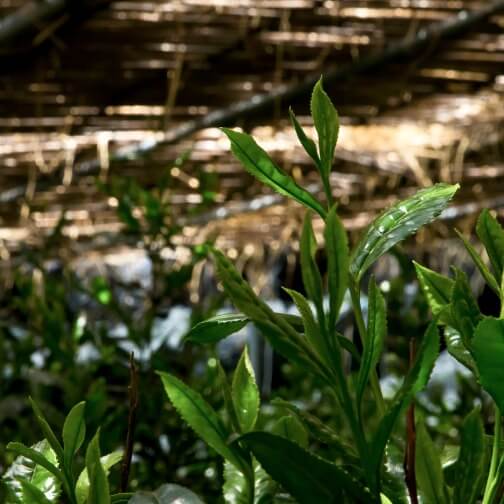 Cultivated by expert hands under dark shade.
Cultivated by expert hands under dark shade.
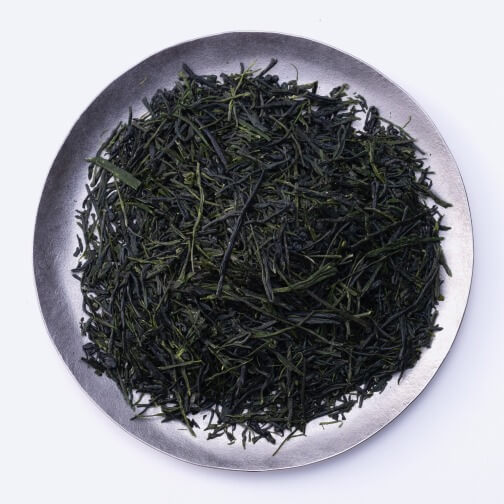 Indigo-green, needle-like leaves.
Indigo-green, needle-like leaves.
 Breathtakingly clear and vibrant tea.
Breathtakingly clear and vibrant tea.
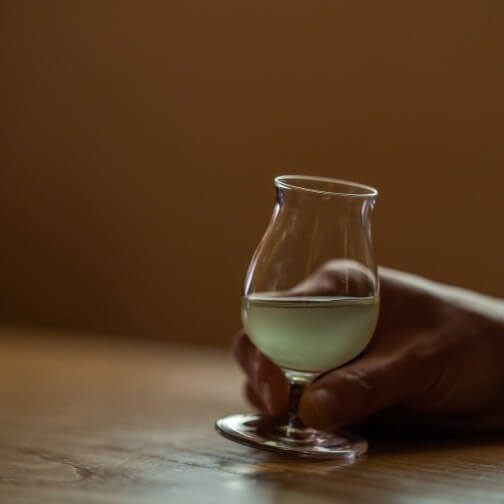 Savor as cold brew, like daiginjo sake.
Savor as cold brew, like daiginjo sake.
This year’s release is plentiful, with round umami and pure dew-like sweetness. On first sip, the umami wells up, like a bubbling brook. After swallowing, secondary notes of sweetness gently emerge and linger . . . and linger. Its fragrance is like an ocean spray, or fresh scallops. After slowly sipping three or more brews, we feel peaceful and clear. Those curious about trying the pinnacle of gyokuro will find its smooth, savory taste remarkable, but accessible. Aficionados will enjoy the complexity of the blend and the intricacies of its aftertaste for steep after steep. We recommend enjoying this tea in a focused way, whether in a dedicated session, or with just a small snack in the afternoon. First, try it the standard way by brewing with just-warm temperature water. This method will fully draw out the eye-opening umami from these tea leaves. To accommodate the just-warm brew, heat the cups with boiling water and discard before serving. Next, try it cold by brewing with ice water and serving in a small snifter glass, like a fine daiginjo sake. This method will produce a clear, resonant tea with delectable sweetness. Serve after lunch, or at happy hour. For the full experience, rebrew these precious tea leaves many times, and enjoy how the fragrance and taste evolve each time. |
Standard Gyokuro Brew
Our standard recipe for brewing loose-leaf gyokuro. Brew a cup when you feel you need a change of pace.
/blogs/recipes-to-brew-japanese-tea/standard-gyokuro-brew
1. Measure the leaves
2 tbsp. (10 g / 0.35 oz)
Add tea leaves to a kyusu or teapot.
2. Add hot water
80 mL (3 oz)
60°C (140°F)
Cool boiling water to 60°C by transferring 3 times.
3. Brew
90 seconds
Brew without stirring or disturbing the tea leaves.
4. Serve
Pour out every last drop.
Enjoy in your favorite teacup or mug.
Cold Brew Gyokuro
Cold brew with just ice and clean water to bring out gyokuro's full lushness, natural sweetness, and umami.
/blogs/recipes-to-brew-japanese-tea/cold-brew-gyokuro
1. Measure the leaves
2 tbsp. (10 g / 0.35 oz)
Add tea leaves to a kyusu or teapot.
2. Add ice water
210 mL (7 oz)
Chilled water
Pour chilled water to cover tea leaves.
3. Brew
15 minutes
Brew without stirring or disturbing the tea leaves.
4. Serve
Pour out every last drop.
Enjoy in a wine glass or snifter to fully appreciate its elegance.
|
filterFlavorSuperRich
filterTypeLimited
|
Sold out | This seasonal tea is currently sold out. It will be available again next year. |
| /products/tenka-ichi | Tenka-ichi (50g Bag) | Gyokuro | $69 | Tenka-ichi is the gyokuro with the most decadent, lush character in our selection. |
Shelf life:Consume quickly Serving size:10 g / 0.35 oz (~2 Tbsp.) Size:3.9" × 1" × 7.9" Net weight:1.8 oz (50 g) Tenka-ichi means “the best under the heavens.” True to its name, this gyokuro represents the pinnacle of luscious umami in our selection. We produce this blend from the top gyokuro farms in the Kyoto area. Its taste is smooth and robust, its aroma sings, and its aftertaste lingers with layers of complexity. We recommend enjoying this remarkable tea slowly at contemplative tea sessions. We also recommend Tenka-ichi as cold brew, to taste the full potential of its deep umami and sweetness. |
Standard Gyokuro Brew
Our standard recipe for brewing loose-leaf gyokuro. Brew a cup when you feel you need a change of pace.
/blogs/recipes-to-brew-japanese-tea/standard-gyokuro-brew
1. Measure the leaves
2 tbsp. (10 g / 0.35 oz)
Add tea leaves to a kyusu or teapot.
2. Add hot water
80 mL (3 oz)
60°C (140°F)
Cool boiling water to 60°C by transferring 3 times.
3. Brew
90 seconds
Brew without stirring or disturbing the tea leaves.
4. Serve
Pour out every last drop.
Enjoy in your favorite teacup or mug.
Cold Brew Gyokuro
Cold brew with just ice and clean water to bring out gyokuro's full lushness, natural sweetness, and umami.
/blogs/recipes-to-brew-japanese-tea/cold-brew-gyokuro
1. Measure the leaves
2 tbsp. (10 g / 0.35 oz)
Add tea leaves to a kyusu or teapot.
2. Add ice water
210 mL (7 oz)
Chilled water
Pour chilled water to cover tea leaves.
3. Brew
15 minutes
Brew without stirring or disturbing the tea leaves.
4. Serve
Pour out every last drop.
Enjoy in a wine glass or snifter to fully appreciate its elegance.
|
filterFlavorSuperRich
|
Available | In stock |
| /products/ippoen | Ippoen (50g Bag) | Gyokuro | $40 | Ippoen is a tea ripe with luscious, clear, and elegant umami. Its finish is long and beautiful. |
Shelf life:Consume quickly Serving size:10 g / 0.35 oz (~2 Tbsp.) Size:3.9" × 1" × 7.9" Net weight:1.8 oz (50 g) Rich in umami, smooth in texture, and virtually void of astringency, Ippoen is a top-class gyokuro that is a favorite among our patrons. We recommend enjoying Ippoen’s full-bodied, but elegant character slowly at contemplative tea sessions. We also recommend this tea as cold brew, to taste the full potential of its deep umami and sweetness. |
Standard Gyokuro Brew
Our standard recipe for brewing loose-leaf gyokuro. Brew a cup when you feel you need a change of pace.
/blogs/recipes-to-brew-japanese-tea/standard-gyokuro-brew
1. Measure the leaves
2 tbsp. (10 g / 0.35 oz)
Add tea leaves to a kyusu or teapot.
2. Add hot water
80 mL (3 oz)
60°C (140°F)
Cool boiling water to 60°C by transferring 3 times.
3. Brew
90 seconds
Brew without stirring or disturbing the tea leaves.
4. Serve
Pour out every last drop.
Enjoy in your favorite teacup or mug.
Cold Brew Gyokuro
Cold brew with just ice and clean water to bring out gyokuro's full lushness, natural sweetness, and umami.
/blogs/recipes-to-brew-japanese-tea/cold-brew-gyokuro
1. Measure the leaves
2 tbsp. (10 g / 0.35 oz)
Add tea leaves to a kyusu or teapot.
2. Add ice water
210 mL (7 oz)
Chilled water
Pour chilled water to cover tea leaves.
3. Brew
15 minutes
Brew without stirring or disturbing the tea leaves.
4. Serve
Pour out every last drop.
Enjoy in a wine glass or snifter to fully appreciate its elegance.
|
filterFlavorSuperRich
|
Available | In stock |
| /products/kanro | Kanro (50g Bag) | Gyokuro | $30 | Kanro's plentiful umami and long finish make it a good gyokuro for slowly sipping in small servings. Try this tea for your first taste of Ippodo gyokuro. |
Shelf life:Consume quickly Serving size:10 g / 0.35 oz (~2 Tbsp.) Size:3.9" × 1" × 7.9" Net weight:1.8 oz (50 g)
Kanro’s name means “sweet dew,” and this tea has a plentiful rich character until the last drop. We recommend Kanro to those drinking Ippodo gyokuro for the first time, as an introduction to the rich experience that this category of tea has to offer, and as a representative of Ippodo gyokuro. We also recommend this tea as cold brew, to taste the full potential of its deep umami and sweetness. |
Standard Gyokuro Brew
Our standard recipe for brewing loose-leaf gyokuro. Brew a cup when you feel you need a change of pace.
/blogs/recipes-to-brew-japanese-tea/standard-gyokuro-brew
1. Measure the leaves
2 tbsp. (10 g / 0.35 oz)
Add tea leaves to a kyusu or teapot.
2. Add hot water
80 mL (3 oz)
60°C (140°F)
Cool boiling water to 60°C by transferring 3 times.
3. Brew
90 seconds
Brew without stirring or disturbing the tea leaves.
4. Serve
Pour out every last drop.
Enjoy in your favorite teacup or mug.
Piping Hot Gyokuro
A boiling-hot brew brings out a vivid fragrance from gyokuro leaves. In the cup, this recipe has more a little crisp, refreshing astringency, on top of gyokuro's dew-like sweetness.
/blogs/recipes-to-brew-japanese-tea/piping-hot-gyokuro
1. Measure the leaves
2 tbsp. (10 g / 0.35 oz)
Add tea leaves to a kyusu or teapot.
2. Add boiling water
210 mL (7 oz)
100°C (212°F)
Pour boiling water to cover tea leaves.
3. Brew
30 seconds
Brew without stirring or disturbing the tea leaves.
4. Serve
Pour out every last drop.
Enjoy in your favorite teacup or mug.
Iced Gyokuro
For a fast, fragrant pitcher of iced tea, brew a strong batch of gyokuro using boiling hot water, and then pour over ice, diluting its strength and balancing its flavor.
/blogs/recipes-to-brew-japanese-tea/iced-gyokuro
1. Measure the leaves
2 tbsp. (10 g / 0.35 oz)
Add tea leaves to a kyusu or teapot.
2. Add boiling water
210 mL (7 oz)
100°C (212°F)
Pour boiling water to cover tea leaves.
3. Brew
60 seconds
Brew without stirring or disturbing the tea leaves.
4. Serve over plenty of ice
Pour out every last drop.
Enjoy in your favorite glass, teacup or mug.
Cold Brew Gyokuro
Cold brew with just ice and clean water to bring out gyokuro's full lushness, natural sweetness, and umami.
/blogs/recipes-to-brew-japanese-tea/cold-brew-gyokuro
1. Measure the leaves
2 tbsp. (10 g / 0.35 oz)
Add tea leaves to a kyusu or teapot.
2. Add ice water
210 mL (7 oz)
Chilled water
Pour chilled water to cover tea leaves.
3. Brew
15 minutes
Brew without stirring or disturbing the tea leaves.
4. Serve
Pour out every last drop.
Enjoy in a wine glass or snifter to fully appreciate its elegance.
Recipe for Sharing (Gyokuro or Sencha)
Prepare large amounts of tea with your everyday kyusu.
/blogs/recipes-to-brew-japanese-tea/recipe-for-sharing-gyokuro-sencha
1. Measure the leaves
2 tbsp. (10 g / 0.35 oz)
Add tea leaves to a kyusu or teapot.
2. Add boiling water
240 mL (8 oz)
100°C (212°F)
Pour boiling water to cover tea leaves.
3. Brew
30 seconds
Brew without stirring or disturbing the tea leaves.
4. Repeat and serve
Pour out every last drop into a pitcher. Repeat steps 2-4 (with zero seconds brew time) until the pitcher is full.
Serve to your guests.
|
|
Available | In stock |
| /products/rimpo | Rimpo (50g Bag) | Gyokuro | $25 | Rimpo has a just-right medium finish, with typical gyokuro umami. A good gyokuro for those who would like an enriching tea to sip every day. |
Shelf life:Consume quickly Serving size:10 g / 0.35 oz (~2 Tbsp.) Size:3.9" × 1" × 7.9" Net weight:1.8 oz (50 g) Rimpo is a gyokuro fit for everyday, relaxed drinking. With a medium-bodied character, a satisfying amount of umami, and a sweet aroma, Rimpo is our recommendation for daily teatime, serving guests, morning tea, and other typical situations. |
Standard Gyokuro Brew
Our standard recipe for brewing loose-leaf gyokuro. Brew a cup when you feel you need a change of pace.
/blogs/recipes-to-brew-japanese-tea/standard-gyokuro-brew
1. Measure the leaves
2 tbsp. (10 g / 0.35 oz)
Add tea leaves to a kyusu or teapot.
2. Add hot water
80 mL (3 oz)
60°C (140°F)
Cool boiling water to 60°C by transferring 3 times.
3. Brew
90 seconds
Brew without stirring or disturbing the tea leaves.
4. Serve
Pour out every last drop.
Enjoy in your favorite teacup or mug.
Piping Hot Gyokuro
A boiling-hot brew brings out a vivid fragrance from gyokuro leaves. In the cup, this recipe has more a little crisp, refreshing astringency, on top of gyokuro's dew-like sweetness.
/blogs/recipes-to-brew-japanese-tea/piping-hot-gyokuro
1. Measure the leaves
2 tbsp. (10 g / 0.35 oz)
Add tea leaves to a kyusu or teapot.
2. Add boiling water
210 mL (7 oz)
100°C (212°F)
Pour boiling water to cover tea leaves.
3. Brew
30 seconds
Brew without stirring or disturbing the tea leaves.
4. Serve
Pour out every last drop.
Enjoy in your favorite teacup or mug.
Iced Gyokuro
For a fast, fragrant pitcher of iced tea, brew a strong batch of gyokuro using boiling hot water, and then pour over ice, diluting its strength and balancing its flavor.
/blogs/recipes-to-brew-japanese-tea/iced-gyokuro
1. Measure the leaves
2 tbsp. (10 g / 0.35 oz)
Add tea leaves to a kyusu or teapot.
2. Add boiling water
210 mL (7 oz)
100°C (212°F)
Pour boiling water to cover tea leaves.
3. Brew
60 seconds
Brew without stirring or disturbing the tea leaves.
4. Serve over plenty of ice
Pour out every last drop.
Enjoy in your favorite glass, teacup or mug.
Recipe for Sharing (Gyokuro or Sencha)
Prepare large amounts of tea with your everyday kyusu.
/blogs/recipes-to-brew-japanese-tea/recipe-for-sharing-gyokuro-sencha
1. Measure the leaves
2 tbsp. (10 g / 0.35 oz)
Add tea leaves to a kyusu or teapot.
2. Add boiling water
240 mL (8 oz)
100°C (212°F)
Pour boiling water to cover tea leaves.
3. Brew
30 seconds
Brew without stirring or disturbing the tea leaves.
4. Repeat and serve
Pour out every last drop into a pitcher. Repeat steps 2-4 (with zero seconds brew time) until the pitcher is full.
Serve to your guests.
|
|
Available | In stock |
| /products/tekiro | Tekiro (50g Bag) | Gyokuro | $23 | Tekiro is a versatile gyokuro with a light body and a smooth character. Enjoy during a meal and throughout the day. |
Shelf life:Consume quickly Serving size:10 g / 0.35 oz (~2 Tbsp.) Size:4.3" × 7.9" × 1" Net weight:1.8 oz (50 g) Tekiro’s light body and smooth character make it a good tea for drinking throughout the day. When brewed at the standard 140°F, it has just enough sweetness and richness to be satisfying at mellow, slow tea sessions. For a different experience altogether, brew with hot water for just 30 seconds, just like a bancha tea. Boiling water brings out a wonderful misty fragrance and a crisp taste from Tekiro. This method is good for enjoying during or after a meal, or for when you want a mug of tea to sip while reading a book. |
Standard Gyokuro Brew
Our standard recipe for brewing loose-leaf gyokuro. Brew a cup when you feel you need a change of pace.
/blogs/recipes-to-brew-japanese-tea/standard-gyokuro-brew
1. Measure the leaves
2 tbsp. (10 g / 0.35 oz)
Add tea leaves to a kyusu or teapot.
2. Add hot water
80 mL (3 oz)
60°C (140°F)
Cool boiling water to 60°C by transferring 3 times.
3. Brew
90 seconds
Brew without stirring or disturbing the tea leaves.
4. Serve
Pour out every last drop.
Enjoy in your favorite teacup or mug.
Piping Hot Gyokuro
A boiling-hot brew brings out a vivid fragrance from gyokuro leaves. In the cup, this recipe has more a little crisp, refreshing astringency, on top of gyokuro's dew-like sweetness.
/blogs/recipes-to-brew-japanese-tea/piping-hot-gyokuro
1. Measure the leaves
2 tbsp. (10 g / 0.35 oz)
Add tea leaves to a kyusu or teapot.
2. Add boiling water
210 mL (7 oz)
100°C (212°F)
Pour boiling water to cover tea leaves.
3. Brew
30 seconds
Brew without stirring or disturbing the tea leaves.
4. Serve
Pour out every last drop.
Enjoy in your favorite teacup or mug.
Iced Gyokuro
For a fast, fragrant pitcher of iced tea, brew a strong batch of gyokuro using boiling hot water, and then pour over ice, diluting its strength and balancing its flavor.
/blogs/recipes-to-brew-japanese-tea/iced-gyokuro
1. Measure the leaves
2 tbsp. (10 g / 0.35 oz)
Add tea leaves to a kyusu or teapot.
2. Add boiling water
210 mL (7 oz)
100°C (212°F)
Pour boiling water to cover tea leaves.
3. Brew
60 seconds
Brew without stirring or disturbing the tea leaves.
4. Serve over plenty of ice
Pour out every last drop.
Enjoy in your favorite glass, teacup or mug.
Recipe for Sharing (Gyokuro or Sencha)
Prepare large amounts of tea with your everyday kyusu.
/blogs/recipes-to-brew-japanese-tea/recipe-for-sharing-gyokuro-sencha
1. Measure the leaves
2 tbsp. (10 g / 0.35 oz)
Add tea leaves to a kyusu or teapot.
2. Add boiling water
240 mL (8 oz)
100°C (212°F)
Pour boiling water to cover tea leaves.
3. Brew
30 seconds
Brew without stirring or disturbing the tea leaves.
4. Repeat and serve
Pour out every last drop into a pitcher. Repeat steps 2-4 (with zero seconds brew time) until the pitcher is full.
Serve to your guests.
|
|
Available | In stock |
| /products/mantoku | Mantoku (50g Bag) | Gyokuro | $18 | Choose Mantoku for a refreshing, light gyokuro with more crispness and less umami and sweetness. |
Shelf life:Consume quickly Serving size:10 g / 0.35 oz (~2 Tbsp.) Size:4.3" × 7.9" × 1" Net weight:1.8 oz (50 g) We recommend Mantoku, the lightest body gyokuro we produce, for drinking throughout the day. While not astringent in the same way as a sencha, Mantoku has some dryness and pleasant bitterness that feel clean and crisp when we drink it after a meal. We first recommend brewing Mantoku with boiling water, serving quickly in just 30 seconds. This method brings out the misty, mossy-green aroma from these leaves, and produces an energizing and light body tea good for drinking in a mug. When brewing with the standard 140°F water, this tea produces a more mellow brew with slight sweetness and umami. |
Standard Gyokuro Brew
Our standard recipe for brewing loose-leaf gyokuro. Brew a cup when you feel you need a change of pace.
/blogs/recipes-to-brew-japanese-tea/standard-gyokuro-brew
1. Measure the leaves
2 tbsp. (10 g / 0.35 oz)
Add tea leaves to a kyusu or teapot.
2. Add hot water
80 mL (3 oz)
60°C (140°F)
Cool boiling water to 60°C by transferring 3 times.
3. Brew
90 seconds
Brew without stirring or disturbing the tea leaves.
4. Serve
Pour out every last drop.
Enjoy in your favorite teacup or mug.
Piping Hot Gyokuro
A boiling-hot brew brings out a vivid fragrance from gyokuro leaves. In the cup, this recipe has more a little crisp, refreshing astringency, on top of gyokuro's dew-like sweetness.
/blogs/recipes-to-brew-japanese-tea/piping-hot-gyokuro
1. Measure the leaves
2 tbsp. (10 g / 0.35 oz)
Add tea leaves to a kyusu or teapot.
2. Add boiling water
210 mL (7 oz)
100°C (212°F)
Pour boiling water to cover tea leaves.
3. Brew
30 seconds
Brew without stirring or disturbing the tea leaves.
4. Serve
Pour out every last drop.
Enjoy in your favorite teacup or mug.
Iced Gyokuro
For a fast, fragrant pitcher of iced tea, brew a strong batch of gyokuro using boiling hot water, and then pour over ice, diluting its strength and balancing its flavor.
/blogs/recipes-to-brew-japanese-tea/iced-gyokuro
1. Measure the leaves
2 tbsp. (10 g / 0.35 oz)
Add tea leaves to a kyusu or teapot.
2. Add boiling water
210 mL (7 oz)
100°C (212°F)
Pour boiling water to cover tea leaves.
3. Brew
60 seconds
Brew without stirring or disturbing the tea leaves.
4. Serve over plenty of ice
Pour out every last drop.
Enjoy in your favorite glass, teacup or mug.
Recipe for Sharing (Gyokuro or Sencha)
Prepare large amounts of tea with your everyday kyusu.
/blogs/recipes-to-brew-japanese-tea/recipe-for-sharing-gyokuro-sencha
1. Measure the leaves
2 tbsp. (10 g / 0.35 oz)
Add tea leaves to a kyusu or teapot.
2. Add boiling water
240 mL (8 oz)
100°C (212°F)
Pour boiling water to cover tea leaves.
3. Brew
30 seconds
Brew without stirring or disturbing the tea leaves.
4. Repeat and serve
Pour out every last drop into a pitcher. Repeat steps 2-4 (with zero seconds brew time) until the pitcher is full.
Serve to your guests.
|
|
Available | In stock |
| /products/organic-gyokuro | Organic Gyokuro - 50g | Gyokuro | $40 | Our Organic Gyokuro is a green tea with a lush fragrance, a deep green hue, and a smooth taste. |
Shelf life:Consume quickly Serving size:10 g / 0.35 oz (~2 Tbsp.) Size:3.9" × 1" × 7.9" Net weight:1.8 oz (50 g) We sourced and blended this organic gyokuro entirely from harvests grown in the Kyoto tea production region. It holds its own in our gyokuro lineup as a satisfying tea that rewards slow sipping. Organic Gyokuro features a soft, blossoming umami taste, mellow sweetness, and a medium-rich character. Its fragrance is savory-sweet and warm like an ocean breeze. Gyokuro fans will enjoy its richness in their regular gyokuro sessions. Those new to Japanese green tea may reach for this organic gyokuro as a less-astringent option when compared to sencha. If it’s your first time trying gyokuro, look forward to being stunned by the savory-sweet umami taste that occurs naturally in these teas. Ranking outside of our regular lineup, this limited tea changes character with every release. Our organic teas are produced in the Kyoto tea production region and are certified organic by the JAS. (The USDA recognizes JAS organic certification as an equivalent standard to USDA organic certification.) We have selected each organic variety to meet Ippodo standards for authentic Japanese green tea flavor, aroma, and color. Additionally, compared to our other tea blends, the weather and other growing factors lead to greater differences in the character of our organic teas every year. Discovering this year's unique characteristics is one of the delights of these teas. |
Iced Gyokuro
For a fast, fragrant pitcher of iced tea, brew a strong batch of gyokuro using boiling hot water, and then pour over ice, diluting its strength and balancing its flavor.
/blogs/recipes-to-brew-japanese-tea/iced-gyokuro
1. Measure the leaves
2 tbsp. (10 g / 0.35 oz)
Add tea leaves to a kyusu or teapot.
2. Add boiling water
210 mL (7 oz)
100°C (212°F)
Pour boiling water to cover tea leaves.
3. Brew
60 seconds
Brew without stirring or disturbing the tea leaves.
4. Serve over plenty of ice
Pour out every last drop.
Enjoy in your favorite glass, teacup or mug.
Cold Brew Gyokuro
Cold brew with just ice and clean water to bring out gyokuro's full lushness, natural sweetness, and umami.
/blogs/recipes-to-brew-japanese-tea/cold-brew-gyokuro
1. Measure the leaves
2 tbsp. (10 g / 0.35 oz)
Add tea leaves to a kyusu or teapot.
2. Add ice water
210 mL (7 oz)
Chilled water
Pour chilled water to cover tea leaves.
3. Brew
15 minutes
Brew without stirring or disturbing the tea leaves.
4. Serve
Pour out every last drop.
Enjoy in a wine glass or snifter to fully appreciate its elegance.
Piping Hot Gyokuro
A boiling-hot brew brings out a vivid fragrance from gyokuro leaves. In the cup, this recipe has more a little crisp, refreshing astringency, on top of gyokuro's dew-like sweetness.
/blogs/recipes-to-brew-japanese-tea/piping-hot-gyokuro
1. Measure the leaves
2 tbsp. (10 g / 0.35 oz)
Add tea leaves to a kyusu or teapot.
2. Add boiling water
210 mL (7 oz)
100°C (212°F)
Pour boiling water to cover tea leaves.
3. Brew
30 seconds
Brew without stirring or disturbing the tea leaves.
4. Serve
Pour out every last drop.
Enjoy in your favorite teacup or mug.
Standard Gyokuro Brew
Our standard recipe for brewing loose-leaf gyokuro. Brew a cup when you feel you need a change of pace.
/blogs/recipes-to-brew-japanese-tea/standard-gyokuro-brew
1. Measure the leaves
2 tbsp. (10 g / 0.35 oz)
Add tea leaves to a kyusu or teapot.
2. Add hot water
80 mL (3 oz)
60°C (140°F)
Cool boiling water to 60°C by transferring 3 times.
3. Brew
90 seconds
Brew without stirring or disturbing the tea leaves.
4. Serve
Pour out every last drop.
Enjoy in your favorite teacup or mug.
Recipe for Sharing (Gyokuro or Sencha)
Prepare large amounts of tea with your everyday kyusu.
/blogs/recipes-to-brew-japanese-tea/recipe-for-sharing-gyokuro-sencha
1. Measure the leaves
2 tbsp. (10 g / 0.35 oz)
Add tea leaves to a kyusu or teapot.
2. Add boiling water
240 mL (8 oz)
100°C (212°F)
Pour boiling water to cover tea leaves.
3. Brew
30 seconds
Brew without stirring or disturbing the tea leaves.
4. Repeat and serve
Pour out every last drop into a pitcher. Repeat steps 2-4 (with zero seconds brew time) until the pitcher is full.
Serve to your guests.
|
filterTypeOrganic
|
Sold out | We don't have an expected restocking date. |
| /products/one-cup-teabag-gyokuro-25-bags | Gyokuro Teabags (25 Bags) | Gyokuro | $30 | This green tea teabag has an authentic gyokuro character, with light umami and a soft taste. |
Shelf life:Consume quickly Serving size:1 teabag per cup (5 fl oz.) Size:6.5" × 2.6" × 4" Net weight:1.76 oz (0.07 oz per bag) Quantity:25 teabags These teabags brew a light-body green tea with a soft, mellow taste. Made from gyokuro mecha (shoots and buds) and konacha (flakes), this tea is packaged in a wide pyramid-shape sachet. Choose this teabag for a simple and authentic daily cup of delicious gyokuro. Grown under the shade in dedicated fields, gyokuro is a green tea that has an abundance of hearty-sweet umami flavor. With a dew-like aroma, less astringency, and a thick character, this tea is one for slowly sipping and savoring. |
|
Available | In stock | |
| /products/one-cup-teabag-gyokuro | Gyokuro Teabags (12 Bags) | Gyokuro | $15 | This green tea teabag has an authentic gyokuro character, with light umami and a soft taste. |
Shelf life:Consume quickly Serving size:1 teabag per cup (5 fl oz.) Size:3.9" × 1.3" × 6.6" Net weight:0.8 oz (0.07 oz per bag) Quantity:12 teabags These teabags brew a light-body green tea with a soft, mellow taste. Made from gyokuro mecha (shoots and buds) and konacha (flakes), this tea is packaged in a wide pyramid-shape sachet. Choose this teabag for a simple and authentic daily cup of delicious gyokuro. Grown under the shade in dedicated fields, gyokuro is a green tea that has an abundance of hearty-sweet umami flavor. With a dew-like aroma, less astringency, and a thick character, this tea is one for slowly sipping and savoring. |
|
Available | In stock | |
| /products/kaboku | Kaboku (80g Bag) | Sencha | $36 | Kaboku has a deep, rich character with full umami and a long aftertaste. Recommended for fans of hearty sencha. |
Shelf life:Consume quickly Serving size:10 g / 0.35 oz (~2 Tbsp.) Size:4.7" × 2.4" × 8.5" Net weight:2.8 oz (80 g) With a full-bodied sweetness that softly lingers on the tongue, and a flowery fragrance that permeates the air, Kaboku is a sencha for those who appreciate a high-class, robust sencha. We also recommend this tea as cold brew, to taste the full potential of its deep umami and sweetness. |
Standard Sencha Brew
Our standard recipe for brewing loose-leaf sencha for an easy, every-day drinking experience.
/blogs/recipes-to-brew-japanese-tea/standard-sencha-brew
1. Measure the leaves
2 tbsp. (10 g / 0.35 oz)
Add tea leaves to a kyusu or teapot.
2. Add hot water
210 mL (7 oz)
80°C (176°F)
Cool boiling water to 80°C by transferring once.
3. Brew
60 seconds
Brew without stirring or disturbing the tea leaves.
4. Serve
Pour out every last drop.
Enjoy in your favorite teacup or mug.
Cold Brew Sencha
Cold brew with just ice and clean water to bring out sencha's full lushness, natural sweetness, and umami.
/blogs/recipes-to-brew-japanese-tea/cold-brew-sencha
1. Measure the leaves
2 tbsp. (10 g / 0.35 oz)
Add tea leaves to a kyusu or teapot.
2. Add ice water
210 mL (7 oz)
Chilled water
Pour chilled water to cover tea leaves.
3. Brew
15 minutes
Brew without stirring or disturbing the tea leaves.
4. Serve
Pour out every last drop
Enjoy in your favorite glass, teacup, or mug.
|
filterFlavorSuperRich
|
Available | In stock |
| /products/kaboku-155 | Kaboku (155g Can) | Sencha | $67 | Kaboku has a deep, rich character with full umami and a long aftertaste. Recommended for fans of hearty sencha. |
Shelf life:Consume quickly Serving size:10 g / 0.35 oz (~2 Tbsp.) Size:3" × 3" × 5.2" Net weight:5.5 oz (155 g)
Now available in classic Ippodo cans. With a full-bodied sweetness that softly lingers on the tongue, and a flowery fragrance that permeates the air, Kaboku is a sencha for those who appreciate a high-class, robust sencha. We also recommend this tea as cold brew, to taste the full potential of its deep umami and sweetness. |
Standard Sencha Brew
Our standard recipe for brewing loose-leaf sencha for an easy, every-day drinking experience.
/blogs/recipes-to-brew-japanese-tea/standard-sencha-brew
1. Measure the leaves
2 tbsp. (10 g / 0.35 oz)
Add tea leaves to a kyusu or teapot.
2. Add hot water
210 mL (7 oz)
80°C (176°F)
Cool boiling water to 80°C by transferring once.
3. Brew
60 seconds
Brew without stirring or disturbing the tea leaves.
4. Serve
Pour out every last drop.
Enjoy in your favorite teacup or mug.
Cold Brew Sencha
Cold brew with just ice and clean water to bring out sencha's full lushness, natural sweetness, and umami.
/blogs/recipes-to-brew-japanese-tea/cold-brew-sencha
1. Measure the leaves
2 tbsp. (10 g / 0.35 oz)
Add tea leaves to a kyusu or teapot.
2. Add ice water
210 mL (7 oz)
Chilled water
Pour chilled water to cover tea leaves.
3. Brew
15 minutes
Brew without stirring or disturbing the tea leaves.
4. Serve
Pour out every last drop
Enjoy in your favorite glass, teacup, or mug.
|
filterFlavorSuperRich
|
Available | In stock |
| /products/kumpu | Kumpu (80g Bag) | Sencha | $31 | With umami and sweet notes at the forefront, Kumpu is an elegant full-bodied sencha. Sweet, soft, and delicate with a long finish. |
Shelf life:Consume quickly Serving size:10 g / 0.35 oz (~2 Tbsp.) Size:4.7" × 2.4" × 8.5" Net weight:2.8 oz (80 g) With its characteristic elegant fragrance and delicate aftertaste, Kumpu is a high-class sencha in our rich category. Choose this tea if you enjoy umami, sweetness, and a sustained aftertaste, with a slightly gentler character. We also recommend this tea as cold brew, to taste the full potential of its deep umami and sweetness. |
Standard Sencha Brew
Our standard recipe for brewing loose-leaf sencha for an easy, every-day drinking experience.
/blogs/recipes-to-brew-japanese-tea/standard-sencha-brew
1. Measure the leaves
2 tbsp. (10 g / 0.35 oz)
Add tea leaves to a kyusu or teapot.
2. Add hot water
210 mL (7 oz)
80°C (176°F)
Cool boiling water to 80°C by transferring once.
3. Brew
60 seconds
Brew without stirring or disturbing the tea leaves.
4. Serve
Pour out every last drop.
Enjoy in your favorite teacup or mug.
Cold Brew Sencha
Cold brew with just ice and clean water to bring out sencha's full lushness, natural sweetness, and umami.
/blogs/recipes-to-brew-japanese-tea/cold-brew-sencha
1. Measure the leaves
2 tbsp. (10 g / 0.35 oz)
Add tea leaves to a kyusu or teapot.
2. Add ice water
210 mL (7 oz)
Chilled water
Pour chilled water to cover tea leaves.
3. Brew
15 minutes
Brew without stirring or disturbing the tea leaves.
4. Serve
Pour out every last drop
Enjoy in your favorite glass, teacup, or mug.
|
filterFlavorSuperRich
|
Pre-order | Expected in stock by Friday, September 05 |
| /products/kumpu-150 | Kumpu (150g Can) | Sencha | $58 | With umami and sweet notes at the forefront, Kumpu is an elegant full-bodied sencha. Sweet, soft, and delicate with a long finish. |
Shelf life:Consume quickly Serving size:10 g / 0.35 oz (~2 Tbsp.) Size:3" × 3" × 5.2" Net weight:5.3 oz (150 g)
Now available in classic Ippodo cans. With its characteristic elegant fragrance and delicate aftertaste, Kumpu is a high-class sencha in our rich category. Choose this tea if you enjoy umami, sweetness, and a sustained aftertaste, with a slightly gentler character. We also recommend this tea as cold brew, to taste the full potential of its deep umami and sweetness. |
Standard Sencha Brew
Our standard recipe for brewing loose-leaf sencha for an easy, every-day drinking experience.
/blogs/recipes-to-brew-japanese-tea/standard-sencha-brew
1. Measure the leaves
2 tbsp. (10 g / 0.35 oz)
Add tea leaves to a kyusu or teapot.
2. Add hot water
210 mL (7 oz)
80°C (176°F)
Cool boiling water to 80°C by transferring once.
3. Brew
60 seconds
Brew without stirring or disturbing the tea leaves.
4. Serve
Pour out every last drop.
Enjoy in your favorite teacup or mug.
Cold Brew Sencha
Cold brew with just ice and clean water to bring out sencha's full lushness, natural sweetness, and umami.
/blogs/recipes-to-brew-japanese-tea/cold-brew-sencha
1. Measure the leaves
2 tbsp. (10 g / 0.35 oz)
Add tea leaves to a kyusu or teapot.
2. Add ice water
210 mL (7 oz)
Chilled water
Pour chilled water to cover tea leaves.
3. Brew
15 minutes
Brew without stirring or disturbing the tea leaves.
4. Serve
Pour out every last drop
Enjoy in your favorite glass, teacup, or mug.
|
filterFlavorSuperRich
|
Available | In stock |
| /products/hosen | Hosen (80g Bag) | Sencha | $26 | Hosen is our recommended sencha for those new to our teas. Its classic character is balanced—it is blended to have umami, sweetness, astringency, and aroma in harmonious proportion. |
Shelf life:Consume quickly Serving size:10 g / 0.35 oz (~2 Tbsp.) Size:4.7" × 2.4" × 8.5" Net weight:2.8 oz (80 g) Hosen is a good introduction to Ippodo sencha. It has gentle sweetness, bright fragrance, and a mellow aftertaste, characteristic of our premium sencha blends. In our medium-rich category, this tea has a balanced character with more umami and sweetness than astringency. Try this sencha first, and brew it in the morning, at teatime, and other times that call for an aromatic, satisfying green tea. |
Standard Sencha Brew
Our standard recipe for brewing loose-leaf sencha for an easy, every-day drinking experience.
/blogs/recipes-to-brew-japanese-tea/standard-sencha-brew
1. Measure the leaves
2 tbsp. (10 g / 0.35 oz)
Add tea leaves to a kyusu or teapot.
2. Add hot water
210 mL (7 oz)
80°C (176°F)
Cool boiling water to 80°C by transferring once.
3. Brew
60 seconds
Brew without stirring or disturbing the tea leaves.
4. Serve
Pour out every last drop.
Enjoy in your favorite teacup or mug.
Piping Hot Sencha
Hot brewing is a quick and easy way to get delicious tea. This recipe makes for a more refreshing and exhilarating experience.
/blogs/recipes-to-brew-japanese-tea/piping-hot-sencha
1. Measure the leaves
2 tbsp. (10 g / 0.35 oz)
Add tea leaves to a kyusu or teapot.
2. Add boiling water
240 mL (8 oz)
100°C (212°F)
Pour boiling water to cover tea leaves.
3. Brew
30 seconds
Brew without stirring or disturbing the tea leaves.
4. Serve
Pour out every last drop.
Enjoy in your favorite teacup or mug.
Iced Sencha
For a fast, fragrant pitcher of iced tea, brew a strong batch of sencha using boiling hot water, and then pour over ice, diluting its strength and balancing its flavor.
/blogs/recipes-to-brew-japanese-tea/iced-sencha
1. Measure the leaves
2 tbsp. (10 g / 0.35 oz)
Add tea leaves to a kyusu or teapot.
2. Add boiling water
210 mL (7 oz)
100°C (212°F)
Pour boiling water to cover tea leaves.
3. Brew
60 seconds
Brew without stirring or disturbing the tea leaves.
4. Serve over plenty of ice
Pour out every last drop.
Enjoy in your favorite glass, teacup or mug.
Cold Brew Sencha
Cold brew with just ice and clean water to bring out sencha's full lushness, natural sweetness, and umami.
/blogs/recipes-to-brew-japanese-tea/cold-brew-sencha
1. Measure the leaves
2 tbsp. (10 g / 0.35 oz)
Add tea leaves to a kyusu or teapot.
2. Add ice water
210 mL (7 oz)
Chilled water
Pour chilled water to cover tea leaves.
3. Brew
15 minutes
Brew without stirring or disturbing the tea leaves.
4. Serve
Pour out every last drop
Enjoy in your favorite glass, teacup, or mug.
Recipe for Sharing (Gyokuro or Sencha)
Prepare large amounts of tea with your everyday kyusu.
/blogs/recipes-to-brew-japanese-tea/recipe-for-sharing-gyokuro-sencha
1. Measure the leaves
2 tbsp. (10 g / 0.35 oz)
Add tea leaves to a kyusu or teapot.
2. Add boiling water
240 mL (8 oz)
100°C (212°F)
Pour boiling water to cover tea leaves.
3. Brew
30 seconds
Brew without stirring or disturbing the tea leaves.
4. Repeat and serve
Pour out every last drop into a pitcher. Repeat steps 2-4 (with zero seconds brew time) until the pitcher is full.
Serve to your guests.
|
|
Available | In stock |
| /products/hosen-150 | Hosen (150g Can) | Sencha | $48 | Hosen is our recommended sencha for those new to our teas. Its classic character is balanced—it is blended to have umami, sweetness, astringency, and aroma in harmonious proportion. |
Shelf life:Consume quickly Serving size:10 g / 0.35 oz (~2 Tbsp.) Size:3" × 3" × 5.2" Net weight:5.3 oz (150 g)
Now available in classic Ippodo cans. Hosen is a good introduction to Ippodo sencha. It has gentle sweetness, bright fragrance, and a mellow aftertaste, characteristic of our premium sencha blends. In our medium-rich category, this tea has a balanced character with more umami and sweetness than astringency. Try this sencha first, and brew it in the morning, at teatime, and other times that call for an aromatic, satisfying green tea. |
Standard Sencha Brew
Our standard recipe for brewing loose-leaf sencha for an easy, every-day drinking experience.
/blogs/recipes-to-brew-japanese-tea/standard-sencha-brew
1. Measure the leaves
2 tbsp. (10 g / 0.35 oz)
Add tea leaves to a kyusu or teapot.
2. Add hot water
210 mL (7 oz)
80°C (176°F)
Cool boiling water to 80°C by transferring once.
3. Brew
60 seconds
Brew without stirring or disturbing the tea leaves.
4. Serve
Pour out every last drop.
Enjoy in your favorite teacup or mug.
Piping Hot Sencha
Hot brewing is a quick and easy way to get delicious tea. This recipe makes for a more refreshing and exhilarating experience.
/blogs/recipes-to-brew-japanese-tea/piping-hot-sencha
1. Measure the leaves
2 tbsp. (10 g / 0.35 oz)
Add tea leaves to a kyusu or teapot.
2. Add boiling water
240 mL (8 oz)
100°C (212°F)
Pour boiling water to cover tea leaves.
3. Brew
30 seconds
Brew without stirring or disturbing the tea leaves.
4. Serve
Pour out every last drop.
Enjoy in your favorite teacup or mug.
Iced Sencha
For a fast, fragrant pitcher of iced tea, brew a strong batch of sencha using boiling hot water, and then pour over ice, diluting its strength and balancing its flavor.
/blogs/recipes-to-brew-japanese-tea/iced-sencha
1. Measure the leaves
2 tbsp. (10 g / 0.35 oz)
Add tea leaves to a kyusu or teapot.
2. Add boiling water
210 mL (7 oz)
100°C (212°F)
Pour boiling water to cover tea leaves.
3. Brew
60 seconds
Brew without stirring or disturbing the tea leaves.
4. Serve over plenty of ice
Pour out every last drop.
Enjoy in your favorite glass, teacup or mug.
Cold Brew Sencha
Cold brew with just ice and clean water to bring out sencha's full lushness, natural sweetness, and umami.
/blogs/recipes-to-brew-japanese-tea/cold-brew-sencha
1. Measure the leaves
2 tbsp. (10 g / 0.35 oz)
Add tea leaves to a kyusu or teapot.
2. Add ice water
210 mL (7 oz)
Chilled water
Pour chilled water to cover tea leaves.
3. Brew
15 minutes
Brew without stirring or disturbing the tea leaves.
4. Serve
Pour out every last drop
Enjoy in your favorite glass, teacup, or mug.
Recipe for Sharing (Gyokuro or Sencha)
Prepare large amounts of tea with your everyday kyusu.
/blogs/recipes-to-brew-japanese-tea/recipe-for-sharing-gyokuro-sencha
1. Measure the leaves
2 tbsp. (10 g / 0.35 oz)
Add tea leaves to a kyusu or teapot.
2. Add boiling water
240 mL (8 oz)
100°C (212°F)
Pour boiling water to cover tea leaves.
3. Brew
30 seconds
Brew without stirring or disturbing the tea leaves.
4. Repeat and serve
Pour out every last drop into a pitcher. Repeat steps 2-4 (with zero seconds brew time) until the pitcher is full.
Serve to your guests.
|
|
Available | In stock |
| /products/shoike | Shoike (80g Bag) | Sencha | $22 | Medium-bodied Shoike has equal astringency, sweetness, and umami. Its finish is just-right, making this tea perfect for almost any situation. |
Shelf life:Consume quickly Serving size:10 g / 0.35 oz (~2 Tbsp.) Size:4.7" × 2.4" × 8.5" Net weight:2.8 oz (80 g) Shoike has an even balance of umami, sweetness, astringency, bitterness, and fragrance, in a medium-bodied sencha. The result is a round-character tea that is accessible for beginners and satisfying for more seasoned sencha drinkers. This item’s full name is Shoike-no-o, and this is the name written on the package. |
Standard Sencha Brew
Our standard recipe for brewing loose-leaf sencha for an easy, every-day drinking experience.
/blogs/recipes-to-brew-japanese-tea/standard-sencha-brew
1. Measure the leaves
2 tbsp. (10 g / 0.35 oz)
Add tea leaves to a kyusu or teapot.
2. Add hot water
210 mL (7 oz)
80°C (176°F)
Cool boiling water to 80°C by transferring once.
3. Brew
60 seconds
Brew without stirring or disturbing the tea leaves.
4. Serve
Pour out every last drop.
Enjoy in your favorite teacup or mug.
Piping Hot Sencha
Hot brewing is a quick and easy way to get delicious tea. This recipe makes for a more refreshing and exhilarating experience.
/blogs/recipes-to-brew-japanese-tea/piping-hot-sencha
1. Measure the leaves
2 tbsp. (10 g / 0.35 oz)
Add tea leaves to a kyusu or teapot.
2. Add boiling water
240 mL (8 oz)
100°C (212°F)
Pour boiling water to cover tea leaves.
3. Brew
30 seconds
Brew without stirring or disturbing the tea leaves.
4. Serve
Pour out every last drop.
Enjoy in your favorite teacup or mug.
Iced Sencha
For a fast, fragrant pitcher of iced tea, brew a strong batch of sencha using boiling hot water, and then pour over ice, diluting its strength and balancing its flavor.
/blogs/recipes-to-brew-japanese-tea/iced-sencha
1. Measure the leaves
2 tbsp. (10 g / 0.35 oz)
Add tea leaves to a kyusu or teapot.
2. Add boiling water
210 mL (7 oz)
100°C (212°F)
Pour boiling water to cover tea leaves.
3. Brew
60 seconds
Brew without stirring or disturbing the tea leaves.
4. Serve over plenty of ice
Pour out every last drop.
Enjoy in your favorite glass, teacup or mug.
Recipe for Sharing (Gyokuro or Sencha)
Prepare large amounts of tea with your everyday kyusu.
/blogs/recipes-to-brew-japanese-tea/recipe-for-sharing-gyokuro-sencha
1. Measure the leaves
2 tbsp. (10 g / 0.35 oz)
Add tea leaves to a kyusu or teapot.
2. Add boiling water
240 mL (8 oz)
100°C (212°F)
Pour boiling water to cover tea leaves.
3. Brew
30 seconds
Brew without stirring or disturbing the tea leaves.
4. Repeat and serve
Pour out every last drop into a pitcher. Repeat steps 2-4 (with zero seconds brew time) until the pitcher is full.
Serve to your guests.
|
|
Available | In stock |
| /products/shoike-155 | Shoike (155g Can) | Sencha | $41 | Medium-bodied Shoike has equal astringency, sweetness, and umami. Its finish is just-right, making this tea perfect for almost any situation. |
Shelf life:Consume quickly Serving size:10 g / 0.35 oz (~2 Tbsp.) Size:3" × 3" × 5.2" Net weight:5.5 oz (155 g)
Now available in classic Ippodo cans. Shoike has an even balance of umami, sweetness, astringency, bitterness, and fragrance, in a medium-bodied sencha. The result is a round-character tea that is accessible for beginners and satisfying for more seasoned sencha drinkers. |
Standard Sencha Brew
Our standard recipe for brewing loose-leaf sencha for an easy, every-day drinking experience.
/blogs/recipes-to-brew-japanese-tea/standard-sencha-brew
1. Measure the leaves
2 tbsp. (10 g / 0.35 oz)
Add tea leaves to a kyusu or teapot.
2. Add hot water
210 mL (7 oz)
80°C (176°F)
Cool boiling water to 80°C by transferring once.
3. Brew
60 seconds
Brew without stirring or disturbing the tea leaves.
4. Serve
Pour out every last drop.
Enjoy in your favorite teacup or mug.
Piping Hot Sencha
Hot brewing is a quick and easy way to get delicious tea. This recipe makes for a more refreshing and exhilarating experience.
/blogs/recipes-to-brew-japanese-tea/piping-hot-sencha
1. Measure the leaves
2 tbsp. (10 g / 0.35 oz)
Add tea leaves to a kyusu or teapot.
2. Add boiling water
240 mL (8 oz)
100°C (212°F)
Pour boiling water to cover tea leaves.
3. Brew
30 seconds
Brew without stirring or disturbing the tea leaves.
4. Serve
Pour out every last drop.
Enjoy in your favorite teacup or mug.
Iced Sencha
For a fast, fragrant pitcher of iced tea, brew a strong batch of sencha using boiling hot water, and then pour over ice, diluting its strength and balancing its flavor.
/blogs/recipes-to-brew-japanese-tea/iced-sencha
1. Measure the leaves
2 tbsp. (10 g / 0.35 oz)
Add tea leaves to a kyusu or teapot.
2. Add boiling water
210 mL (7 oz)
100°C (212°F)
Pour boiling water to cover tea leaves.
3. Brew
60 seconds
Brew without stirring or disturbing the tea leaves.
4. Serve over plenty of ice
Pour out every last drop.
Enjoy in your favorite glass, teacup or mug.
Recipe for Sharing (Gyokuro or Sencha)
Prepare large amounts of tea with your everyday kyusu.
/blogs/recipes-to-brew-japanese-tea/recipe-for-sharing-gyokuro-sencha
1. Measure the leaves
2 tbsp. (10 g / 0.35 oz)
Add tea leaves to a kyusu or teapot.
2. Add boiling water
240 mL (8 oz)
100°C (212°F)
Pour boiling water to cover tea leaves.
3. Brew
30 seconds
Brew without stirring or disturbing the tea leaves.
4. Repeat and serve
Pour out every last drop into a pitcher. Repeat steps 2-4 (with zero seconds brew time) until the pitcher is full.
Serve to your guests.
|
|
Available | In stock |
| /products/nichigetsu | Nichigetsu (80g Bag) | Sencha | $18 | Nichigetsu is in our medium-bodied range, with a little more astringency than sweetness. A good tea for everyday sencha sipping, and for those who like just a little bit more snappiness to their green tea. |
Shelf life:Consume quickly Serving size:10 g / 0.35 oz (~2 Tbsp.) Size:4.7" × 2.4" × 8.5" Net weight:2.8 oz (80 g) Nichigetsu is a medium-body sencha with a balanced taste. It has a little more astringency than umami and sweetness, leading to an aftertaste with pleasant sencha crispness and gentle heartiness. Choose Nichigetsu for a sencha to enjoy throughout the day, with meals or at teatime. |
Standard Sencha Brew
Our standard recipe for brewing loose-leaf sencha for an easy, every-day drinking experience.
/blogs/recipes-to-brew-japanese-tea/standard-sencha-brew
1. Measure the leaves
2 tbsp. (10 g / 0.35 oz)
Add tea leaves to a kyusu or teapot.
2. Add hot water
210 mL (7 oz)
80°C (176°F)
Cool boiling water to 80°C by transferring once.
3. Brew
60 seconds
Brew without stirring or disturbing the tea leaves.
4. Serve
Pour out every last drop.
Enjoy in your favorite teacup or mug.
Piping Hot Sencha
Hot brewing is a quick and easy way to get delicious tea. This recipe makes for a more refreshing and exhilarating experience.
/blogs/recipes-to-brew-japanese-tea/piping-hot-sencha
1. Measure the leaves
2 tbsp. (10 g / 0.35 oz)
Add tea leaves to a kyusu or teapot.
2. Add boiling water
240 mL (8 oz)
100°C (212°F)
Pour boiling water to cover tea leaves.
3. Brew
30 seconds
Brew without stirring or disturbing the tea leaves.
4. Serve
Pour out every last drop.
Enjoy in your favorite teacup or mug.
Iced Sencha
For a fast, fragrant pitcher of iced tea, brew a strong batch of sencha using boiling hot water, and then pour over ice, diluting its strength and balancing its flavor.
/blogs/recipes-to-brew-japanese-tea/iced-sencha
1. Measure the leaves
2 tbsp. (10 g / 0.35 oz)
Add tea leaves to a kyusu or teapot.
2. Add boiling water
210 mL (7 oz)
100°C (212°F)
Pour boiling water to cover tea leaves.
3. Brew
60 seconds
Brew without stirring or disturbing the tea leaves.
4. Serve over plenty of ice
Pour out every last drop.
Enjoy in your favorite glass, teacup or mug.
Recipe for Sharing (Gyokuro or Sencha)
Prepare large amounts of tea with your everyday kyusu.
/blogs/recipes-to-brew-japanese-tea/recipe-for-sharing-gyokuro-sencha
1. Measure the leaves
2 tbsp. (10 g / 0.35 oz)
Add tea leaves to a kyusu or teapot.
2. Add boiling water
240 mL (8 oz)
100°C (212°F)
Pour boiling water to cover tea leaves.
3. Brew
30 seconds
Brew without stirring or disturbing the tea leaves.
4. Repeat and serve
Pour out every last drop into a pitcher. Repeat steps 2-4 (with zero seconds brew time) until the pitcher is full.
Serve to your guests.
|
|
Available | In stock |
| /products/nichigetsu-160 | Nichigetsu (160g Can) | Sencha | $34 | Nichigetsu is in our medium-bodied range, with a little more astringency than sweetness. A good tea for everyday sencha sipping, and for those who like just a little bit more snappiness to their green tea. |
Shelf life:Consume quickly Serving size:10 g / 0.35 oz (~2 Tbsp.) Size:3" × 3" × 5.2" Net weight:5.6 oz (160 g)
Now available in classic Ippodo cans. Nichigetsu is a medium-body sencha with a balanced taste. It has a little more astringency than umami and sweetness, leading to an aftertaste with pleasant sencha crispness and gentle heartiness. Choose Nichigetsu for a sencha to enjoy throughout the day, with meals or at teatime. |
Standard Sencha Brew
Our standard recipe for brewing loose-leaf sencha for an easy, every-day drinking experience.
/blogs/recipes-to-brew-japanese-tea/standard-sencha-brew
1. Measure the leaves
2 tbsp. (10 g / 0.35 oz)
Add tea leaves to a kyusu or teapot.
2. Add hot water
210 mL (7 oz)
80°C (176°F)
Cool boiling water to 80°C by transferring once.
3. Brew
60 seconds
Brew without stirring or disturbing the tea leaves.
4. Serve
Pour out every last drop.
Enjoy in your favorite teacup or mug.
Piping Hot Sencha
Hot brewing is a quick and easy way to get delicious tea. This recipe makes for a more refreshing and exhilarating experience.
/blogs/recipes-to-brew-japanese-tea/piping-hot-sencha
1. Measure the leaves
2 tbsp. (10 g / 0.35 oz)
Add tea leaves to a kyusu or teapot.
2. Add boiling water
240 mL (8 oz)
100°C (212°F)
Pour boiling water to cover tea leaves.
3. Brew
30 seconds
Brew without stirring or disturbing the tea leaves.
4. Serve
Pour out every last drop.
Enjoy in your favorite teacup or mug.
Iced Sencha
For a fast, fragrant pitcher of iced tea, brew a strong batch of sencha using boiling hot water, and then pour over ice, diluting its strength and balancing its flavor.
/blogs/recipes-to-brew-japanese-tea/iced-sencha
1. Measure the leaves
2 tbsp. (10 g / 0.35 oz)
Add tea leaves to a kyusu or teapot.
2. Add boiling water
210 mL (7 oz)
100°C (212°F)
Pour boiling water to cover tea leaves.
3. Brew
60 seconds
Brew without stirring or disturbing the tea leaves.
4. Serve over plenty of ice
Pour out every last drop.
Enjoy in your favorite glass, teacup or mug.
Recipe for Sharing (Gyokuro or Sencha)
Prepare large amounts of tea with your everyday kyusu.
/blogs/recipes-to-brew-japanese-tea/recipe-for-sharing-gyokuro-sencha
1. Measure the leaves
2 tbsp. (10 g / 0.35 oz)
Add tea leaves to a kyusu or teapot.
2. Add boiling water
240 mL (8 oz)
100°C (212°F)
Pour boiling water to cover tea leaves.
3. Brew
30 seconds
Brew without stirring or disturbing the tea leaves.
4. Repeat and serve
Pour out every last drop into a pitcher. Repeat steps 2-4 (with zero seconds brew time) until the pitcher is full.
Serve to your guests.
|
|
Available | In stock |
| /products/unro | Unro (80g Bag) | Sencha | $15 | Unro is refreshing and crisp, with a hint of sweetness in addition to its astringency. Recommended for serving during or after a meal, to feel refreshed. |
Shelf life:Consume quickly Serving size:10 g / 0.35 oz (~2 Tbsp.) Size:4.7" × 2.4" × 8.5" Net weight:2.8 oz (80 g) We recommend Unro for sencha drinkers who prefer light bitterness and astringency, and slight sweetness. With a short aftertaste, light body, and breezy aroma, this tea’s bitterness tastes refreshing especially when served after a meal. In addition to the standard sencha brew with 176°F water, you can try brewing Unro with hotter water for 30 seconds, producing an even more refreshing, aromatic character. |
Standard Sencha Brew
Our standard recipe for brewing loose-leaf sencha for an easy, every-day drinking experience.
/blogs/recipes-to-brew-japanese-tea/standard-sencha-brew
1. Measure the leaves
2 tbsp. (10 g / 0.35 oz)
Add tea leaves to a kyusu or teapot.
2. Add hot water
210 mL (7 oz)
80°C (176°F)
Cool boiling water to 80°C by transferring once.
3. Brew
60 seconds
Brew without stirring or disturbing the tea leaves.
4. Serve
Pour out every last drop.
Enjoy in your favorite teacup or mug.
Piping Hot Sencha
Hot brewing is a quick and easy way to get delicious tea. This recipe makes for a more refreshing and exhilarating experience.
/blogs/recipes-to-brew-japanese-tea/piping-hot-sencha
1. Measure the leaves
2 tbsp. (10 g / 0.35 oz)
Add tea leaves to a kyusu or teapot.
2. Add boiling water
240 mL (8 oz)
100°C (212°F)
Pour boiling water to cover tea leaves.
3. Brew
30 seconds
Brew without stirring or disturbing the tea leaves.
4. Serve
Pour out every last drop.
Enjoy in your favorite teacup or mug.
Iced Sencha
For a fast, fragrant pitcher of iced tea, brew a strong batch of sencha using boiling hot water, and then pour over ice, diluting its strength and balancing its flavor.
/blogs/recipes-to-brew-japanese-tea/iced-sencha
1. Measure the leaves
2 tbsp. (10 g / 0.35 oz)
Add tea leaves to a kyusu or teapot.
2. Add boiling water
210 mL (7 oz)
100°C (212°F)
Pour boiling water to cover tea leaves.
3. Brew
60 seconds
Brew without stirring or disturbing the tea leaves.
4. Serve over plenty of ice
Pour out every last drop.
Enjoy in your favorite glass, teacup or mug.
Recipe for Sharing (Gyokuro or Sencha)
Prepare large amounts of tea with your everyday kyusu.
/blogs/recipes-to-brew-japanese-tea/recipe-for-sharing-gyokuro-sencha
1. Measure the leaves
2 tbsp. (10 g / 0.35 oz)
Add tea leaves to a kyusu or teapot.
2. Add boiling water
240 mL (8 oz)
100°C (212°F)
Pour boiling water to cover tea leaves.
3. Brew
30 seconds
Brew without stirring or disturbing the tea leaves.
4. Repeat and serve
Pour out every last drop into a pitcher. Repeat steps 2-4 (with zero seconds brew time) until the pitcher is full.
Serve to your guests.
|
|
Available | In stock |
| /products/kuki-sencha-80g-bag | Stems Sencha (80g Bag) | Sencha | $16 | Stems Sencha (a type of kukicha) has a standout herbaceous crispness and a vibrant fragrance. |
Shelf life:Consume quickly Serving size:10 g / 0.35 oz (~2 Tbsp.) Size:4.7" × 2.4" × 8.5" Net weight:2.8 oz (80 g) A regular Ippodo sencha is made from just the highest grade leaves of the tea plant. Right after harvesting, these leaves cling delicately to the soft stems that they sprouted from. Then, during processing, the stems and leaves split off and are separated from each other. The stems have a wonderful character on their own, so they are sold as this type of tea, called “kukicha,” which means literally “stems tea” in Japanese. We recommend this tea to green tea fans who enjoy crisp, herbaceous tastes and bright, zesty fragrances. Stems Sencha is a sencha green tea with a classic balance of sweetness, umami, bitterness, and astringency. However, its crisp, snappy taste and its fragrance make it distinct from a regular leaf sencha. Try brewing it with boiling temperature water for 30 seconds, to bring out the full fragrance of the stems. |
Piping Hot Sencha
Hot brewing is a quick and easy way to get delicious tea. This recipe makes for a more refreshing and exhilarating experience.
/blogs/recipes-to-brew-japanese-tea/piping-hot-sencha
1. Measure the leaves
2 tbsp. (10 g / 0.35 oz)
Add tea leaves to a kyusu or teapot.
2. Add boiling water
240 mL (8 oz)
100°C (212°F)
Pour boiling water to cover tea leaves.
3. Brew
30 seconds
Brew without stirring or disturbing the tea leaves.
4. Serve
Pour out every last drop.
Enjoy in your favorite teacup or mug.
Iced Sencha
For a fast, fragrant pitcher of iced tea, brew a strong batch of sencha using boiling hot water, and then pour over ice, diluting its strength and balancing its flavor.
/blogs/recipes-to-brew-japanese-tea/iced-sencha
1. Measure the leaves
2 tbsp. (10 g / 0.35 oz)
Add tea leaves to a kyusu or teapot.
2. Add boiling water
210 mL (7 oz)
100°C (212°F)
Pour boiling water to cover tea leaves.
3. Brew
60 seconds
Brew without stirring or disturbing the tea leaves.
4. Serve over plenty of ice
Pour out every last drop.
Enjoy in your favorite glass, teacup or mug.
Recipe for Sharing (Gyokuro or Sencha)
Prepare large amounts of tea with your everyday kyusu.
/blogs/recipes-to-brew-japanese-tea/recipe-for-sharing-gyokuro-sencha
1. Measure the leaves
2 tbsp. (10 g / 0.35 oz)
Add tea leaves to a kyusu or teapot.
2. Add boiling water
240 mL (8 oz)
100°C (212°F)
Pour boiling water to cover tea leaves.
3. Brew
30 seconds
Brew without stirring or disturbing the tea leaves.
4. Repeat and serve
Pour out every last drop into a pitcher. Repeat steps 2-4 (with zero seconds brew time) until the pitcher is full.
Serve to your guests.
|
|
Available | In stock |
| /products/premium-organic-sencha | Organic Sencha - 50g | Sencha | $25 | Our Organic Sencha is a high-class selection with a balanced taste, medium body, and classic sencha character. |
Shelf life:Consume quickly Serving size:10 g / 0.35 oz (~2 Tbsp.) Size:3.9" × 1" × 7.9" Net weight:1.8 oz (50 g) We are happy to offer this organic sencha as part of our sencha selection. It features a balance of sweetness, umami, and astringency in a medium-full character tea. Whether served in the morning for a first cup of the day, or at teatime with sweets, this tea is great for everyday sencha enjoyment. Ranking outside of our regular lineup, this limited tea changes character with every release. Our organic teas are produced in the Kyoto tea production region and are certified organic by the JAS. (The USDA recognizes JAS organic certification as an equivalent standard to USDA organic certification.) We have selected each organic variety to meet Ippodo standards for authentic Japanese green tea flavor, aroma, and color. Additionally, compared to our other tea blends, the weather and other growing factors lead to greater differences in the character of our organic teas every year. Discovering this year's unique characteristics is one of the delights of these teas. |
Standard Sencha Brew
Our standard recipe for brewing loose-leaf sencha for an easy, every-day drinking experience.
/blogs/recipes-to-brew-japanese-tea/standard-sencha-brew
1. Measure the leaves
2 tbsp. (10 g / 0.35 oz)
Add tea leaves to a kyusu or teapot.
2. Add hot water
210 mL (7 oz)
80°C (176°F)
Cool boiling water to 80°C by transferring once.
3. Brew
60 seconds
Brew without stirring or disturbing the tea leaves.
4. Serve
Pour out every last drop.
Enjoy in your favorite teacup or mug.
Piping Hot Sencha
Hot brewing is a quick and easy way to get delicious tea. This recipe makes for a more refreshing and exhilarating experience.
/blogs/recipes-to-brew-japanese-tea/piping-hot-sencha
1. Measure the leaves
2 tbsp. (10 g / 0.35 oz)
Add tea leaves to a kyusu or teapot.
2. Add boiling water
240 mL (8 oz)
100°C (212°F)
Pour boiling water to cover tea leaves.
3. Brew
30 seconds
Brew without stirring or disturbing the tea leaves.
4. Serve
Pour out every last drop.
Enjoy in your favorite teacup or mug.
Iced Sencha
For a fast, fragrant pitcher of iced tea, brew a strong batch of sencha using boiling hot water, and then pour over ice, diluting its strength and balancing its flavor.
/blogs/recipes-to-brew-japanese-tea/iced-sencha
1. Measure the leaves
2 tbsp. (10 g / 0.35 oz)
Add tea leaves to a kyusu or teapot.
2. Add boiling water
210 mL (7 oz)
100°C (212°F)
Pour boiling water to cover tea leaves.
3. Brew
60 seconds
Brew without stirring or disturbing the tea leaves.
4. Serve over plenty of ice
Pour out every last drop.
Enjoy in your favorite glass, teacup or mug.
Recipe for Sharing (Gyokuro or Sencha)
Prepare large amounts of tea with your everyday kyusu.
/blogs/recipes-to-brew-japanese-tea/recipe-for-sharing-gyokuro-sencha
1. Measure the leaves
2 tbsp. (10 g / 0.35 oz)
Add tea leaves to a kyusu or teapot.
2. Add boiling water
240 mL (8 oz)
100°C (212°F)
Pour boiling water to cover tea leaves.
3. Brew
30 seconds
Brew without stirring or disturbing the tea leaves.
4. Repeat and serve
Pour out every last drop into a pitcher. Repeat steps 2-4 (with zero seconds brew time) until the pitcher is full.
Serve to your guests.
|
filterTypeOrganic
|
Sold out | We don't have an expected restocking date. |
| /products/one-cup-teabag-sencha-25-bags | Sencha Teabags (25 Bags) | Sencha | $24 | Produced from sencha buds and flakes, this single-serving teabag has an authentic character, with light umami and astringency. |
Shelf life:Consume quickly Serving size:1 teabag per cup (5 fl oz.) Size:6.5" × 2.6" × 4" Net weight:1.76 oz (0.07 oz per bag) Quantity:25 teabags These teabags brew a light-body green tea with crispness and slight umami sweetness. Made from sencha mecha (shoots and buds) and konacha (flakes), this tea is packaged in a wide pyramid-shape sachet. Choose this teabag for a simple and authentic daily cup of sencha. The most popular tea variety in Japan, sencha brews a harmonious balance of umami, sweetness, bitterness, and astringency, with a bright fragrance like a sunny field. Enjoy sencha in the morning or afternoon, at mealtime or teatime. This classic green tea fits any occasion. |
|
Available | In stock | |
| /products/one-cup-teabag-sencha | Sencha Teabags (12 Bags) | Sencha | $12 | Produced from sencha buds and flakes, this single-serving teabag has an authentic character, with light umami and astringency. |
Shelf life:Consume quickly Serving size:1 teabag per cup (5 fl oz.) Size:3.9" × 1.3" × 6.6" Net weight:0.8 oz (0.07 oz per bag) Quantity:12 teabags These teabags brew a light-body green tea with crispness and slight umami sweetness. Made from sencha mecha (shoots and buds) and konacha (flakes), this tea is packaged in a wide pyramid-shape sachet. Choose this teabag for a simple and authentic daily cup of sencha. The most popular tea variety in Japan, sencha brews a harmonious balance of umami, sweetness, bitterness, and astringency, with a bright fragrance like a sunny field. Enjoy sencha in the morning or afternoon, at mealtime or teatime. This classic green tea fits any occasion. |
|
Available | In stock | |
| /products/one-cup-teabag-assortment | Teabag Assortment (12 Bags) | Gifts | $13 | This set contains four of each of our single-serving sencha, gyokuro, and hojicha teabags. Perfect as a gift, or if this is your first experience with our teas. |
Shelf life:Consume quickly Serving size:1 teabag per cup (5 fl oz.) Size:3.3" × 2.6" × 3.9" Net weight:0.8 oz (0.07 oz per bag) Quantity:12 teabags This set contains an assortment of our three types of one-cup size teabag: sencha, gyokuro, and hojicha. This 12-bag box includes instructions on the back in both English and Japanese. Its portable size makes it easy to enjoy tea at home or at work. It also makes for a great gift, as an introduction to three different types of Japanese green tea. Sencha The most popular tea variety in Japan, sencha brews a harmonious balance of umami, sweetness, bitterness, and astringency, with a bright fragrance like a sunny field. Enjoy sencha in the morning or afternoon, at mealtime or teatime. This classic green tea fits any occasion. Gyokuro Grown under the shade in dedicated fields, gyokuro is a green tea that has an abundance of hearty-sweet umami flavor. With a dew-like aroma, less astringency, and a thick character, this tea is one for slowly sipping and savoring. Hojicha When you drink hojicha for the first time, you might be surprised that it is a type of Japanese green tea, given its amber color. When brewed, this roasted bancha releases an amazingly rich aroma that completely fills the room. The flavor is light-bodied, without much astringency. Hojicha can be enjoyed in the evening as well as in the morning or afternoon. It tastes great on its own, with sweets, or accompanying a meal. Flavorful and refreshing, this tea is an absolute favorite among Ippodo patrons. |
|
Available | In stock | |
| /products/obukucha | Obukucha (Genmaicha) - 100g Bag | Bancha | $15 | Obukucha is a genmaicha that combines the light sweetness of high-grade yanagi tea leaves with the heartiness of roasted rice. |
Shelf life:Consume quickly Serving size:10 g / 0.35 oz (~2 Tbsp.) Size:4.7" × 1.2" × 9.6" Net weight:3.5 oz (100 g) Obukucha is a special release genmaicha, made with higher-grade green tea leaves than our year-round genmaicha. The result is a tea with a fuller-bodied, sweeter green tea character, while its roasted rice fragrance is softer and more soothing. Just like our other genmaicha blends, this tea is pleasant to enjoy throughout the day and pairs well with meals. In Japan, the important New Year's holiday is an occasion to gather with family—which of course, calls for tea. We release this Obukucha exclusively around the holiday season, as a tea to drink in celebration of the arrival of a new year. The tradition of enjoying Obukucha at New Years goes back to the 10th century. In 951, a serious epidemic swept through Kyoto. In an effort to relieve the suffering, a Buddhist priest, Kuya, distributed tea to the people. It has been said that Emperor Murakami ushered in the New Year with a special cup of tea that year. Since then, it has been a Japanese tradition to drink Obukucha (which means "Good Fortune Tea") around the New Year. We hope that you and your loved ones enjoy this tea in happiness and health while looking towards the new year. |
Standard Genmaicha Brew
Our standard recipe for brewing loose-leaf genmaicha. The light flavors of bancha teas work well for any occasion.
/blogs/recipes-to-brew-japanese-tea/genmaicha-standard-brew
1. Measure the leaves
2 tbsp. (10 g / 0.35 oz)
Add tea leaves to a kyusu or teapot.
2. Add hot water
240 mL (8 oz)
100°C (212°F)
Pour boiling water to cover tea leaves.
3. Brew
30 seconds
Brew without stirring or disturbing the tea leaves.
4. Serve
Pour out every last drop.
Enjoy in your favorite teacup or mug.
Iced Genmaicha
When served over ice, this green tea and roasted rice blend feels crisp, refreshing, and a little hearty.
/blogs/recipes-to-brew-japanese-tea/iced-genmaicha
1. Measure the leaves
2 tbsp. (10 g / 0.35 oz)
Add tea leaves to a kyusu or teapot.
2. Add boiling water
240 mL (8 oz)
100°C (212°F)
Pour boiling water to cover tea leaves.
3. Brew
60 seconds
Brew without stirring or disturbing the tea leaves.
4. Serve over plenty of ice
Pour out every last drop.
Enjoy in your favorite glass, teacup or mug.
|
filterTypeLimited
|
Sold out | Expected in stock by Friday, November 14 |
| /products/obukucha-one-pot-teabags | Obukucha Teabags (Teapot Size) - 9 Bags | Bancha | $19 | Obukucha is a genmaicha that combines the light sweetness of high-grade yanagi tea leaves with the heartiness of roasted rice. |
Shelf life:Consume quickly Serving size:1 teabag per pot (10 fl oz.) Size:9.6" × 6" × 1.6" Net weight:6.3 oz (0.35 oz per bag) Quantity:9 bags Obukucha is a special release genmaicha, made with higher-grade green tea leaves than our year-round genmaicha. The result is a tea with a fuller-bodied, sweeter green tea character, while its roasted rice fragrance is softer and more soothing. Just like our other genmaicha blends, this tea is pleasant to enjoy throughout the day and pairs well with meals. We filled these larger pyramid-shaped teabags with the same Obukucha tea leaves as the loose-leaf version. Use these teabags to easily brew a batch of Obukucha when serving guests this winter. In Japan, the important New Year's holiday is an occasion to gather with family—which of course, calls for tea. We release this Obukucha exclusively around the holiday season, as a tea to drink in celebration of the arrival of a new year. The tradition of enjoying Obukucha at New Years goes back to the 10th century. In 951, a serious epidemic swept through Kyoto. In an effort to relieve the suffering, a Buddhist priest, Kuya, distributed tea to the people. It has been said that Emperor Murakami ushered in the New Year with a special cup of tea that year. Since then, it has been a Japanese tradition to drink Obukucha (which means "Good Fortune Tea") around the New Year. We hope that you and your loved ones enjoy this tea in happiness and health while looking towards the new year. |
filterTypeLimited
|
Sold out | Expected in stock by Friday, November 14 | |
| /products/gokujo-hojicha | Hojicha (100g Bag) | Bancha | $15 | Remarkably aromatic, light-bodied, and refreshing. This hojicha blend of roasted green tea leaves and stems is one of the most popular teas in our selection. |
Shelf life:Consume quickly Serving size:10 g / 0.35 oz (~4 Tbsp.) Size:3.1" × 1.8" × 12.4" Net weight:3.5 oz (100 g) Our Gokujo Hojicha is the perfect blend of roasted tea leaves and stems that many have come to love as a soothing everyday tea. Soft, sweet, and aromatic, Gokujo Hojicha our first recommendation whether you are looking to try hojicha for the first time or for the hundredth time. When you drink hojicha for the first time, you might be surprised that it is a type of Japanese green tea, given its amber color. This roasted bancha releases an amazingly rich aroma that completely fills the room. The flavor is light-bodied, without much astringency. Hojicha can be enjoyed in the evening as well as in the morning or afternoon. It tastes great on its own, with sweets, or accompanying a meal. Flavorful and refreshing, this tea is an absolute favorite among Ippodo patrons. |
Standard Hojicha Brew
Our standard recipe for brewing loose-leaf hojicha. The light flavors of bancha teas work well for any occasion.
/blogs/recipes-to-brew-japanese-tea/standard-hojicha-brew
1. Measure the leaves
4 tbsp. (10 g / 0.35 oz)
Add tea leaves to a kyusu or teapot.
2. Add hot water
240 mL (8 oz)
100°C (212°F)
Pour boiling water to cover tea leaves.
3. Brew
30 seconds
Brew without stirring or disturbing the tea leaves.
4. Serve
Pour out every last drop.
Enjoy in your favorite teacup or mug.
Iced Hojicha
When served over ice, this fragrant roasted green tea feels soothing and refreshing.
/blogs/recipes-to-brew-japanese-tea/iced-hojicha
1. Measure the leaves
4 tbsp. (10 g / 0.35 oz)
Add tea leaves to a kyusu or teapot.
2. Add boiling water
240 mL (8 oz)
100°C (212°F)
Pour boiling water to cover tea leaves.
3. Brew
60 seconds
Brew without stirring or disturbing the tea leaves.
4. Serve over plenty of ice
Pour out every last drop.
Enjoy in your favorite glass, teacup or mug.
Hojicha with Milk
This recipe combines the comforting roasted fragrance of hojicha with the soft creaminess of milk.
/blogs/recipes-to-brew-japanese-tea/hojicha-with-milk
1. Measure the leaves
6 tbsp. (15 g / 0.53 oz)
Add tea leaves to a kyusu or teapot.
2. Add hot water
200 mL (6.8 oz)
100°C (212°F)
Pour boiling water to cover tea leaves.
3. Brew
1+ minutes
Brew without stirring or disturbing the tea leaves.
4. Pour into mug, then add milk
Milk to taste
Use a warmed or cold milk option of your choice. Enjoy!
|
|
Available | In stock |
| /products/kuki-hojicha | Stems Hojicha (100g Bag) | Bancha | $15 | This tea made from just roasted green tea stems produces a unique crisp, round, and hearty character brew. |
Shelf life:Consume quickly Serving size:10 g / 0.35 oz (~4 Tbsp.) Size:2.8" × 1.8" × 12" Net weight:3.5 oz (100 g) For those who love hojicha, we also offer Stems Hojicha – a stems-only version of hojicha. Compared to our regular Gokujo Hojicha, Stems Hojicha has a deeper roasted flavor and a unique “stems” character- round, hearty, and crisp. If you love the taste of Gokujo Hojicha, but are looking for a tea that is more full-bodied, then this is a must-try. For your first taste of hojicha, we recommend the leaves and stems version, Gokujo Hojicha. When you drink hojicha for the first time, you might be surprised that it is a type of Japanese green tea, given its amber color. This roasted bancha releases an amazingly rich aroma that completely fills the room. The flavor is light-bodied, without much astringency. Hojicha can be enjoyed in the evening as well as in the morning or afternoon. It tastes great on its own, with sweets, or accompanying a meal. Flavorful and refreshing, this tea is an absolute favorite among Ippodo patrons. |
Standard Hojicha Brew
Our standard recipe for brewing loose-leaf hojicha. The light flavors of bancha teas work well for any occasion.
/blogs/recipes-to-brew-japanese-tea/standard-hojicha-brew
1. Measure the leaves
4 tbsp. (10 g / 0.35 oz)
Add tea leaves to a kyusu or teapot.
2. Add hot water
240 mL (8 oz)
100°C (212°F)
Pour boiling water to cover tea leaves.
3. Brew
30 seconds
Brew without stirring or disturbing the tea leaves.
4. Serve
Pour out every last drop.
Enjoy in your favorite teacup or mug.
Iced Hojicha
When served over ice, this fragrant roasted green tea feels soothing and refreshing.
/blogs/recipes-to-brew-japanese-tea/iced-hojicha
1. Measure the leaves
4 tbsp. (10 g / 0.35 oz)
Add tea leaves to a kyusu or teapot.
2. Add boiling water
240 mL (8 oz)
100°C (212°F)
Pour boiling water to cover tea leaves.
3. Brew
60 seconds
Brew without stirring or disturbing the tea leaves.
4. Serve over plenty of ice
Pour out every last drop.
Enjoy in your favorite glass, teacup or mug.
Hojicha with Milk
This recipe combines the comforting roasted fragrance of hojicha with the soft creaminess of milk.
/blogs/recipes-to-brew-japanese-tea/hojicha-with-milk
1. Measure the leaves
6 tbsp. (15 g / 0.53 oz)
Add tea leaves to a kyusu or teapot.
2. Add hot water
200 mL (6.8 oz)
100°C (212°F)
Pour boiling water to cover tea leaves.
3. Brew
1+ minutes
Brew without stirring or disturbing the tea leaves.
4. Pour into mug, then add milk
Milk to taste
Use a warmed or cold milk option of your choice. Enjoy!
|
|
Available | In stock |
| /products/organic-hojicha | Organic Hojicha - 50g | Bancha | $16 | Our Organic Hojicha has a gentler character, making it very approachable. Ranking outside of our regular lineup, this limited tea changes character with every release. |
Shelf life:Consume quickly Serving size:10 g / 0.35 oz (~4 Tbsp.) Size:2" × 2.8" × 9.8" Net weight:1.8 oz (50 g) This organic hojicha is a blend of roasted organic leaves and stems that brew a classic hojicha character. It is a relatively light-bodied hojicha with a balanced flavor and a brisk, woodsy aroma. You can enjoy sipping it lightheartedly throughout the day and with meals. When you drink hojicha for the first time, you might be surprised that it is a type of Japanese green tea, given its amber color. This roasted bancha releases an amazingly rich aroma that completely fills the room. The flavor is light-bodied, without much astringency. Hojicha can be enjoyed in the evening as well as in the morning or afternoon. It tastes great on its own, with sweets, or accompanying a meal. Flavorful and refreshing, this tea is an absolute favorite among Ippodo patrons. Our organic teas are produced in the Kyoto tea production region and are certified organic by the JAS. (The USDA recognizes JAS organic certification as an equivalent standard to USDA organic certification.) We have selected each organic variety to meet Ippodo standards for authentic Japanese green tea flavor, aroma, and color. Additionally, compared to our other tea blends, the weather and other growing factors lead to greater differences in the character of our organic teas every year. Discovering this year's unique characteristics is one of the delights of these teas. |
Standard Hojicha Brew
Our standard recipe for brewing loose-leaf hojicha. The light flavors of bancha teas work well for any occasion.
/blogs/recipes-to-brew-japanese-tea/standard-hojicha-brew
1. Measure the leaves
4 tbsp. (10 g / 0.35 oz)
Add tea leaves to a kyusu or teapot.
2. Add hot water
240 mL (8 oz)
100°C (212°F)
Pour boiling water to cover tea leaves.
3. Brew
30 seconds
Brew without stirring or disturbing the tea leaves.
4. Serve
Pour out every last drop.
Enjoy in your favorite teacup or mug.
Iced Hojicha
When served over ice, this fragrant roasted green tea feels soothing and refreshing.
/blogs/recipes-to-brew-japanese-tea/iced-hojicha
1. Measure the leaves
4 tbsp. (10 g / 0.35 oz)
Add tea leaves to a kyusu or teapot.
2. Add boiling water
240 mL (8 oz)
100°C (212°F)
Pour boiling water to cover tea leaves.
3. Brew
60 seconds
Brew without stirring or disturbing the tea leaves.
4. Serve over plenty of ice
Pour out every last drop.
Enjoy in your favorite glass, teacup or mug.
|
filterTypeOrganic
|
Sold out | We don't have an expected restocking date. |
| /products/gokujo-genmaicha | Genmaicha (100g Bag) | Bancha | $13 | Genmaicha is a popular Japanese tea made by blending green tea leaves with roasted rice. Good for sipping at any time, and especially with meals. |
Shelf life:Consume quickly Serving size:10 g / 0.35 oz (~2 Tbsp.) Size:2.6" × 1.8" × 9.1" Net weight:3.5 oz (100 g) Gokujo Genmaicha is Ippodo’s blend of genmaicha—green tea mixed with roasted rice. It has a perfect balance of pleasant roasted rice aroma and classic green tea astringency. One of the more popular banchas, genmaicha is a mixture of yanagi (large plain green tea leaves) and roasted rice. The rice is roasted at two different levels: lightly roasted and deeply roasted until the rice grains puff. The result is a unique savory flavor and a strong popcorn-like aroma. The quantity of rice is purposely kept to a minimum while there is an ample amount of leaves with a light bitterness. This provides a perfect balance between the roasted aroma and the refreshing aftertaste of the yanagi. Genmaicha goes well with meals and is tasty as an everyday tea. |
Standard Genmaicha Brew
Our standard recipe for brewing loose-leaf genmaicha. The light flavors of bancha teas work well for any occasion.
/blogs/recipes-to-brew-japanese-tea/genmaicha-standard-brew
1. Measure the leaves
2 tbsp. (10 g / 0.35 oz)
Add tea leaves to a kyusu or teapot.
2. Add hot water
240 mL (8 oz)
100°C (212°F)
Pour boiling water to cover tea leaves.
3. Brew
30 seconds
Brew without stirring or disturbing the tea leaves.
4. Serve
Pour out every last drop.
Enjoy in your favorite teacup or mug.
Iced Genmaicha
When served over ice, this green tea and roasted rice blend feels crisp, refreshing, and a little hearty.
/blogs/recipes-to-brew-japanese-tea/iced-genmaicha
1. Measure the leaves
2 tbsp. (10 g / 0.35 oz)
Add tea leaves to a kyusu or teapot.
2. Add boiling water
240 mL (8 oz)
100°C (212°F)
Pour boiling water to cover tea leaves.
3. Brew
60 seconds
Brew without stirring or disturbing the tea leaves.
4. Serve over plenty of ice
Pour out every last drop.
Enjoy in your favorite glass, teacup or mug.
|
|
Available | In stock |
| /products/organic-genmaicha | Organic Genmaicha - 50g | Bancha | $16 | Our Organic Genmaicha is a softer and lighter character genmaicha (green tea leaves blended with roasted rice). Ranking outside of our regular lineup, this limited tea changes character with every release. |
Shelf life:Consume quickly Serving size:10 g / 0.35 oz (~2 Tbsp.) Size:2.8" × 2" × 9" Net weight:1.8 oz (50 g) This organic genmaicha is a simple blend of organic bancha green tea leaves and roasted organic rice. We carefully selected these leaves for their light, astringent flavor, and adjusted the balance of roasted rice to make a harmonious blend. You can enjoy sipping this tea lightheartedly throughout the day and with meals. One of the more popular banchas, genmaicha is a mixture of yanagi (large plain green tea leaves) and roasted rice. The rice is roasted at two different levels: lightly roasted and deeply roasted until the rice grains puff. The result is a unique savory flavor and a strong popcorn-like aroma. The quantity of rice is purposely kept to a minimum while there is an ample amount of leaves with a light bitterness. This provides a perfect balance between the roasted aroma and the refreshing aftertaste of the yanagi. Genmaicha goes well with meals and is tasty as an everyday tea. Our organic teas are produced in the Kyoto tea production region and are certified organic by the JAS. (The USDA recognizes JAS organic certification as an equivalent standard to USDA organic certification.) We have selected each organic variety to meet Ippodo standards for authentic Japanese green tea flavor, aroma, and color. Additionally, compared to our other tea blends, the weather and other growing factors lead to greater differences in the character of our organic teas every year. Discovering this year's unique characteristics is one of the delights of these teas. |
Standard Genmaicha Brew
Our standard recipe for brewing loose-leaf genmaicha. The light flavors of bancha teas work well for any occasion.
/blogs/recipes-to-brew-japanese-tea/genmaicha-standard-brew
1. Measure the leaves
2 tbsp. (10 g / 0.35 oz)
Add tea leaves to a kyusu or teapot.
2. Add hot water
240 mL (8 oz)
100°C (212°F)
Pour boiling water to cover tea leaves.
3. Brew
30 seconds
Brew without stirring or disturbing the tea leaves.
4. Serve
Pour out every last drop.
Enjoy in your favorite teacup or mug.
Iced Genmaicha
When served over ice, this green tea and roasted rice blend feels crisp, refreshing, and a little hearty.
/blogs/recipes-to-brew-japanese-tea/iced-genmaicha
1. Measure the leaves
2 tbsp. (10 g / 0.35 oz)
Add tea leaves to a kyusu or teapot.
2. Add boiling water
240 mL (8 oz)
100°C (212°F)
Pour boiling water to cover tea leaves.
3. Brew
60 seconds
Brew without stirring or disturbing the tea leaves.
4. Serve over plenty of ice
Pour out every last drop.
Enjoy in your favorite glass, teacup or mug.
|
filterTypeOrganic
|
Sold out | We don't have an expected restocking date. |
| /products/one-cup-teabag-hojicha-25-bags | Hojicha Teabags (25 Bags) | Bancha | $20 | This hojicha teabag has an authentic character, with a soothing roasted aroma. |
Shelf life:Consume quickly Serving size:1 teabag per cup (5 fl oz.) Size:6.5" × 2.6" × 4" Net weight:1.76 oz (0.07 oz per bag) Quantity:25 teabags These teabags brew a light-body tea with a fragrant roasted character. Made from roasted mecha (shoots and buds) and konacha (flakes), this hojicha is packaged in a wide pyramid-shape sachet. Choose this teabag for a simple and authentic daily cup of aromatic hojicha. When you drink hojicha for the first time, you might be surprised that it is a type of Japanese green tea, given its amber color. When brewed, this roasted bancha releases an amazingly rich aroma that completely fills the room. The flavor is light-bodied, without much astringency. Hojicha can be enjoyed in the evening as well as in the morning or afternoon. It tastes great on its own, with sweets, or accompanying a meal. Flavorful and refreshing, this tea is an absolute favorite among Ippodo patrons. |
|
Available | In stock | |
| /products/one-cup-teabag-hojicha | Hojicha Teabags (12 Bags) | Bancha | $10 | This hojicha teabag has an authentic character, with a soothing roasted aroma. |
Shelf life:Consume quickly Serving size:1 teabag per cup (5 fl oz.) Size:3.9" × 1.3" × 6.6" Net weight:0.8 oz (0.07 oz per bag) Quantity:12 teabags These teabags brew a light-body tea with a fragrant roasted character. Made from roasted mecha (shoots and buds) and konacha (flakes), this hojicha is packaged in a wide pyramid-shape sachet. Choose this teabag for a simple and authentic daily cup of aromatic hojicha. When you drink hojicha for the first time, you might be surprised that it is a type of Japanese green tea, given its amber color. When brewed, this roasted bancha releases an amazingly rich aroma that completely fills the room. The flavor is light-bodied, without much astringency. Hojicha can be enjoyed in the evening as well as in the morning or afternoon. It tastes great on its own, with sweets, or accompanying a meal. Flavorful and refreshing, this tea is an absolute favorite among Ippodo patrons. |
|
Available | In stock | |
| /products/genmaicha-one-pot-teabags | Genmaicha Teabags (Teapot Size - 9 Bags) | Bancha | $18 | Our large-size Genmaicha teabags made from blending green tea leaves with roasted rice. Good for sipping at any time, and especially with meals. |
Shelf life:Consume quickly Serving size:1 teabag per pot (10 fl oz.) Size:9.6" × 6" × 1.6" Net weight:6.3 oz (0.35 oz per bag) Quantity:9 bags We filled these large teabags with our original blend of genmaicha—green tea mixed with roasted rice. The tea inside is the exact same tea as our loose leaf Genmaicha. Enjoy its perfect balance of pleasant roasted rice aroma and classic green tea astringency. Use these teabags to quickly and easily prepare hot tea at teatime, dinner or lunch, for hosting guests, and other occasions. The package is re-sealable for freshness, and it comes printed with instructions and a description of the tea in English and Japanese. One of the more popular banchas, genmaicha is a mixture of yanagi (large plain green tea leaves) and roasted rice. The rice is roasted at two different levels: lightly roasted and deeply roasted until the rice grains puff. The result is a unique savory flavor and a strong popcorn-like aroma. The quantity of rice is purposely kept to a minimum while there is an ample amount of leaves with a light bitterness. This provides a perfect balance between the roasted aroma and the refreshing aftertaste of the yanagi. Genmaicha goes well with meals and is tasty as an everyday tea. |
Genmaicha Teabags - Hot Brew
Our standard recipe for brewing Genmaicha teapot teabags.
/blogs/recipes-to-brew-japanese-tea/genmaicha-teabags-hot-brew
1. Put 1 teabag into a pot or other large container and add 10 oz (300 mL) of boiled water
1 teabag
2. Wait about 2 minutes before drinking
300 mL (10 oz)
100°C (212°F)
Genmaicha Teabags - Cold Brew
Our cold brew recipe for brewing Genmaicha teapot teabags.
/blogs/recipes-to-brew-japanese-tea/genmaicha-teabags-cold-brew
1. Put 2 teabags into a pitcher or other large container and add 1 liter (1 quart) of chilled water.
2 teabags
2. Wait about 1 hour before serving.
1 L (32 oz)
Chilled
|
|
Available | In stock |
| /products/mugicha-barley-tea | Mugicha Barley Teabags (Teapot Size - 18 Bags) | Teabags | $16 | Caffeine-free, Mugicha is made simply from roasted barley. Enjoy its smooth, comforting taste, hot or cold. |
Shelf life:Consume quickly Serving size:1 teabag per pot (10 fl oz.) Size:5.9" × 2.3" × 7.9" Net weight:6.3 oz (0.35 oz per bag) Quantity:18 teabags Origin:Japan Mugicha is a drink made from brewing roasted barley grains, and the Japanese have enjoyed its malty, roasted character for centuries. Mugicha is caffeine-free. Ippodo selects six-row barley grown in Japan for its Mugicha, and roasts it slowly until it reaches the right balance of aroma and flavor. Ippodo Mugicha is a refreshing beverage with a lovely toasty aroma and a hint of sweetness. Mugicha can be brewed hot or cold and enjoyed year-round. Tea lovers also enjoy Mugicha as a chaser or alternative to alcoholic drinks at happy hour. Since it is caffeine-free, you can drink it to relax after dinner and before bedtime. |
Mugicha Teabags - Hot Brew
Our standard recipe for brewing Mugicha teapot teabags.
/blogs/recipes-to-brew-japanese-tea/mugicha-teabags-hot-brew
1. Put one teabag into a pot or other large container and add 1 liter (1 quart) of boiled water.
1 teabag
2. Let steep for 10 minutes before drinking.
1 L (32 oz)
100°C (212°F)
Mugicha Teabags - Cold Brew
Our cold brew recipe for brewing Mugicha teapot teabags.
/blogs/recipes-to-brew-japanese-tea/mugicha-teabags-cold-brew
1. Put one teabag into a pitcher or other large container and add 1 liter (1 quart) of cold water.
1 teabag
2. Let steep for one hour before drinking.
1 L (32 oz)
Chilled
|
|
Available | In stock |
| /products/one-pot-teabag-iribancha | Iribancha Teabags (Teapot Size - 18 Bags) | Bancha | $16 | Iribancha is produced by roasting green tea leaves until they start to smoke. Be warned! This tea is intensely smoky, like campfires and peaty scotch. |
Shelf life:Consume quickly Serving size:1 teabag per pot (10 fl oz.) Size:5.9" × 1.6" × 9.6" Net weight:4.4 oz (0.24 oz per bag) Quantity:18 teabags Note for first-timers: Iribancha has a distinct flavor that can be an acquired taste. We recommend newcomers trying it for the first time start with one package. Iribancha, also called Kyobancha, is known for its unique smoky aroma and its refreshing flavor. People in Kyoto have long enjoyed Iribancha with meals and throughout the day to stay hydrated. Since it has less caffeine than other green teas, less-sensitive people also drink it in the evening to relax. Iribancha is produced by using the large leaves, stems, and small twigs that remain on the tea tree after the first harvest. These leaves and stems are steamed, baked, and then roasted on a hot pan until they start to smoke. This process gives Iribancha its memorable smoky character. These Iribancha One-pot Teabags are made from crushing large loose-leaf Iribancha into smaller leaves to fit into large pyramid sachets, making it easier and faster to brew. The package is re-sealable, making it ideal for storing the teabags, and is printed with preparation instructions and a description of the tea in both English and Japanese. |
Iribancha Teabags - Hot Brew
Our standard recipe for brewing Iribancha teapot teabags.
/blogs/recipes-to-brew-japanese-tea/iribancha-hot-brew
1. Add 1 teabag in 14 oz (400 ml) of freshly boiled water.
1 teabag
2. Wait 5 minutes, remove teabag and enjoy!
400 mL (14 oz)
100°C (212°F)
Iribancha Teabags - In a Carafe
Our recipe for brewing Iribancha teapot teabags to share or to enjoy mulitple cups.
/blogs/recipes-to-brew-japanese-tea/iribancha-carafe-brew
1. Add 2 teabags in 1 quart (1 liter) of freshly boiled water.
2 teabags
2. Wait 5 minutes, remove teabags and enjoy!
1 L (32 oz)
100°C (212°F)
|
|
Available | In stock |
| /products/matcha-whisk-chasen-1 | Matcha Whisk - Chasen #1 | Utensils | $48 | The chasen matcha whisk is an essential tool for making the perfect bowl of matcha. The Chasen #1 is recommended for those who enjoy making matcha with a chasen on a daily basis. |
Size:5" × 5" × 4.3" Material:Bamboo Origin:South Korea This whisk is meticulously made by hand out of bamboo, one-by-one. Its fine, springy tips allow for quick matcha whisking. Matcha whisked with a chasen has a smooth texture and a fine aroma. The Chasen #1 is hand-made by artisans in South Korea who were taught the craft by a master artisan from Japan. Each whisk is quality-checked by Ippodo before being accepted. We recommend this whisk to those who enjoy using a chasen to make matcha every day. Read more: All About the Chasen Clean the chasen after each use by rinsing in water. Store in the open air to allow it to dry completely. We recommend storing it tips-down on a Whisk Stand (Chasen Tate) to keep its shape. Avoid storing in the case! Each chasen is shipped in a protective case, which is not meant for storage. (The chasen may form mold if kept in this case.) The chasen can develop a crack in the handle portion due to changes in humidity. Don’t worry! The thread weaving at the base of the prongs prevents any cracks from spreading further. In fact, many of our chasen that we use daily at our stores and tearooms have a crack in them. |
Chasen (Matcha Whisk) Care
Follow these tips to keep your Chasen in optimal condition.
/blogs/recipes-to-brew-japanese-tea/chasen-pointers
1. When whisking
Dip in water before use to make the tips less brittle (soak for about 1-2 minutes). Rinse in water – without soap – soon after use.
2. Clean
Gently remove stuck powder after whisking.
3. Dry
Dry in the open air. Leaving it in the case can lead to mold.
|
|
Available | In stock |
| /products/matcha-whisk-chasen-2 | Matcha Whisk - Chasen #2 | Utensils | $35 | The chasen matcha whisk is an essential tool for making the perfect bowl of matcha. The Chasen #2 is recommended for those curious to try using a chasen for the first time. |
Size:5" × 5" × 4.3" Material:Bamboo Origin:Hangzhou, China This whisk is made entirely out of bamboo. Its fine, springy tips allow for quick matcha whisking. Matcha whisked with a chasen has a smooth texture and a fine aroma. The Chasen #2 is perfect for basic use and for beginners. Read more: All About the Chasen Clean the chasen after each use by rinsing in water. Store in the open air to allow it to dry completely. We recommend storing it tips-down on a Whisk Stand (Chasen Tate) to keep its shape. Avoid storing in the case! Each chasen is shipped in a protective case, which is not meant for storage. (The chasen may form mold if kept in this case.) The chasen can develop a crack in the handle portion due to changes in humidity. Don’t worry! The thread weaving at the base of the prongs prevents any cracks from spreading further. In fact, many of our chasen that we use daily at our stores and tearooms have a crack in them. |
Chasen (Matcha Whisk) Care
Follow these tips to keep your Chasen in optimal condition.
/blogs/recipes-to-brew-japanese-tea/chasen-pointers
1. When whisking
Dip in water before use to make the tips less brittle (soak for about 1-2 minutes). Rinse in water – without soap – soon after use.
2. Clean
Gently remove stuck powder after whisking.
3. Dry
Dry in the open air. Leaving it in the case can lead to mold.
|
|
Available | In stock |
| /products/whisk-stand-chasen-tate | Whisk Stand (Chasen-tate) | Utensils | $13 | This ceramic whisk holder (chasen-tate) is sturdy and light. After rinsing, protect and store your chasen by placing it in this holder, with the tips facing down. This allows your chasen to dry nicely in between matcha sessions. |
Size:2.4" × 2.4" × 3" Material:Ceramic Origin:Japan |
|
Sold out | We don't have an expected restocking date. | |
| /products/tea-strainer-chakoshi | Tea Strainer (Chakoshi) | Utensils | $29 | The Ippodo Tea Strainer is a high quality item, complete with receiving bowl. The handle of this fine stainless steel strainer and the bottom of the receiving bowl are decorated with Ippodo's seal. |
Size:2.9" × 2.9" × 5.6" Material:Stainless steel Origin:Japan A tea strainer can be used as a convenient way to sift matcha powder directly into a tea bowl, travelling flask, or other vessel. Use this method when preparing few servings. |
Chakoshi (Tea Strainer) Pointers
Follow these steps to sift matcha powder with your tea strainer for a smooth drinking experience.
/blogs/recipes-to-brew-japanese-tea/chakoshi-pointers
1. Scoop
Place the desired amount of matcha powder in a dry tea strainer.
Loose Leaf Teas (Tea Bowl with Spout)
Use the Tea Bowl with Spout to enjoy a slow, relaxed teatime.
/blogs/recipes-to-brew-japanese-tea/loose-leaf-teas-using-tea-bowl-with-spout
1. Measure the leaves
2 - 3 tbsp. (10 - 15 g / 0.35 - 0.53 oz)
Add tea leaves to the tea bowl.
2. Add hot water
200 - 300 mL (7 - 10 oz)
80°C (176°F)
Cool boiling water to 80°C by transferring once.
3. Brew
60 seconds
Brew without stirring or disturbing the tea leaves.
4. Serve
Pour through a tea strainer
Pour out every last drop into your cup or mug.
|
|
Available | In stock |
| /products/matcha-tea-bowl-dark | Matcha Tea Bowl - Dark (Mino-yaki) | Utensils | $62 | Matcha is most often made in a tea bowl called a chawan. To enjoy, sip the freshly whisked tea directly from the chawan while holding it gently in both hands. |
Size:5.1" × 5.1" × 2.6" Material:Ceramic Capacity:When full: 12 oz (360 mL) When whisking: 4 oz (120 mL) Origin:Gifu Prefecture. Japan (Mino-yaki) All Ippodo chawan are made exclusively for us by artisans in Japan, to our design specifications. We work with these artisans to develop wide and deep chawan, to make the wide motion of whisking matcha easier, whether you are making regular usucha matcha, or koicha thick matcha. Our bowls are also light, and feel satisfying to hold in your hands. Gifu is a landlocked prefecture in the mountains in the central region of the main Japanese island. This prefecture is home to one of the most famous and storied traditions of pottery in all of Japan. Mino-yaki encompasses several distinct styles, each highly valued by the tea ceremony for centuries. The artisans producing our tea bowls in this region craft the clay for their works themselves by hand, from soil in the area. This tea bowl has an elegant tapered profile, with a little lip that makes the matcha feel smooth when drinking. Its dark glaze makes every bowl of matcha look radiant. Once you finish drinking your matcha, take a closer look at the glaze. This smooth glaze gives a glass-like surface to the bowl. Its mesmerizing dark color is spotted with gold-brown flecks, which also produce a few microscopic bumps of texture on the rim. Depending on its placement in the kiln during the firing process, its color will appear between onyx and black-brown. The result is that each of these chawan is a unique, one-of-a-kind creation. It takes a little more effort for the artisan to create this glaze, specially made for this original chawan, but we think the result is stunning. 



Note: The color of each bowl varies between onyx and black-brown, and there are a few tiny bumps in places on the rim. These unique characteristics are a result of how these one-of-a-kind creations each react to the firing process. |
|
Available | In stock | |
| /products/matcha-tea-bowl-cream | Matcha Tea Bowl - Cream (Mino-yaki) | Utensils | $40 | Matcha is most often made in a tea bowl called a chawan. To enjoy, sip the freshly whisked tea directly from the chawan while holding it gently in both hands. |
Size:5" × 5" × 2.5" Material:Ceramic Capacity:When full: 12 oz (360 mL) When whisking: 4 oz (120 mL) Origin:Gifu Prefecture. Japan (Mino-yaki) Note: Bowl color may differ slightly from the images due to the firing process All Ippodo chawan are made exclusively for us by artisans in Japan, to our design specifications. We work with these artisans to develop wide and deep chawan, to make the wide motion of whisking matcha easier, whether you are making regular usucha matcha, or koicha thick matcha. Our bowls are also light, and feel satisfying to hold in your hands. The simple cream-white glaze of this chawan showcases the deep color of the matcha, and a subtle hakeme white brush stroke adorns the side of the bowl. This bowl has a beautiful spiderweb-like crack pattern in the glaze that is almost invisible at first. Over time, the more you make matcha in the bowl, the more this pattern will emerge in a light amber color. The pattern is called kan’nyu, and for centuries tea lovers have praised it as a sign of a well-loved matcha bowl. 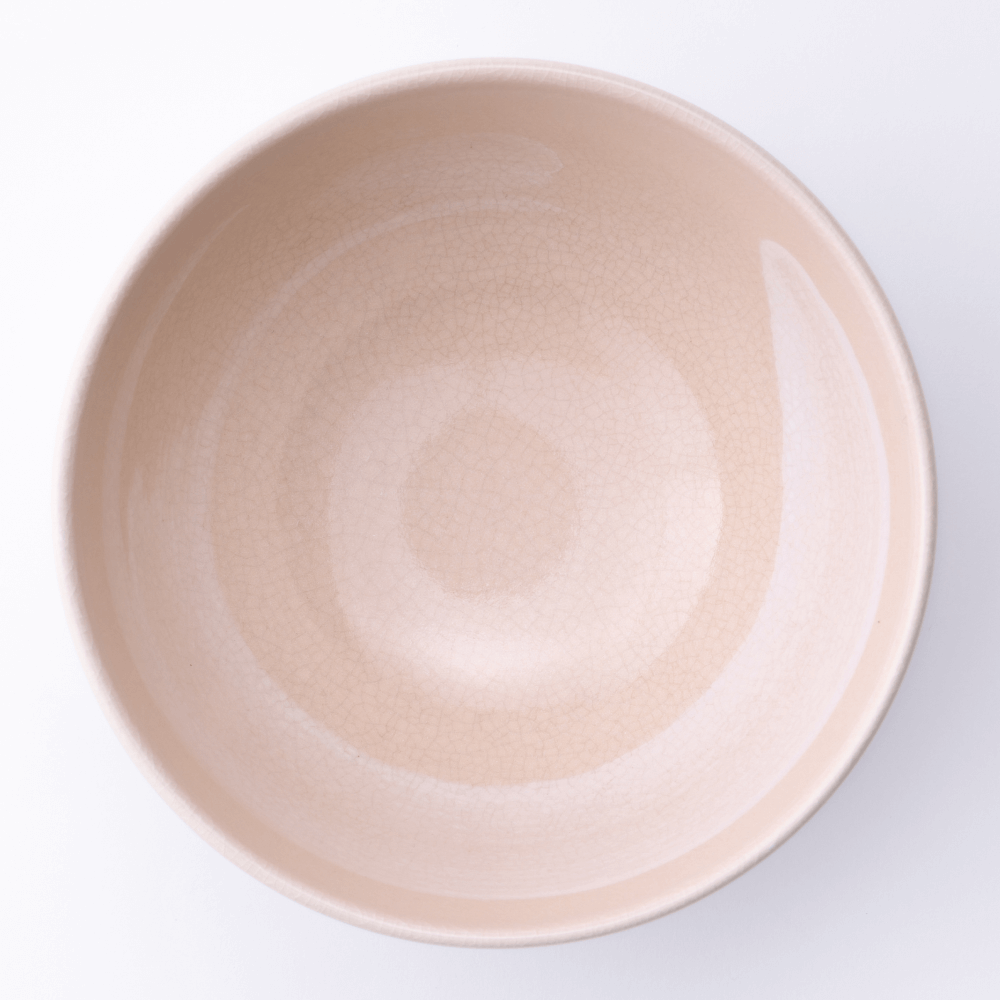
After use
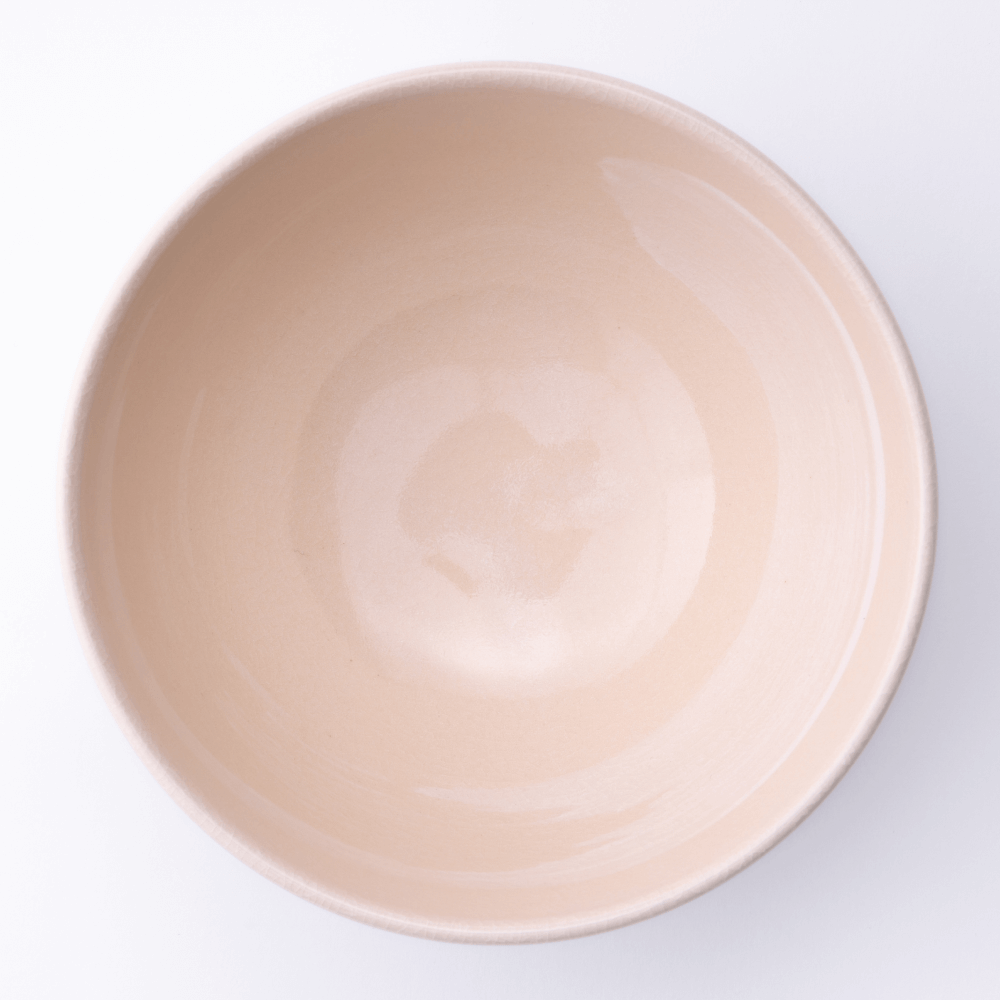
Before use
Gifu is a landlocked prefecture in the mountains in the central region of the main Japanese island. This prefecture is home to one of the most famous and storied traditions of pottery in all of Japan. Mino-yaki encompasses several distinct styles, each highly valued by the tea ceremony for centuries. The artisans producing our tea bowls in this region craft the clay for their works themselves by hand, from soil in the area. 
Beautifully displays matcha’s color.

Subtle seal on the bottom.
|
|
Available | In stock | |
| /products/tea-bowl-with-spout-white | Tea Bowl with Spout - White (Mino-yaki) | Utensils | $200 | This tea bowl comes with a serving spout so that you can whisk matcha and then pour it out into other cups or mugs. |
Size:5.1" × 5.1" × 3.5" Capacity:When full: 15 oz (450 mL) When whisking: 5 oz (150 mL) Accessories:Tea cloth (fukin) Origin:Gifu Prefecture. Japan (Mino-yaki) Note: You can also brew loose leaf Ippodo teas with this bowl as well. See the instructions below. We worked with an artisan to design this bowl with fine details that make everyday matcha delightful. Use this bowl with a spout to whisk up to 3 servings of matcha at once, and then pour into your favorite cups, mugs, and glasses. Handcrafted on a potter’s wheel, it has a deep, wide shape that makes whisking a large batch of matcha simple. The white bowl has a soft appearance. Its light glaze shows the bowl’s texture clearly, and it pairs with any setting. This bowl has a beautiful spiderweb-like crack pattern in the glaze that is almost invisible at first. Over time, the more you make matcha in the bowl, the more this pattern will emerge in a light amber color. The pattern is called kan’nyu, and for centuries tea lovers have praised it as a sign of a well-loved matcha bowl. 
After use

Before use
Gifu is a landlocked prefecture in the mountains in the central region of the main Japanese island. This prefecture is home to one of the most famous and storied traditions of pottery in all of Japan. Mino-yaki encompasses several distinct styles, each highly valued by the tea ceremony for centuries. The artisans producing our tea bowls in this region craft the clay for their works themselves by hand, from soil in the area. Note: The tea cloth (fukin) is 100% cotton, so the color may fade or run when washed. 
Unglazed base is easy to hold.

Contrasting earthenware pokes out at the foot of the bowl.

Designed with a groove along its sides.

Thick glazing forms patterns and textures.

Each handmade bowl is unique.
|
Usucha for a Group (Three Servings)
You can prepare matcha for a number of people all at once using the Tea Bowl with Serving Spout.
/blogs/recipes-to-brew-japanese-tea/usucha-for-a-group-makes-3-servings
1. Sift matcha
6 g (0.21 oz)
4.5 heaping tea ladles or 3 level teaspoons.
2. Add hot water
180 mL (6 oz)
80°C (176°F)
Cool boiling water to 80°C by first pouring it into the tea cups and waiting 1 min.
3. Whisk
15 seconds
Whisk vigorously 15 seconds, making an "M" shape.
4. Serve
Pour into cups
Divide into three cups. Enjoy!
Loose Leaf Teas (Tea Bowl with Spout)
Use the Tea Bowl with Spout to enjoy a slow, relaxed teatime.
/blogs/recipes-to-brew-japanese-tea/loose-leaf-teas-using-tea-bowl-with-spout
1. Measure the leaves
2 - 3 tbsp. (10 - 15 g / 0.35 - 0.53 oz)
Add tea leaves to the tea bowl.
2. Add hot water
200 - 300 mL (7 - 10 oz)
80°C (176°F)
Cool boiling water to 80°C by transferring once.
3. Brew
60 seconds
Brew without stirring or disturbing the tea leaves.
4. Serve
Pour through a tea strainer
Pour out every last drop into your cup or mug.
|
|
Available | In stock |
| /products/tea-bowl-with-spout-black | Tea Bowl with Spout - Black (Mino-yaki) | Utensils | $200 | This tea bowl comes with a serving spout so that you can whisk matcha and then pour it out into other cups or mugs. |
Size:5.1" × 5.1" × 3.5" Capacity:When full: 15 oz (450 mL) When whisking: 5 oz (150 mL) Accessories:Tea cloth (fukin) Origin:Gifu Prefecture. Japan (Mino-yaki) Note: You can also brew loose leaf Ippodo teas with this bowl as well. See the instructions below. We worked with an artisan to design this bowl with fine details that make everyday matcha delightful. Use this bowl with a spout to whisk up to 3 servings of matcha at once, and then pour into your favorite cups, mugs, and glasses. Handcrafted on a potter’s wheel, it has a deep, wide shape that makes whisking a large batch of matcha simple. The black bowl has a rich glaze that beautifully highlights matcha's vibrant color. It is a standout piece that pairs with any setting. Gifu is a landlocked prefecture in the mountains in the central region of the main Japanese island. This prefecture is home to one of the most famous and storied traditions of pottery in all of Japan. Mino-yaki encompasses several distinct styles, each highly valued by the tea ceremony for centuries. The artisans producing our tea bowls in this region craft the clay for their works themselves by hand, from soil in the area. Note: The tea cloth (fukin) is 100% cotton, so the color may fade or run when washed. 
Unglazed base is easy to hold.
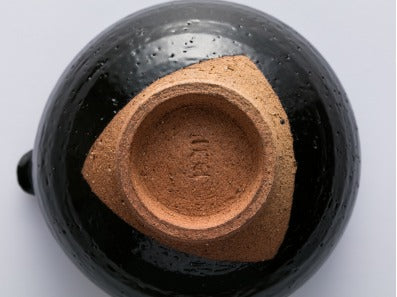
Contrasting earthenware pokes out at the foot of the bowl.
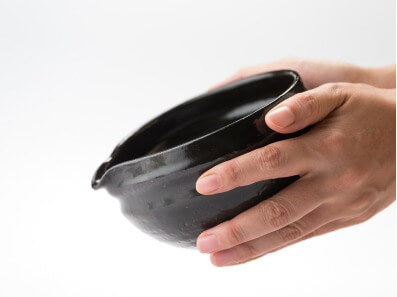
Designed with a groove along its sides.
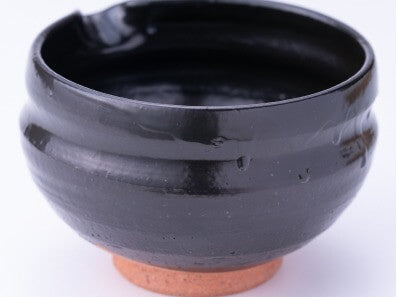
Thick glazing forms patterns and textures.
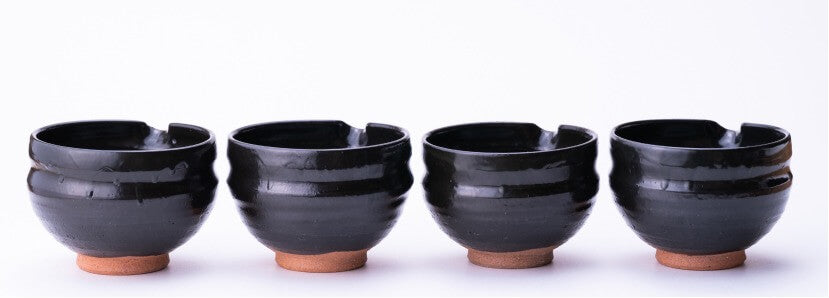
Each handmade bowl is unique.
|
Usucha for a Group (Three Servings)
You can prepare matcha for a number of people all at once using the Tea Bowl with Serving Spout.
/blogs/recipes-to-brew-japanese-tea/usucha-for-a-group-makes-3-servings
1. Sift matcha
6 g (0.21 oz)
4.5 heaping tea ladles or 3 level teaspoons.
2. Add hot water
180 mL (6 oz)
80°C (176°F)
Cool boiling water to 80°C by first pouring it into the tea cups and waiting 1 min.
3. Whisk
15 seconds
Whisk vigorously 15 seconds, making an "M" shape.
4. Serve
Pour into cups
Divide into three cups. Enjoy!
Loose Leaf Teas (Tea Bowl with Spout)
Use the Tea Bowl with Spout to enjoy a slow, relaxed teatime.
/blogs/recipes-to-brew-japanese-tea/loose-leaf-teas-using-tea-bowl-with-spout
1. Measure the leaves
2 - 3 tbsp. (10 - 15 g / 0.35 - 0.53 oz)
Add tea leaves to the tea bowl.
2. Add hot water
200 - 300 mL (7 - 10 oz)
80°C (176°F)
Cool boiling water to 80°C by transferring once.
3. Brew
60 seconds
Brew without stirring or disturbing the tea leaves.
4. Serve
Pour through a tea strainer
Pour out every last drop into your cup or mug.
|
|
Available | In stock |
| /products/chakin | Tea Cloth (Chakin) | Utensils | $12 | Chakin is a cloth used for wiping your tea bowl during the tea ceremony. |
Size:5.9" × 11.8" × 0.1" Material:Hemp Origin:Japan We recommend cleaning handmade matcha bowls (like the Matcha Bowl with Spout) just with water and this soft tea cloth. The cloth is made from hemp, giving it just the right texture to be gentle on precious ceramics. At the same time, it’s sturdy enough to rub off any remaining matcha stuck on the surface. Made in Japan, this tea cloth has also been an important tool in the tea ceremony for generations. |
|
Available | In stock | |
| /products/kaishi-tissue | Kaishi Tissue | Utensils | $5 | Kaishi is a Japanese paper that is used to place sweets on and wipe your fingers with during the tea ceremony. Tea ceremony practitioners will appreciate these basic sheets for use during regular practice. You can also use them at home or the office as a little placemat for sweets. Made for Ippodo Tea, these sheets are decorated subtly with a translucent pine, bamboo, and plum tree design. |
Size:6.9" × 5.7" × 0.1" Quantity:30 sheets Origin:Japan |
|
Available | In stock | |
| /products/hakuji-kyusu-10oz | Hakuji Kyusu (Hasami-yaki) - 10oz | Utensils | $100 | An original Ippodo design, this kyusu teapot produces a delicate, refined taste. We especially recommend it to those looking for their first kyusu. |
Size:5.3" × 5.3" × 3.9" Material:Porcelain Capacity:10 oz (300mL) Origin:Nagasaki Prefecture. Japan (Hasami-yaki) This is Ippodo’s recommendation for your first kyusu. We designed it to be versatile for many types of tea, including delicate Japanese green teas like sencha and gyokuro, black teas, herbal teas, oolong teas, and more. It is easy to wash, and you can even clean it in the dishwasher. Its size brews just enough tea for a regular size mug, making it great for one person. At the same time, you can easily use it to pour into separate smaller Japanese cups like our Porcelain Teacup to serve 3 to 5 people. *We recommend you fill to just above the strainer for 300ml (10 oz) of tea. A kyusu allows you to brew rich and delicious-tasting teas. Delicate, high quality Japanese green teas, like Ippodo’s sencha, gyokuro, and bancha, expand a lot when brewing. Since the spout filter in a kyusu takes up minimal room, the tea leaves inside have plenty of room to expand. The result is a remarkably well-developed, well-balanced cup of tea. Read more about choosing a kyusu: How to pick the perfect teapot. Hasami-yaki has been a famous porcelain tradition since the 1600s, and we chose to work with a skilled Hasami-yaki artisan when designing this Hakuji Kyusu. The brilliant snow-white color of Hasami-yaki porcelain highlights the goldenrod color of our teas. 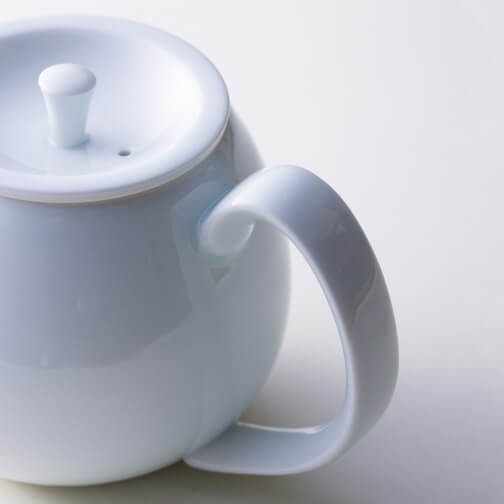 Large, easy-to-grip handle.
Large, easy-to-grip handle.
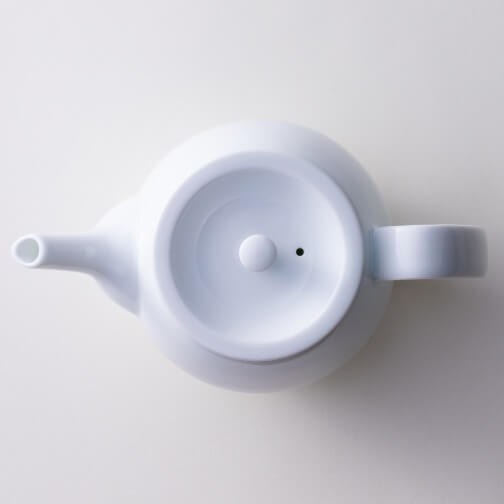 Built with a lid hole in the rear to allow good airflow when pouring.
Built with a lid hole in the rear to allow good airflow when pouring.
 Spacious opening allows you to easily add and remove tea leaves.
Spacious opening allows you to easily add and remove tea leaves.
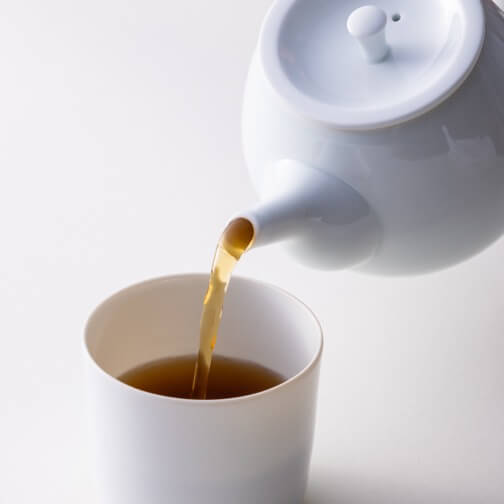 Sleek, long spout pours quickly and cleanly.
Sleek, long spout pours quickly and cleanly.
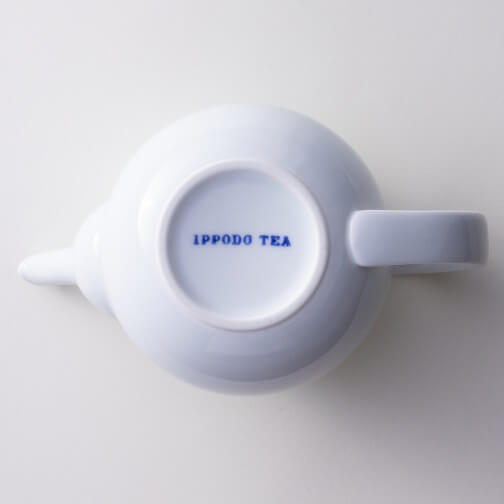 Ippodo logo hand-stamped underneath, before glazing.
Ippodo logo hand-stamped underneath, before glazing.
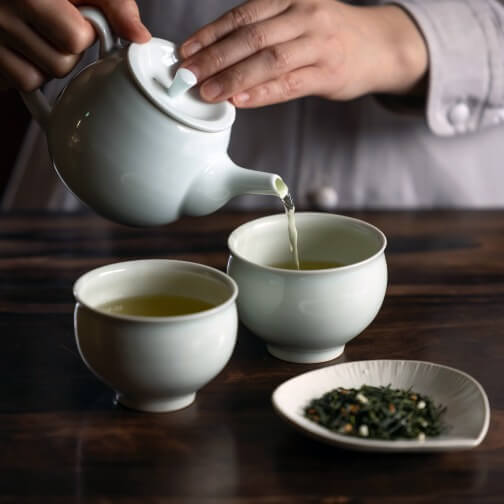 Pairs well with your favorite cups.
Pairs well with your favorite cups.
|
|
Available | In stock | |
| /products/yakishime-kyusu | Yakishime Kyusu (Banko-yaki) - 8oz | Utensils | $230 | An original, completely handmade kyusu with an elegant texture and a functional design. |
Size:2.6" × 2.6" × 3.1" Material:Ceramic Capacity:8 oz (240mL) Origin:Mie Prefecture. Japan (Banko-yaki) Note: Each kyusu is completely handmade and varies slightly in size and volume. We worked closely with an artisan in Mie Prefecture to design this kyusu to fine specification. Made entirely by hand, each of these kyusu is one-of-a-kind—a companion to be cared for and treasured over a lifetime of tea drinking. With a pleasing round shape and textured surface, the design of this teapot is a joy at every session. A tight-fitting lid allows tea to pour quickly without leaking. The spout directs the flow into a quick, smooth arc. And, the interior is finished with white glaze, showcasing the tea leaves inside the pot. Unglazed and made from red clay, this teapot is fired to have a coarse outer texture. Over time, the surface will begin to smooth, gaining a feel and appearance that is unique to your touch. Artisans working in the centuries-old Banko-yaki tradition are known for their kyusu, and the clay in the region is appropriately sturdy and retains heat well. The Banko-yaki artisan who handcrafts our original Yakishime Kyusu works consistently with a beautiful touch. 
Tight fitting lid doesn’t leak even with fast pouring. 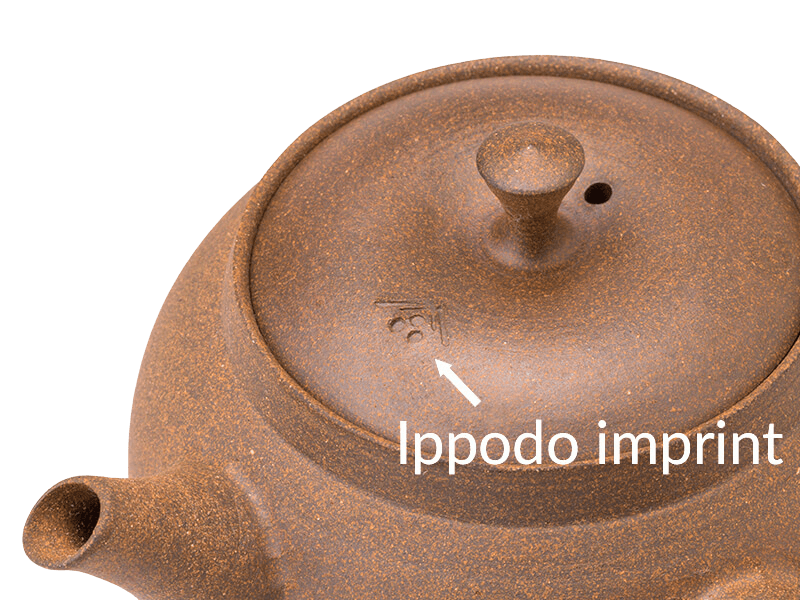
Marked with the Ippodo seal. 
Precise clay strainer pours fast and lets few leaves through. 
Easily inspect tea leaves in between infusions. 
Packaged in an illustrated gift box. 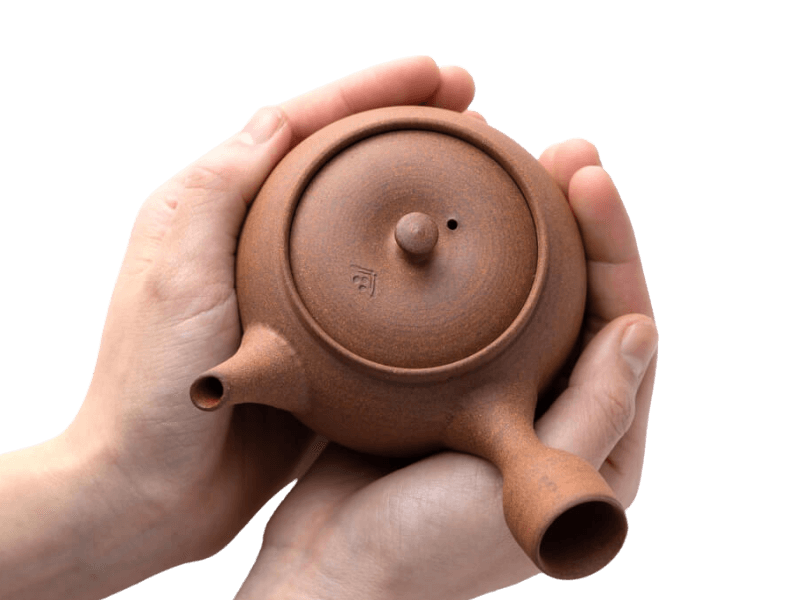
Completely handmade, one-by-one. 
Recommended for sencha, gyokuro, and bancha alike. |
|
Available | In stock | |
| /products/porcelain-kyusu-large | Porcelain Kyusu (Kiyomizu-yaki) - Large 13oz | Utensils | $180 | This kyusu is designed for deliciously brewing bancha teas in quantity every day. |
Notes:
Size:3.5" × 3.5" × 3.6" Material:Porcelain Capacity:13 oz (400mL) Origin:Kyoto Prefecture. Japan (Kiyomizu-yaki) We designed this large porcelain kyusu to be a centerpiece at everyday teatimes, and ever since its release years ago, it has been a staple in our collection. While it works well with sencha and gyokuro, we especially recommend it for bancha teas like Genmaicha - 100g and Hojicha - 100g. Use it to brew around 13 oz (400 ml) at a time and serve cups to the whole family at lunch. Or, if you like to drink a lot of tea, use it to easily brew a large mug for yourself. This kyusu has features that make brewing bancha delightful. Its large size and wide body give space for large bancha leaves to unfurl freely, producing especially fragrant brews every time. The dome-shaped filter in its spout prevents clogging, allows you to pour quickly, while pulling out every last drop of tea from the leaves. Completely handmade to our specifications by an artisan in Kyoto, each of these kyusu is one-of-a-kind—a companion to be cared for and treasured over a lifetime of tea sessions. The Kiyomizu-yaki tradition began in Kyoto City in the 16th century. Works range from beautiful everyday utensils to refined works of art displayed in museums. For our Large Porcelain Kyusu—a favorite for local Kyoto-ites’ daily bancha—we chose to work with an artisan from the Kiyomizu-yaki tradition dear to us in Kyoto.
 Hand-glazed Ippodo seal on the lid.
Hand-glazed Ippodo seal on the lid.
 Wide opening allows easy filling and cleaning.
Wide opening allows easy filling and cleaning.
 Filters tea leaves and allows for fast pouring.
Filters tea leaves and allows for fast pouring.
 Sturdy feel and heft for daily use.
Sturdy feel and heft for daily use.
|
|
Available | In stock | |
| /products/porcelain-kyusu-small | Porcelain Kyusu (Hasami-yaki) - Small 4oz | Utensils | $180 | This small handmade porcelain kyusu excels at drawing out the deep, complex nuances of sencha and gyokuro. |
Notes:
Size:3.8" × 3.8" × 2.4" Material:Porcelain Capacity:4 oz (120mL) Origin:Nagasaki Prefecture. Japan (Hasami-yaki) High-quality Japanese tea deserves a high-quality kyusu. We first developed this small kyusu design decades ago, and ever since, it has been a pillar of our selection. While this kyusu can be used for any type of tea, we use it most often with sencha and gyokuro green teas. At home, we turn to this teapot for concentrated tea sessions alone or with a few others. It brews around 4 oz (120 ml), for one to three small cups of tea. Its small, wide shape allows us to bring out the full nuanced character of delicate sencha and gyokuro teas. Completely handmade to our specifications by an artisan in Nagasaki Prefecture, each of these kyusu is one-of-a-kind—a companion to be cared for and treasured over a lifetime of tea sessions. Hasami-yaki has been famous for its porcelain since the 1600s, and we chose to work with a skilled Hasami-yaki artisan when designing our Small Porcelain Kyusu and Teacups. The brilliant snow-white color of Hasami-yaki porcelain highlights the goldenrod color of our teas.
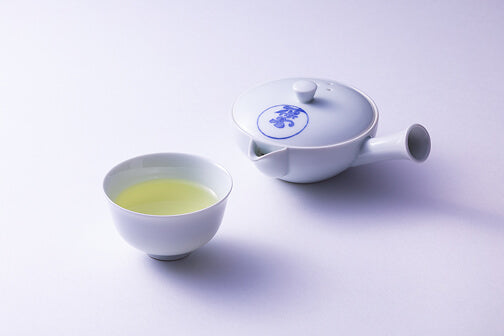 Pair with matching Porcelain Tea Cups.
Pair with matching Porcelain Tea Cups.
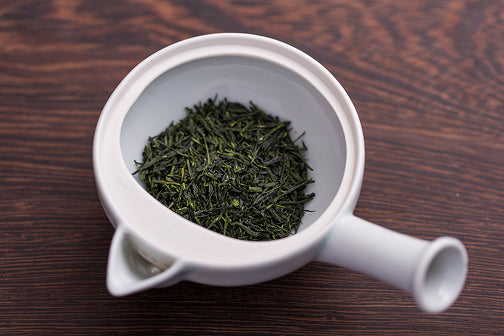 Flat, wide design allows delicate sencha and gyokuro leaves to unfurl.
Flat, wide design allows delicate sencha and gyokuro leaves to unfurl.
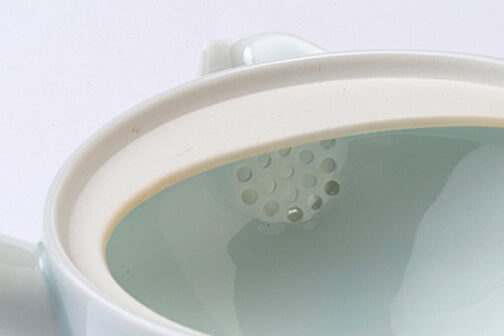 Filters leaves and coaxes out every last drop of tea.
Filters leaves and coaxes out every last drop of tea.
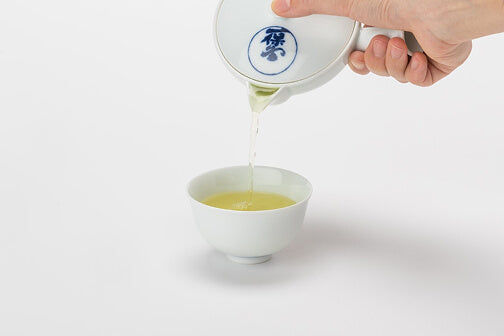 Easy to hold and pour with one hand.
Easy to hold and pour with one hand.
|
|
Available | In stock | |
| /products/porcelain-tea-set | Porcelain Tea Set (Hasami-yaki) | Utensils | $300 | A fully handmade tea set that beautifully brews and serves sencha and gyokuro for up to five. |
Notes:
Material:Porcelain Capacity:4 oz (120mL) - Teapot, 3.5 oz (100mL) - Teacup Origin:Nagasaki Prefecture. Japan (Hasami-yaki) High-quality Japanese tea deserves a high-quality kyusu. We first developed this small kyusu design decades ago, and ever since, it has been a pillar of our selection. While this kyusu can be used for any type of tea, we use it most often with sencha and gyokuro green teas. At home, we turn to this teapot for concentrated tea sessions alone or with a few others. It brews around 4 oz (120 ml), for one to three small cups of tea. Its small, wide shape allows us to bring out the full nuanced character of delicate sencha and gyokuro teas. Completely handmade to our specifications by an artisan in Nagasaki Prefecture, each of these kyusu is one-of-a-kind—a companion to be cared for and treasured over a lifetime of tea sessions. Ippodo tea served in these cups shines with a brilliant goldenrod color. The cups are lightweight and shaped with a slightly curved lip that elevates your tea’s texture. A blue line decorates the foot, and the seal underneath the base reads “Ippodo.” Five teacups are included for serving guests. For delicate gyokuro and sencha, use the cups to measure and cool boiling water by transferring it to new cups before brewing. Completely handmade to our specifications by an artisan in Nagasaki Prefecture, each of these porcelain tea sets is one-of-a-kind—a companion to be cared for and treasured over a lifetime of tea sessions. Hasami-yaki has been famous for its porcelain since the 1600s, and we chose to work with a skilled Hasami-yaki artisan when designing our Small Porcelain Kyusu and Teacups. The brilliant snow-white color of Hasami-yaki porcelain highlights the goldenrod color of our teas.
 A matching set to elevate teatime for you and your guests.
A matching set to elevate teatime for you and your guests.
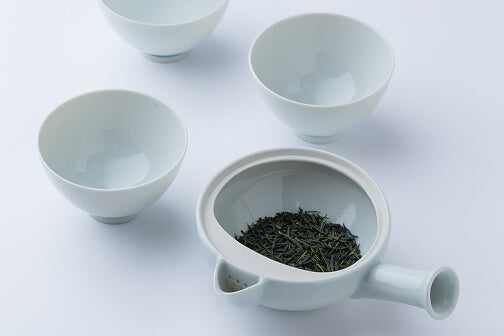 Cool hot water for gyokuro by transferring from cup to cup.
Cool hot water for gyokuro by transferring from cup to cup.
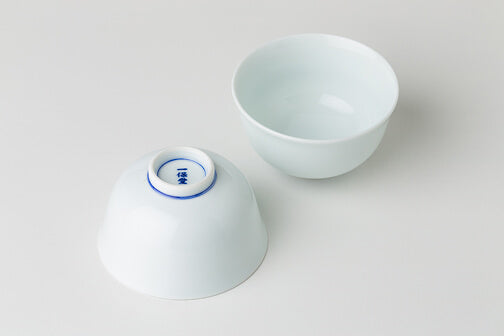 Ippodo’s seal on the base of each cup.
Ippodo’s seal on the base of each cup.
 Flat, wide design allows delicate sencha and gyokuro leaves to unfurl.
Flat, wide design allows delicate sencha and gyokuro leaves to unfurl.
 Easy to hold and pour with one hand.
Easy to hold and pour with one hand.
 Teacups enhance tea’s texture, aroma, and color.
Teacups enhance tea’s texture, aroma, and color.
|
|
Available | In stock | |
| /products/porcelain-teacup | Porcelain Teacup (Hasami-yaki) | Utensils | $30 | Our original teacup in brilliant white porcelain. This cup elevates tea’s texture, aroma, and vibrant color. |
Size:3" × 3" × 1.9" Material:Porcelain Capacity:3.5 oz (100mL) Origin:Nagasaki Prefecture. Japan (Hasami-yaki) This original Ippodo teacup displays the true vibrant color of any tea it holds, thanks to the brilliant snow-white porcelain of Hasami-yaki. We designed this cup with a slightly curved lip that elevates tea’s texture and fragrance. Held in your fingers, it feels sturdy and soft. Each cup is crafted by hand and matches our Small Porcelain Kyusu.
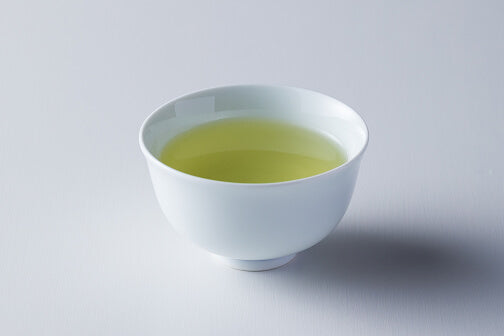 Simple and refined design.
Simple and refined design.
 Perfect for guests.
Perfect for guests.
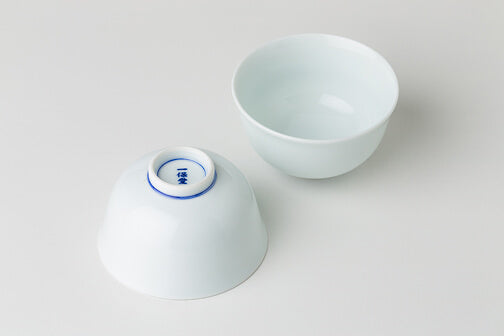 White porcelain with a touch of indigo.
White porcelain with a touch of indigo.
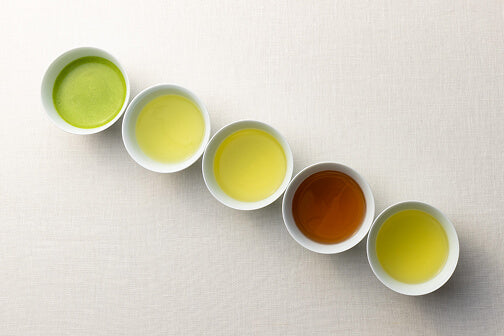 Serve any tea beautifully.
Serve any tea beautifully.
Hasami-yaki has been famous for its porcelain since the 1600s, and we chose to work with a skilled Hasami-yaki artisan when designing our Small Porcelain Kyusu and Teacups. The brilliant snow-white color of Hasami-yaki porcelain highlights the goldenrod color of our teas. |
|
Available | In stock | |
| /products/carafe | Carafe | Utensils | $39 | Having one of these quart-size carafes in the fridge is handy. Use it to brew and serve cold teas easily. |
Size:2" (mouth) × 3.3" × 10.6" Material:Glass Thermal:up to 248°F (120°C) Capacity:1 qt. (1L) Origin:KINTO Japan (made in China) Prepare Japanese tea for the dining table or guests right away simply by placing your favorite teabags in the carafe and adding hot water. This saves time, reduces the number of dishes to wash, and is an easy way for anyone to brew tea. The carafe comes with a lid, and the large opening makes removing teabags and cleaning easy. You can also quickly prepare a liter of tea by using a kyusu to brew the same leaves three times. Pour and combine each brew into the carafe until full. Using the carafe as a pitcher, keep it in the refrigerator, and serve cold Japanese tea whenever you like. Both lid and carafe are made of highly transparent glass, allowing you to fully appreciate the color of the tea and anticipate its delicious taste. Use this cleanly-designed carafe in the home, for special gatherings, or at your workplace. 
Brew tea easily with teabags!Wide opening for easy cleaning. 
Simple white logo.A tea jar and flower design is beautiful when the carafe is filled with tea, or any kind of beverage. 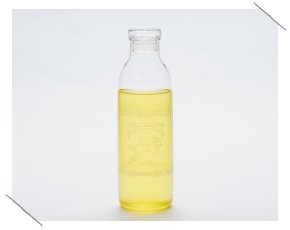
Makes a good pitcher.Can also be used as a pitcher for holding tea poured from a kyusu. 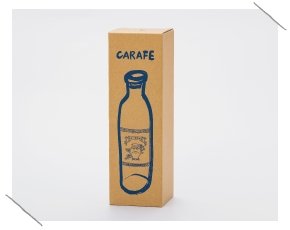
Box with carafe motif.Comes in a box with a fun design, making this a good present. |
|
Available | In stock | |
| /products/glass-teapot | Glass Teapot - 24oz | Utensils | $38 | Glass teapots make it fun to watch the tea leaves while the tea brews. Japanese green tea is very close to newly-picked tea, and the vivid green of the unfurling leaves shows how full of vigor they are. Seeing the tea brew adds visual delight to the process of preparing tea. |
Size:3.1" × 3.1" × 4.9" Material:Glass Thermal:up to 248°F (120°C) Capacity:24.3 oz (720mL) Origin:KINTO Japan (made in China) In contrast to the Hakuji Kyusu and Yakishime Kyusu teapots that are custom-designed to bring out the best in Ippodo teas, this is an all-purpose teapot suitable for all sorts of teas. For someone likes to drink a variety of teas, Japanese green tea from Ippodo is one of the variations that makes teatime a pleasure. We recommend this as a suitable everyday teapot for preparing all sorts of teas. 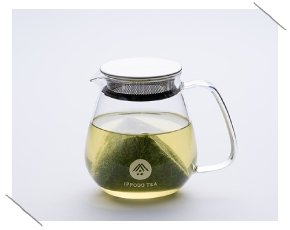
Plenty of space for teabags.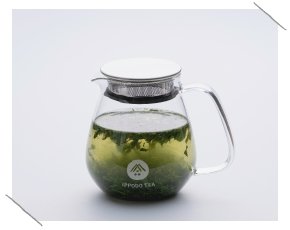
Watch the tea leaves unfurl!
Makes a good pitcher.Even if you use your usual kyusu teapot to prepare the tea, the glass teapot makes a good pitcher. 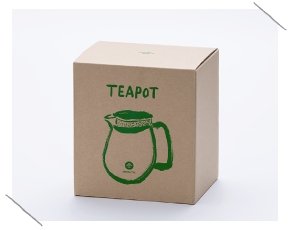
Box with teapot motif.A box with a teapot motif makes this a good present. 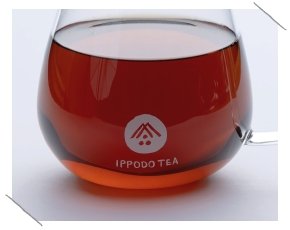
Low-key white logo.Ippodo logo begins to stand out when the tea gains color. 
Barley Tea 
Black Tea 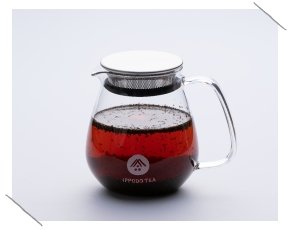
Green Tea 
Tea Bags 
|
|
Available | In stock | |
| /products/ippodo-tea-gift-card | Digital Gift Card | Gift Cards | $25 | Give the gift of great tea and unlimited choice with an Ippodo Tea virtual gift card. A perfect present for tea lovers in your life. |
Virtual card
No expiration date
Sent immediately by email
Exclusive to the Ippodo Tea USA & Canada Online Shop
Note: This card is only useable on IppodoTea.com, and it cannot be used on the Ippodo Tea Global Online Store nor in Ippodo retail stores. The Ippodo gift card won’t expire and applies to all of the products in the shop. Virtual gift cards are available in amounts of $25, $50, and $100, and redeemable exclusively online at Ippodotea.com. Note: Gift Cards are virtual in nature. You will not receive a physical card - you will receive an email with a unique 16-digit code. Please do not lose this code, you can either forward our email to the recipient or use the code yourself. |
|
Available | Unavailable | |
| /products/bamboo-tea-ladle-chashaku | Bamboo Tea Ladle (Chashaku) | Utensils | $13 | The chashaku is a bamboo tea ladle used for scooping and measuring matcha powder. |
Size:7.3" × 0.25" × 0.13" Material:Bamboo Origin:China The chashaku is a ladle or a scoop designed specifically for matcha. Its curved tip and its sharp, nearly 90-degree angle help us reach into narrow matcha containers and pull out the right amount of powder. It also feels nice to use, as the bamboo material is soft to the touch. Each is meticulously carved and shaped from one piece of bamboo. Since bamboo is a natural material, the appearance and shape of each chashaku will slightly vary. The chashaku is originally one of the traditional tools used in the matcha tea ceremony. Our version is a comfortable, functional one meant for daily use rather than rigid, formal ceremonies. In a world where everything is done to precise measurement, making matcha with a chashaku is beautifully imprecise. For a classic serving of usucha (standard matcha), we measure one and a half heaping ladles of matcha powder, which is about 2 g. Some days, our measurements will be bigger, and some days, they will be smaller. We appreciate the unique beauty of each and every matcha drink that results. |
Chashaku (Tea Ladle) Care
Follow these tips to keep your Chashaku in optimal condition.
/blogs/recipes-to-brew-japanese-tea/chashaku-pointers
1. Clean
Wipe clean with a soft, dry cloth or tissue after use.
2. No rinsing!
Do not use water or soap when cleaning. A wet chashaku will absorb matcha powder.
|
|
Available | In stock |
| /products/tokoname-yaki-black-kyusu-teapot | Black Kyusu Teapot (Tokoname-yaki) - 8oz | Utensils | $100 | A beginner-friendly kyusu with a sleek black color and a smooth texture. |
Size:3" × 3" × 4.3" Material:Ceramic Capacity:8 oz (240mL) Origin:Aichi Prefecture. Japan (Tokoname-yaki) Note: Each kyusu may vary slightly in size and volume. High-quality Japanese tea deserves a high-quality kyusu. We designed this kyusu in collaboration with a Tokoname-yaki artisan to be a wonderful first kyusu for newcomers to loose-leaf Japanese teas. Of course, experienced tea drinkers will also appreciate its reliable performance in everyday sessions. The black clay used for this kyusu gives it a sleek appearance and a texture that feels soft to the touch. It is designed with a wide body, which allows you to easily add and remove tea leaves and gives the leaves plenty of room to expand while brewing. It holds around 8 oz, a convenient size for preparing all types of Japanese tea, from refined gyokuro and sencha teas to aromatic bancha teas. Tokoname is a small city in Aichi Prefecture with a pottery tradition that goes back to the 12th century. Tokoname-yaki kyusu are held in high esteem, since the clay in this area is lightweight, has good thermal properties, and feels soft to the touch. 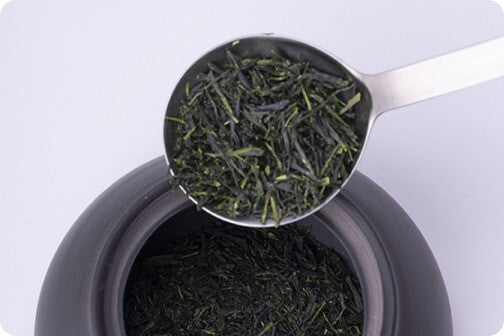 Wide opening allows you to easily add leaves.
Wide opening allows you to easily add leaves.
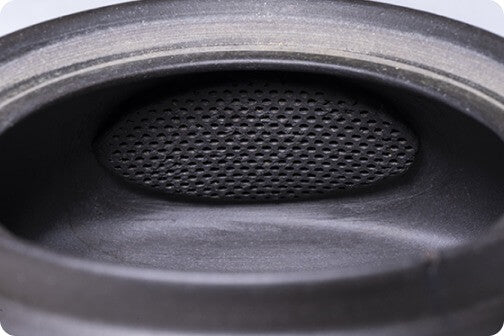 Fine ceramic filter built into the spout.
Fine ceramic filter built into the spout.
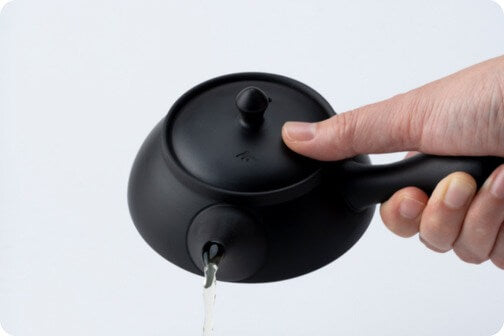 Tight-fitting lid doesn’t leak even when pouring fast.
Tight-fitting lid doesn’t leak even when pouring fast.
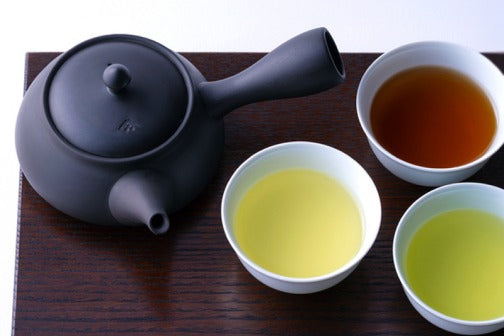 Suitable for all types of Japanese tea.
Suitable for all types of Japanese tea.
 Sleek black color highlights your tea leaves.
Sleek black color highlights your tea leaves.
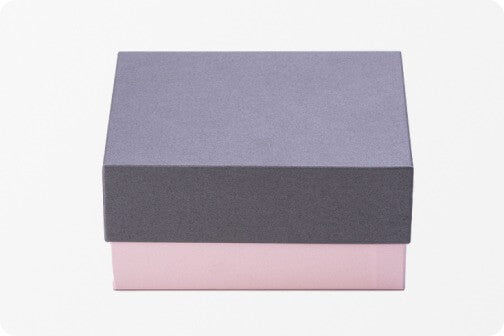 Comes in a minimalist gift box
Comes in a minimalist gift box
|
|
Available | In stock | |
| /products/tokoname-yaki-black-kyusu-teapot-left-handed | Left-handed Black Kyusu Teapot (Tokoname-yaki) - 8 oz | Utensils | $100 | A beginner-friendly kyusu with a sleek black color and a smooth texture. |
Size:3" × 3" × 4.3" Material:Ceramic Capacity:8 oz (240mL) Origin:Aichi Prefecture. Japan (Tokoname-yaki) Note: Each kyusu may vary slightly in size and volume. High-quality Japanese tea deserves a high-quality kyusu. We designed this kyusu in collaboration with a Tokoname-yaki artisan to be a wonderful first kyusu for newcomers to loose-leaf Japanese teas. Of course, experienced tea drinkers will also appreciate its reliable performance in everyday sessions. The black clay used for this kyusu gives it a sleek appearance and a texture that feels soft to the touch. It is designed with a wide body, which allows you to easily add and remove tea leaves and gives the leaves plenty of room to expand while brewing. It holds around 8 oz, a convenient size for preparing all types of Japanese tea, from refined gyokuro and sencha teas to aromatic bancha teas. Tokoname is a small city in Aichi Prefecture with a pottery tradition that goes back to the 12th century. Tokoname-yaki kyusu are held in high esteem, since the clay in this area is lightweight, has good thermal properties, and feels soft to the touch.  Wide opening allows you to easily add leaves.
Wide opening allows you to easily add leaves.
 Fine ceramic filter built into the spout.
Fine ceramic filter built into the spout.
 Tight-fitting lid doesn’t leak even when pouring fast.
Tight-fitting lid doesn’t leak even when pouring fast.
 Suitable for all types of Japanese tea.
Suitable for all types of Japanese tea.
 Sleek black color highlights your tea leaves.
Sleek black color highlights your tea leaves.
 Comes in a minimalist gift box
Comes in a minimalist gift box
|
|
Available | In stock | |
| /products/shincha-set-kyusu | Shincha 2025 & Kyusu Set | Sencha | $135 | This set includes Shincha and our brand-new Black Kyusu, a beginner-friendly teapot. |
Shelf life:Consume quickly Serving size:10 g / 0.35 oz (~2 Tbsp.) Size:Bag: 5.5" × 2.8" × 6.8" Kyusu: 3" × 3" × 4.3" Net weight:3.5 oz (100 g) Note: Limited quantity available. Each spring, as the weather starts to warm, the tea fields in the mountains south of Kyoto begin to awaken. The tea plants that huddled up, storing their energy and nutrients over the cold, long winter, begin to put out tiny green buds. Over the course of a month, these buds start to grow, reaching up and up for the wide blue sky. When the time is right, tea farmers get busy harvesting the spry new leaves.
  At Ippodo, we blend selected fresh new sencha harvests to produce our Shincha tea each year. This limited release is only available for a short time in early summer. In the mountainous environment where the trees grow, small changes in the weather day-to-day affect the nuances that develop in the tea. As a result, the distinctive character of this year’s Shincha will never be repeated. Shincha 2025’s highlight is its brilliant, soaring fragrance. It’s classic Shincha: sunny, fresh, and vivid green. In the cup, its umami is robust, concentrated, and satisfying. The savory notes linger long after you swallow, while the dry, astringent notes are relatively light, making this an accessible year for beginners. Its aroma reminds us of snap peas, tomato vine, and fresh-cut grass. Visually, its beautiful vibrant leaves and golden brew color make this year’s Shincha a treat for the eyes as well. For first-timers, this year is a classic introduction to Shincha, full of energy and green freshness. Longtime fans will enjoy its vivid fragrance, balanced taste, and complexity over many brews. The freshest tea deserves a delicious brew. Fully experience the depths of your Shincha by brewing it in a kyusu teapot. This set includes 10 sessions’ worth of Shincha and the brand-new Black Kyusu. For soft, delicate Japanese green teas like Shincha, even a slight change in brewing variables can dramatically affect the flavor in the cup. A kyusu is designed to help you brew these sensitive teas. (Though, it can also be used for other teas as well!) The key is in the filter built into the spout, allowing you to brew without a restrictive filter basket or ball. The design allows the tea leaves to expand easily, releasing their full fragrance and deep nuances. Each of our kyusu are designed in cooperation with artisans in Japan. The kyusu we chose for this set is the beginner-friendly Black Kyusu, developed with an artisan in the Tokoname-yaki tradition in Aichi prefecture. |
Standard Shincha Brew
Our standard recipe for brewing loose-leaf Shincha. Discover the vibrant and energetic quality of these freshly harvested tea leaves.
/blogs/recipes-to-brew-japanese-tea/standard-shincha-brew
1. Measure the leaves
2 tbsp. (10 g / 0.35 oz)
Add tea leaves to a kyusu or teapot.
2. Add hot water
210 mL (7 oz)
80°C (176°F)
Cool boiling water to 80°C by transferring once.
3. Brew
40 seconds
Brew without stirring or disturbing the tea leaves.
4. Serve
Pour out every last drop.
Enjoy in your favorite teacup or mug.
Iced Shincha
Fresh Shincha, served the most refreshing way possible: in a tall glass of ice.
/blogs/recipes-to-brew-japanese-tea/iced-shincha
1. Measure the leaves
2 tbsp. (10 g / 0.35 oz)
Add tea leaves to a kyusu or teapot.
2. Add hot water
210 mL (7 oz)
90°C (200°F)
Pour hot water to cover tea leaves.
3. Brew
50 seconds
Brew without stirring or disturbing the tea leaves.
4. Serve over plenty of ice
Pour out every last drop.
Enjoy in your favorite glass, teacup or mug.
Cold Brew Sencha
Cold brew with just ice and clean water to bring out sencha's full lushness, natural sweetness, and umami.
/blogs/recipes-to-brew-japanese-tea/cold-brew-sencha
1. Measure the leaves
2 tbsp. (10 g / 0.35 oz)
Add tea leaves to a kyusu or teapot.
2. Add ice water
210 mL (7 oz)
Chilled water
Pour chilled water to cover tea leaves.
3. Brew
15 minutes
Brew without stirring or disturbing the tea leaves.
4. Serve
Pour out every last drop
Enjoy in your favorite glass, teacup, or mug.
|
filterTypeLimited
|
Sold out | This seasonal tea is currently sold out. It will be available again next Spring. |
